‘Anansi‘

The National Drama Company’s storytelling through sound
Sunday, July 09, 2023
 Al Creighton in what his colleagues called his natural element as he plays the drums during a recording session for ‘Anansi’ (Photos by Shaniece Bamfeild)
Al Creighton in what his colleagues called his natural element as he plays the drums during a recording session for ‘Anansi’ (Photos by Shaniece Bamfeild)
Promoting inclusive education for all Guyanese
 By Marissa Foster
By Marissa Foster
INCLUSIVE Education
Project or “Project Inc” is aimed at raising awareness about intellectual disabilities among teachers and the public with the primary goal of ‘Promoting Diversity, Equity and Inclusion by Influencing Educational Transforma -
tion.’ Project Inc is funded by the U.S. Department of State through the Alumni Engagement Innovation Fund (AEIF). A group of Alumni of the U.S Embassy’s (Georgetown) Youth Ambassadors Program was granted this funding to implement a project targeting Inclusive Education across Guyana.The Alumni
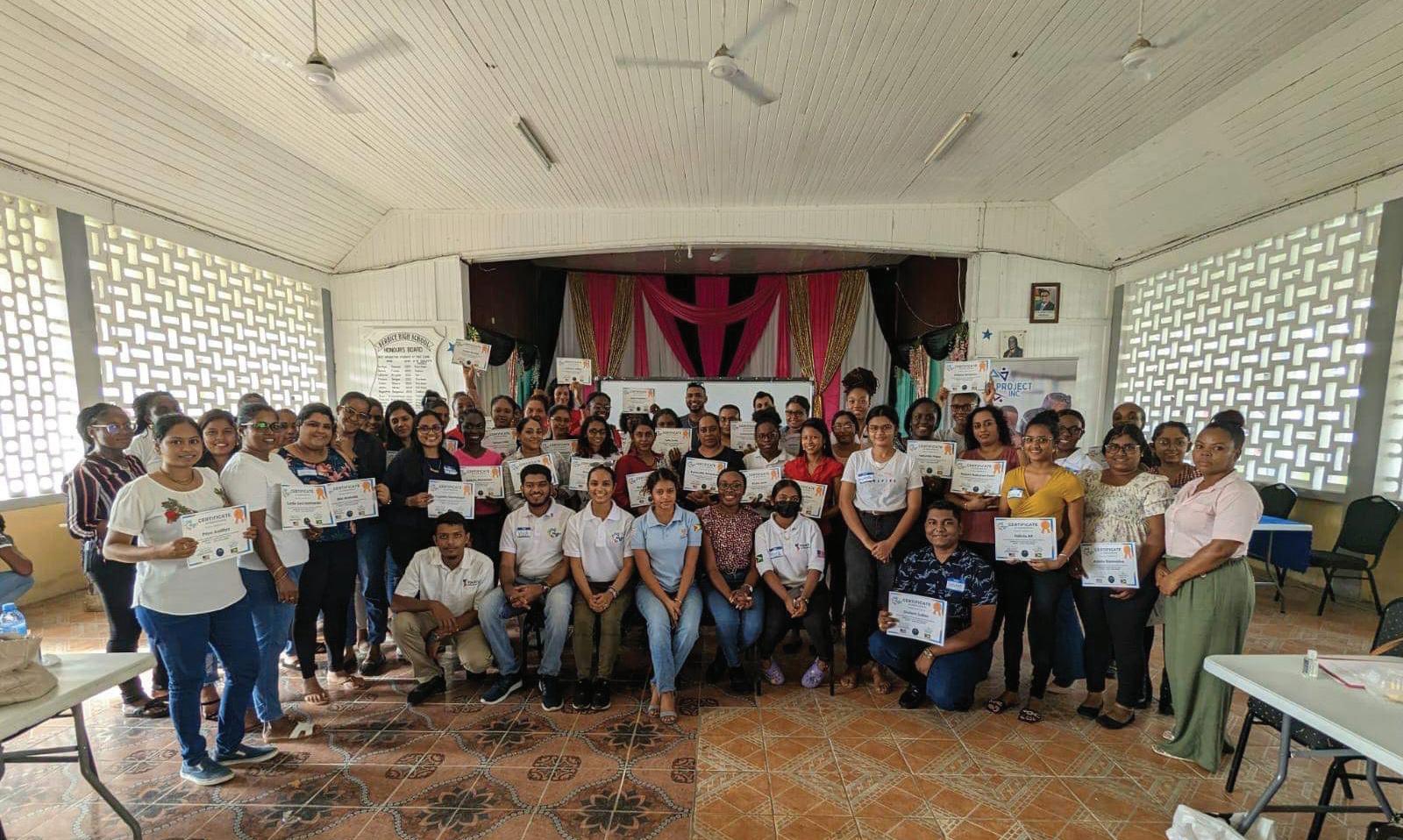

Engagement Innovation Fund (AEIF) is designed to increase the impact of the U.S. Government’s investment in exchange participants and programs by helping alumni develop and implement projects that support U.S. foreign policy objectives, promote shared interests, and benefit local communities. With
that in mind, Project Inc is specifically tailored and aimed to empower and equip teachers, education stakeholders and the public with the knowledge and skills needed to identify and respond to specific learning disabilities in a manner that will enable them to foster inclusivity in classrooms in
Guyana.
The project is being implemented in phases. A social media campaign was launched to educate the public on inclusion and learning disabilities. Subsequently, workshops are being held for pre-service and in-service trainee teachers at the Cyril Potter College of Education
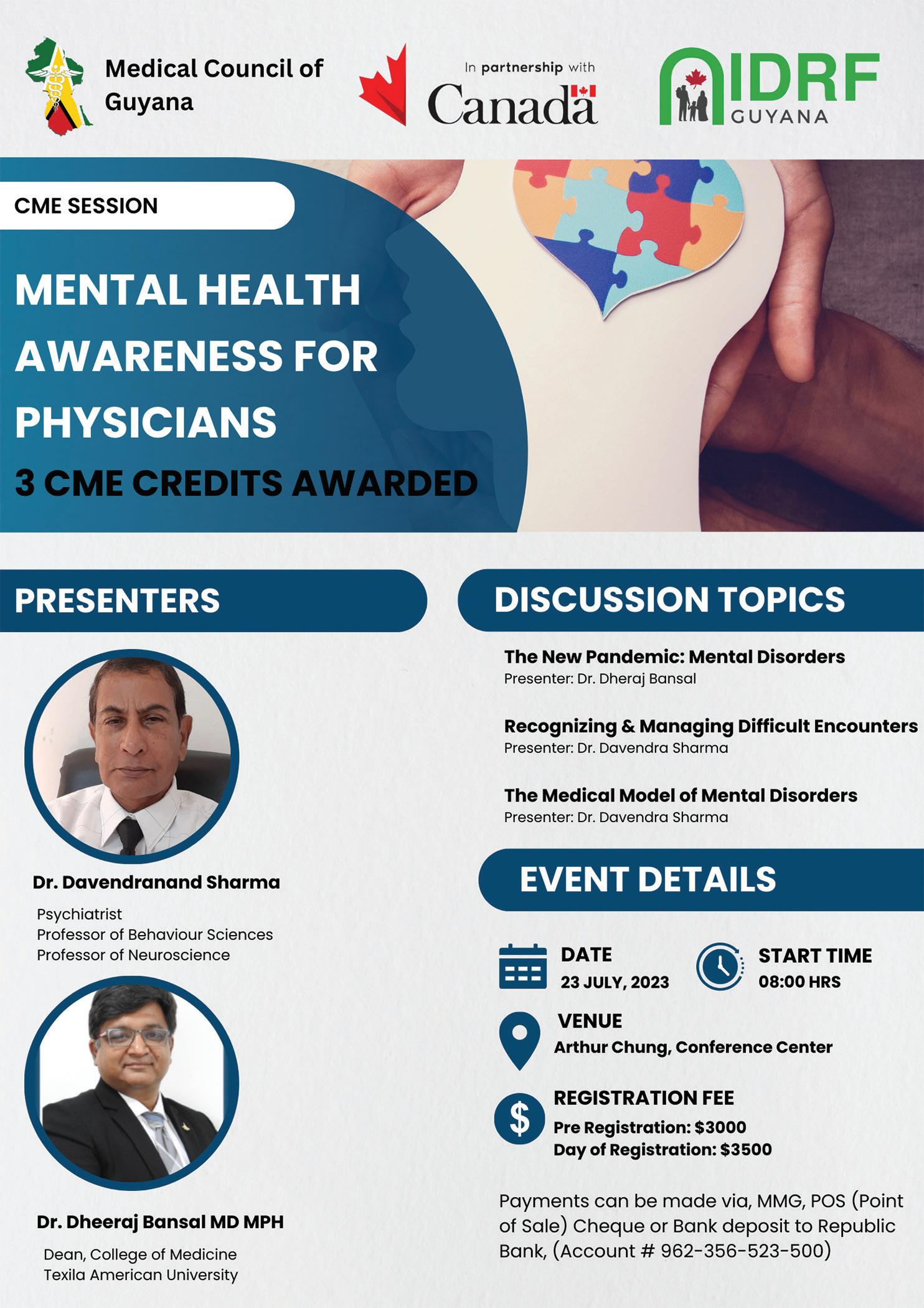
(CPCE) and teachers from schools within Regions Six and Ten. Over the course of six months, 200 teachers residing in Georgetown, Berbice, and Linden will receive training in the aforementioned areas. The project
SEE PAGE XVIII
II CHRONICLE PEPPERPOT Sunday, July 09, 2023
Coordinating team of Project Inc; Youth Ambassador Alumni (20152019)
50 Teachers from across New Amsterdam successfully participated in a two-day workshop on Learning Disabilities and Inclusive Education Workshop on May 20th and 21st, 2023
‘Anansi‘
The National Drama Company’s storytelling through sound
ANANSI : the spider, the trickster, the man. His tales of cunning and mischief have interested children for generations, from the tales dating back to African folklore in places like Ghana. The stories of Anansi have managed to survive and become a part of Guyanese and Caribbean culture as we know it. And in recent times has made its mark by stepping out of mere storytelling tradition and becoming a part of the curriculums taught in schools. Tales like these will become a part of our people. And it is tales of the people that
they have been dormant. After producing Ti-jean and his brothers, members of the NDC say that even while they were facilitating students, the plays had become performances that adults enjoyed just as well.
Ayanna Weddell, who is a part of both the NDC as well as at EDYOU FM, played a primary role in connecting drama and education. She explained how after seeing the need for the dramatic reenactment of the plays, at EDYOU, she turned to the NDC with a chance to educate and perform. “Here at EDYOU FM one of my
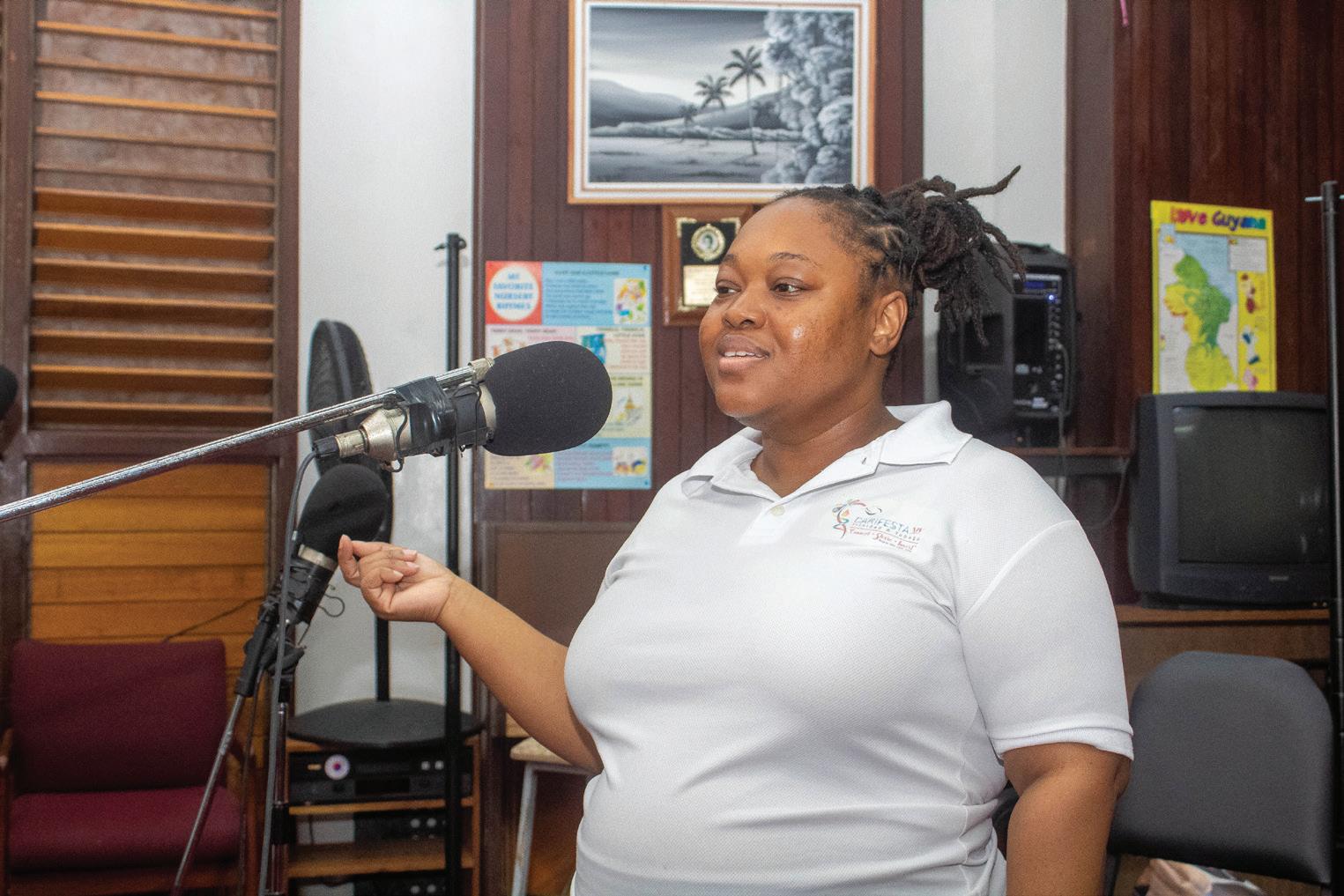
productions like these have on the students. Catering to both theater arts and English B students, Al stated that although not a stage performance, it serves many of the same purposes. And it is just as captivating. “We have a history of doing plays that will help students doing English B. We have done ‘Lion on a Jewel’, ‘The Tempest’ and we have done ‘Ti-jean and his brothers’ on stage so that the students could actually see the play live and that always helps when studying the play as literature,” he explained.“Anansi is now on the syllabusand we decided to
that radio is an entirely new discipline that requires different tasks from the actors. ”When you are doing a play on stage, there are certain things you take for granted because there is an audience looking at it. But for radio, the audience can only hear. So everything that you want to tell the audience you have to tell them through sound. So you have to do the play in such a way that the audience can follow it clearly without seeing anything.”
the National Drama Company (NDC) seeks to tell.
Sometime ago, members of the NDC saw the profound need and opportunity to produce the plays taught in schools. It was done with the curriculum of schools in mind, and as such, they worked together to create captivating recorded versions of plays like ‘Ti- Jean and his brothers’ and ‘The Tempest’. Al Creighton, Ayanna Waddell, Tashandra Innis, along with the actors and various other members of the NDC, are now in the making of the legendary story of Anansi.
After the COVID-19 lock down and resulting momentary stand still in Guyana, everyone felt its impact. But the drama industry in Guyana took an especially hard blow. With the restrictions placed on gatherings, only in February did the NDC return to the stage with the play ‘Sauda’. But that doesn’t mean that
tasks is that I have to ensure we have programming for the schools. We are now venturing into the secondary schools. So we have evolved as a unit and we have to fill that gap,” she said. “We focus on the primary level with broadcasts to schools. So now we have the higher secondary levels to reach. And that was where the NDC came in. Because I know we do drama for schools. But because of COVID, we, the NDC, haven’t returned to the stage as yet. And knowing that I still have the means to reach the students through radio, it was a ripe opportunity to bridge those two things. And next year we are hoping to do a stage performance.”
Bringing the story to the radio
start by doing it on the radio. To help the students, we said let’s do it on radio so that they could at least listen to it. For the theater arts students, they could listen to Aansi because it is a performance and that would help them fulfill the obligation of critiquing performances.”

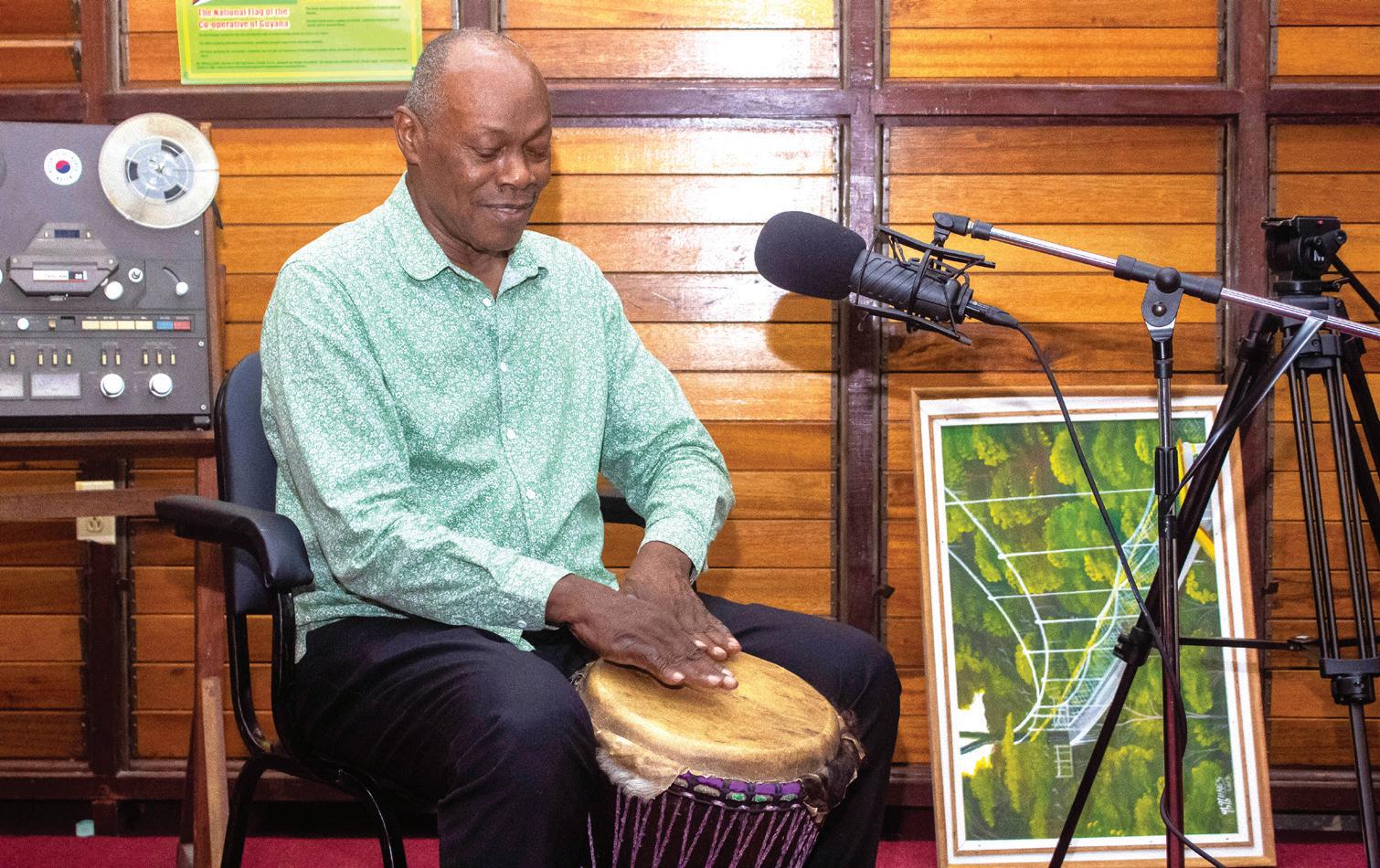
Whether on stage or on the radio, putting together performances have its own host of unique intricacies. The different major factors, as Ayyana explained, lay in the technical aspects of radio production. “On stage, you marry everything live and you see it and hear it. But in the studio, you have the unique opportunity to have the actors come and lay down their voices. The musicians can come and do what they have to do and then the editor can put that in the software and put everything together,” she said.From a playwright’s perspective, Al emphasized
Also sharing his views was Nickose Layne, who plays the role of Anansi himself. As an actor, he stated how drastically different radio productions are for him. “I want to do more plays on the radio. It kind of feels like marrying some elements of the stage with some elements of film. With filmmaking, you rehearse and then you shoot. With radio you rehearse and then you record. With stage you are big, with film your acting is more laser-sharp, stage is more flood lights. I think radio for the acting wasn’t like film, it was like stage. Because people can only get what you convey through your voice. It feels like marrying a film with a stage play and putting it on the radio. And it was so cool,” he described.
Wider audience
Initially, the plays were done with and advertised towards students. But it is becoming clear that they have reached beyond those studying them. According to Ayanna, they are working to change the perception of drama to everyone in Guyana. “Where the Guyanese audience is concerned, it’s not until they are introduced to something that they know they like it. On the outside, they ask, ‘What is that?’ but when you package it and you share it is like, ‘Oh! This is fascinating’,” she said. Sharing similar sentiments, Al stated, “While we have an objective of helping the students, We don’t want them alone to be our audience. We always go for a wider general audience and we perform for a wider general audience. And we perform for a wider general audience. Along the way, the student will benefit. In fact we would prefer it if people other than the school kids listen to it.”
The plays, both recorded and stage performed sprang from a need, and the NDC took the opportunity to fulfill that need. In talking to the students and teachers, Ayanna stated that it could be said that they completed the task they had set forward to and much more. The team now
moves into the final production stage, adding music and perfecting the sound and editing. Members of the NDC say that the public could expect the release of ‘Anansi’ by mid-July.
Tashandra Inniss, President of the NDC told the Pepperpot Magazine how she felt and what the public could look forwards to saying, “These productions will be ongoing and as a company, we not only cater to schools but the wider public so our aim is to bring back more stage productions come 2023 and we also hope to stage Anansi in 2023. I am overall proud of the company for achieving this much over a period of time. We are committed to the development of the arts and will continue to push this and encourage the younger ones to study the art form, whether it be acting, stage management or production management. I am most proud of the NDC’s creativity in bringing a production like this to life on radio, with the use of live music, singing, and characterisation in the casts to bring to life a forest of stories through their voices. The same way we had produced Ti Jean for radio, Anansi will also be another stellar work of art.”
III CHRONICLE PEPPERPOT ― Sunday, July 09, 2023
the produc -
expressed just how big of an influence
Director of
tion Al Creighton
Ayanna Waddell
(Photos by ShanieceBamfeild)
Al Creighton in what his colleagues called his natural element as he plays the drums
Actor Nickose Layne stands recording in the EDYOU FM studio as he reads his script
Road Safety a top priority for local company
IN recent times, there has been a number of road accidents, many of them fatal, which left many families grieving for their loved ones.
It is against this background that Clarke’s Productions Inc., in collaboration with Jaric Environment Safety and Health Services Ltd., Caribbean Heavy Equipment Educational Center, and Together We Win Business Network, will be hosting a symposium on September 20 & 21 2023, with the theme “STOP THE ZOOMING”.
According to training coordinator, Adrian Clarke, “We hope to bring together several young persons for a youth forum and panel discussion on how to deal with specific issues that affect young road users. Research by the World Health Organization (WHO) shows that the vast majority of the victims of traffic accidents are young people. A report released by the United Nations, under the title ‘Youth and Road Safety’ indicated that traffic accidents annually result in the loss of nearly 400,000 lives of young people under the age of 25 years, along with hundreds of thousands of injured and disabled.”
He added that the symposium aims at providing a forum for constructive dialogue. “We will also examine issues that concern road safety in Guyana and the Caribbean Region, identifying solutions that can be implemented to reduce the carnage on our roads,” he said.
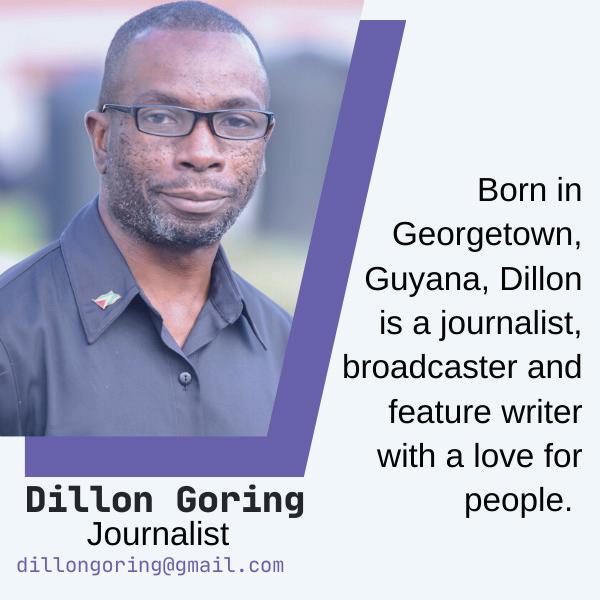
Speakers scheduled for the event are from the International Road Federation (IRF), Certified OSHA companies, etc. Participants will benefit from high-impact presentations from
“My journey toward being a defensive driver begins now. Driving defensively is driving to save lives, time, and money, regardless of the surrounding conditions and the conduct of others.
Being a defensive driver is a matter of personal life choice that I believe everyone should incorporate into their daily routine as they utilise the road. In this course, I was able to understand the common hazards in the driving environment, how to prevent collisions, the dangers of impaired driving, and the 6 common errors when driving, to name a few.
I’ve realised that, as an emerging developing economy, when it comes to driving, our culture and attitudes must change, and we should adopt various defensive driving behaviours by taking all possible precautions to avoid collisions and accidents.
local, regional, and international road safety professionals, making the conference a most beneficial and educational experience.
Clarke’s Production and commitment to road safety
Clarke’s Production is, according to the coordinator, a registered company with the necessary prerequisites to training several persons in what they call “Defensive Driving”. The programme aims to enhance all road users with the necessary skills and coping mechanisms to avoid fatal road accidents.

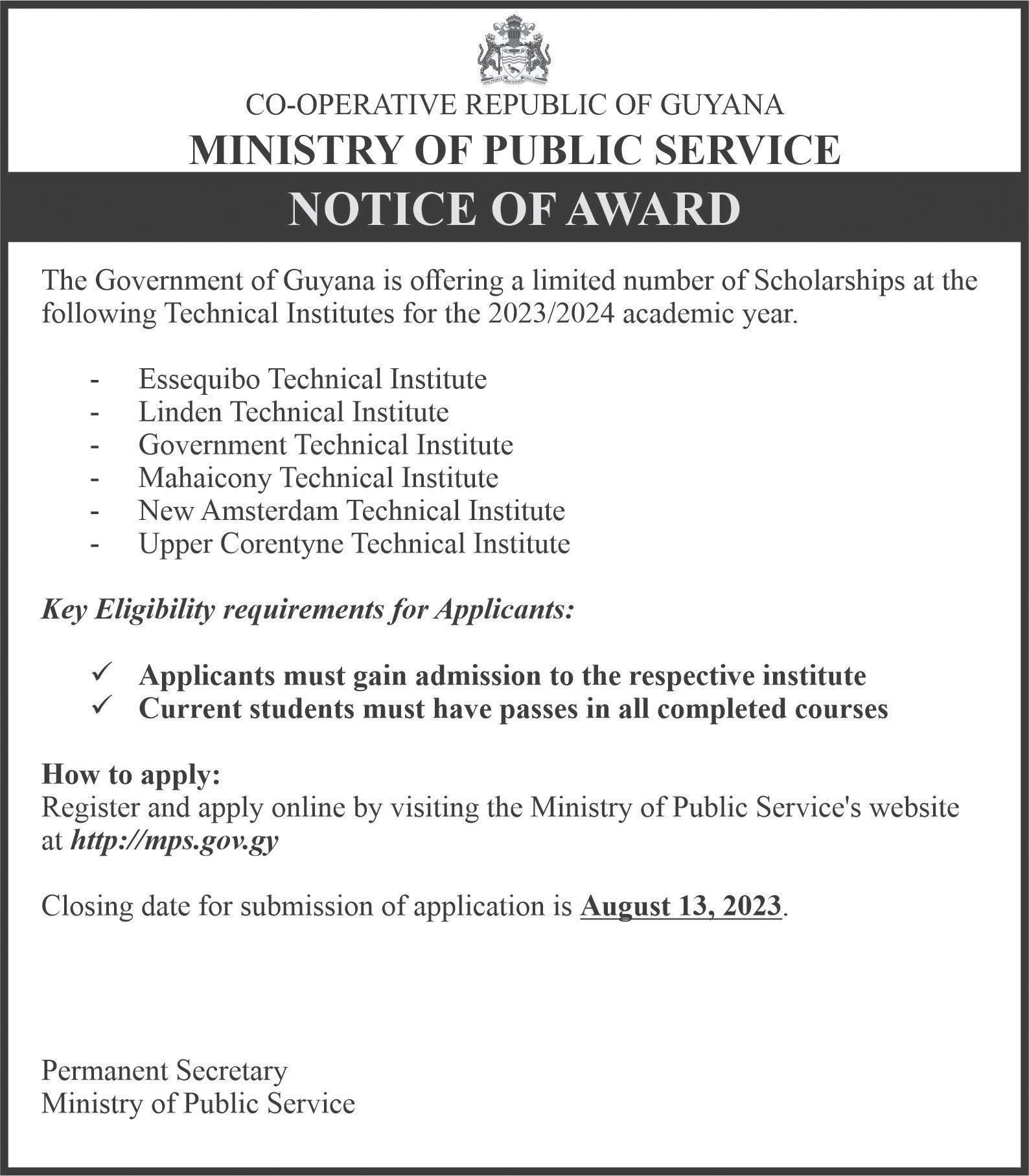

As we hear in this testimonial from one successful student, it is a course well needed to reduce carnage on our roadways.
We need to always keep in mind that an accident impacts not only you (the driver) but also the people around you and the other person’s loved ones. A lot of people believe that having a licence or driving for 10, 20, or 30 years makes them defensive drivers, but it does not; in fact, it just means you are an experienced driver who lacks key fundamental principles in defensive driving, and I believe that other drivers, especially those who cater to public transportation or companies with drivers, should invest in their staff to experience the training session I encountered today.
After finishing this course with Clarke’s Productions Inc., I can confidently declare that I possess the fundamental knowledge and abilities that will assist me in being a defensive driver.
Nonetheless, I must say the entire session was engaging, informative, hands-on, etc. All thanks to the team at Clarke’s Productions Inc.” Pilay Todd noted in his testimonial.
IV CHRONICLE PEPPERPOT Sunday, July 09, 2023
An inside look into relationship issues
By Dillon Goring
RELATIONSHIP issues
can be complex, but, at the same time, the issues can be resolved as long as the right skills are applied and used.
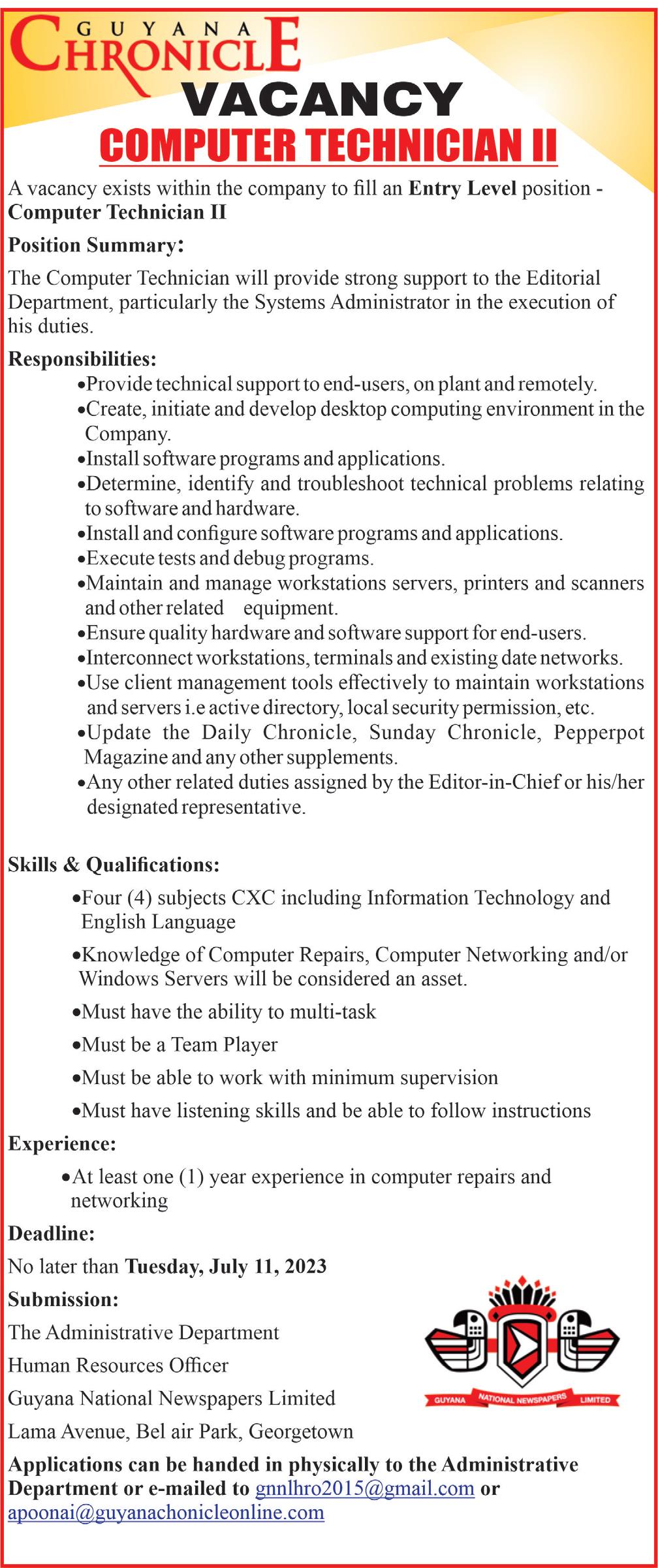
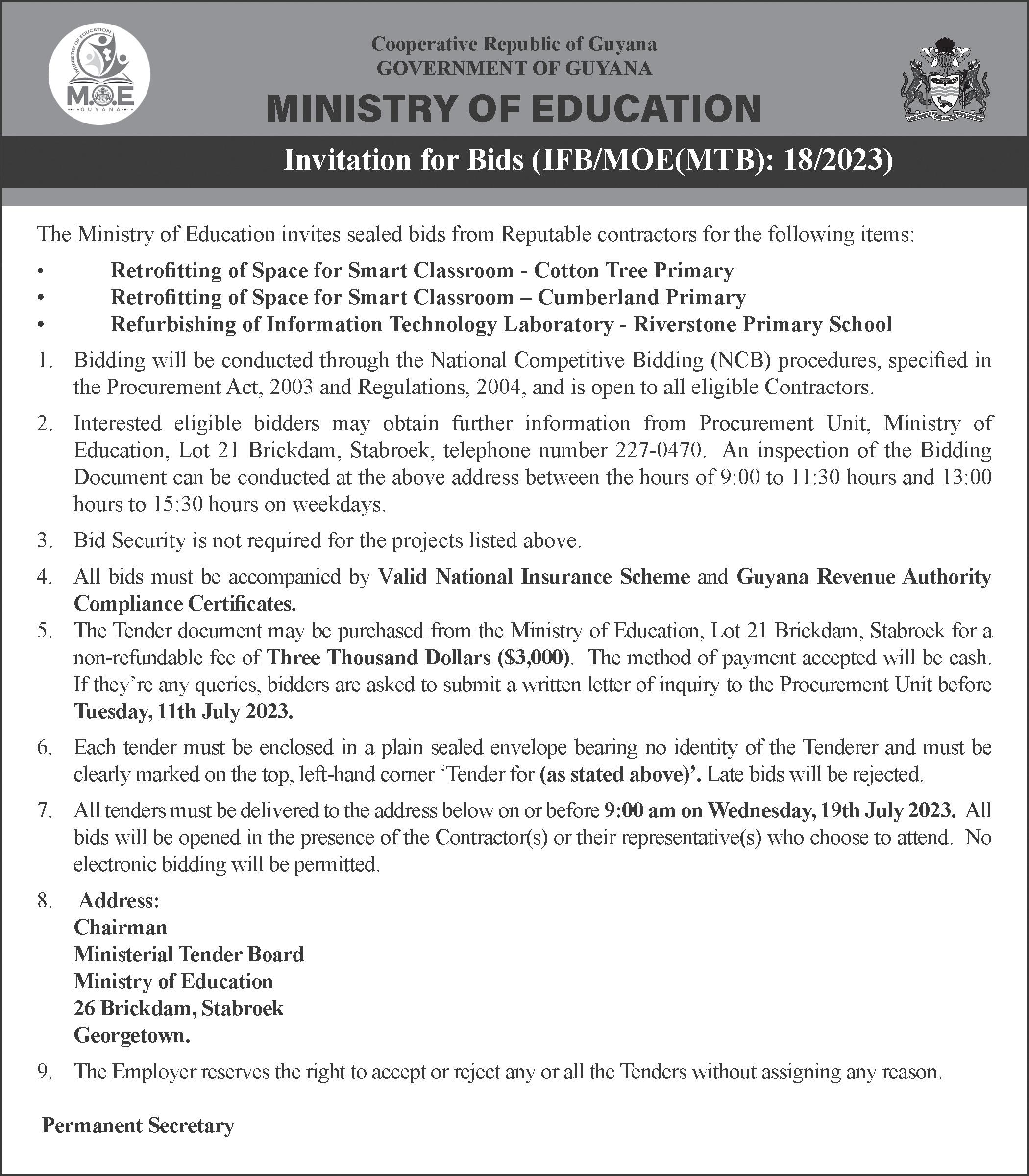
The Pepperpot Magazine sat down with “Coach Michelle” Cumberbatch, who shared insight on how persons can solve the many complexities faced in relationships.
“In the United States, there is the exposure of so much information, but Guyanese like craving this information that is not easily accessible because they want to change,” Michelle told the Pepperpot Magazine.
She underscored the fact that while she did not grow up in an abusive home, her relatives grew up in abusive situations. According to her, “We as women evolve; we as wom-
en educate ourselves, and want better for our lives. We are still stuck in a dysfunctional society that says you can beat me and get away with it, but let me just preference by saying that I am not for women or men. I am for families. That is how you make a difference for the next generation,” Michelle told the Pepperpot Magazine.
Coach Michelle noted that if the goal is to fix society, people cannot continue to allow abuse and domestic violence to become the norm.
She also noted that, as a coach, she has a holistic view and approach when dealing with relationship issues, whether with men or women.
According to her, more men have approached her for counsel and advice than women because she does not bash and emasculate men.
Coach Michelle noted,
during her interview, that these are not the days when you can compare the violence other women would have received as compared to what you are receiving in your relationship. According to her, women must realise their value and know that they are so much more than what they are receiving.
“I get to show them that if I am not believed, then let me check the bible and show you are royalty, to further convince you to let me tell my story and my clients ‘story and have been successful,” Michelle passionately told us.

Healing from the past is critical
Coach Michelle spoke very passionately about women who find themselves going through cycles of violence and abuse.
According to her, if a woman who has come from an abusive relationship is not
healed, she is likely to repeat the same mistake over and over again.
She spoke to the issue of women who have classed themselves into thinking that if they don’t have what Guyanese would say is a “big boy job”, then you are not important.
“I think that God has given talent to everyone. Don’t see talent as only academia, but what you can do in your space,” Michelle shared with the Pepperpot Magazine.
Michelle stated that she will be hosting a first-of-itskind Relationship Conference in Guyana on Sunday, August 27th under the theme “Manifesting the Relationship You Want”.
The conference will focus on celebrating love across cultures and embracing the beauty of culture differences in relationships.
V CHRONICLE PEPPERPOT ― Sunday, July 09, 2023
“Coach Michelle” Cumberbatch
Albouystown
Sharing History and Changing Perception
WITHIN the heart of Georgetown lies a village whose name and history are known by most Guyanese, Albouystown. The stretch of land from La Penitence Market to Cemetery Road is oftenconsidered a part of Albouystown, one of the oldest communities in the country. With its frozen-intime feel and charismatic residents, Albouystown is authentically Guyanese. The community has come a far way throughout the years. Similar to many oth-
Aloustown on Sussex Street. Allen was born and raised in Belair Street, Albouystown and has had his business for more than 10 years in Sussex Street. And after more than 40 years, Richard says that there are very few things he hasn’t seen. He reminisces on the days when he and his friends would run barefoot in the streets of his neighbourhood. “I was born and raised in Albouystown. I attended nursery school in Albouystown, on James Street, in the church. I know
to manufacture the nation’s sugar. This has left a mark on Guyana’s culture today, but few places feel it as much as Alboutystwon. For many years that followed, the Punt Trench was still present and very prominent until a few months ago. The government began their development initiative and turned the trench into Independence Boulevard.
But as changes happen, some things remain the same, says Richard. “Albouystown hasn’t changed. It’s just that
ple’s words, rumours and beliefs. The opinion that Albouystown is dangerous goes outside of the community to neighbouring places like La Penitence and Charlestown. But in the same waypeople from these places would agree that, yes, crime has been an issue they just as honestly express that it is becoming less of a problem.
According to Richard and many of his neighbours, the crime situation is changing and so is the narrative. “In every area it has good and bad people. Back in the days, we had a lot of ‘choke and robb’, we don’t get that now in Albouystown,” Richard said.
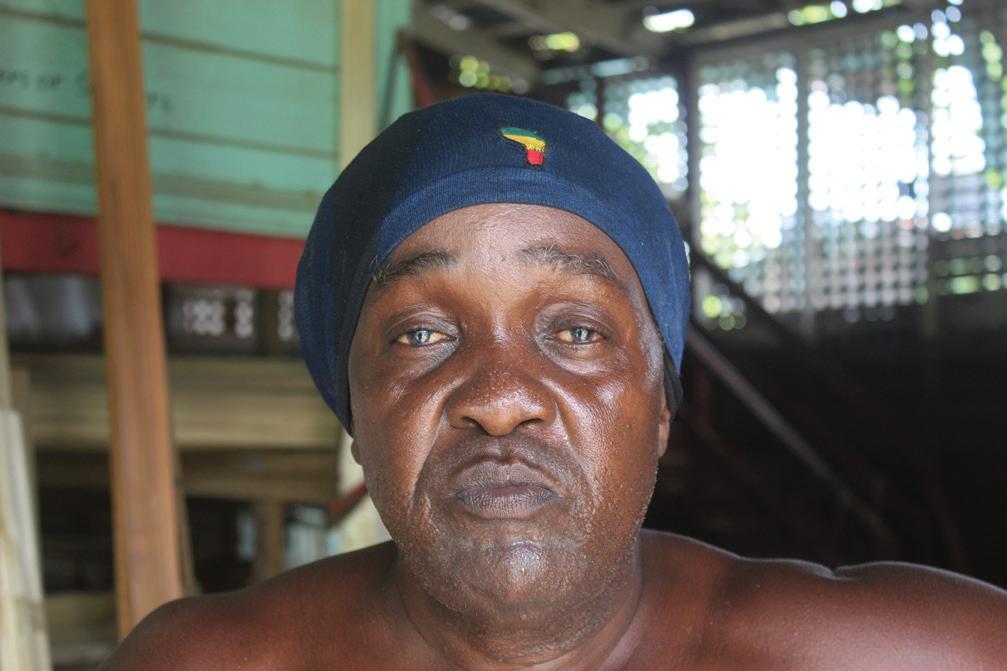
er places in Guyana, Albouystwon was once a picture of fields, trenches and dams. One such canal that became somewhat of a local landmark is the famed ‘Punt Trench Dam’. Today it is known as ‘Independence Boulevard’. One unique feature of Albouystown is its people. Even in the face of the negativity attached to their home, they assure that Albouystown is a place worth considering and they are working to make it better.
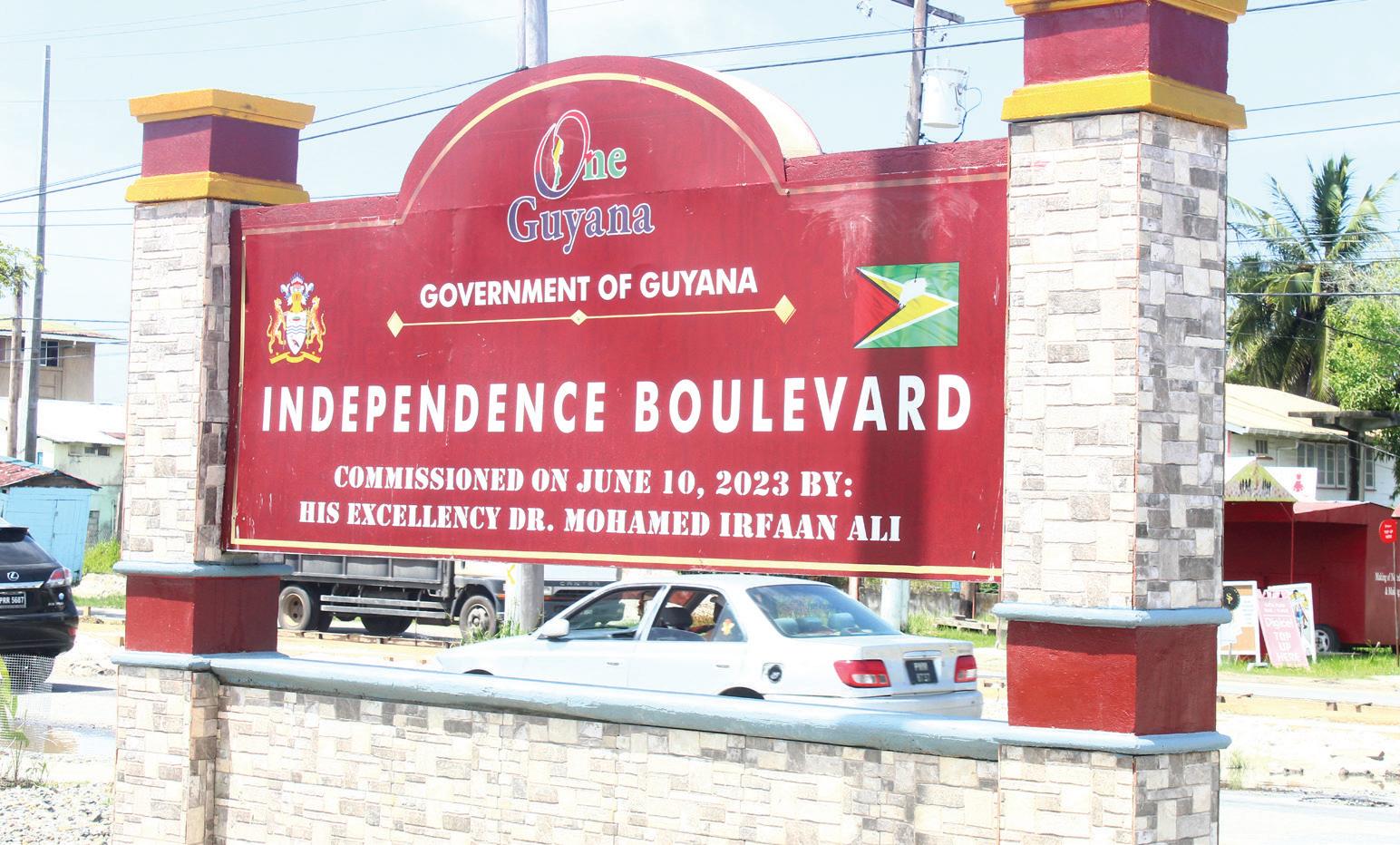
A Little Bit Of History.
Richard Allen’s moulding shop is in the centre of
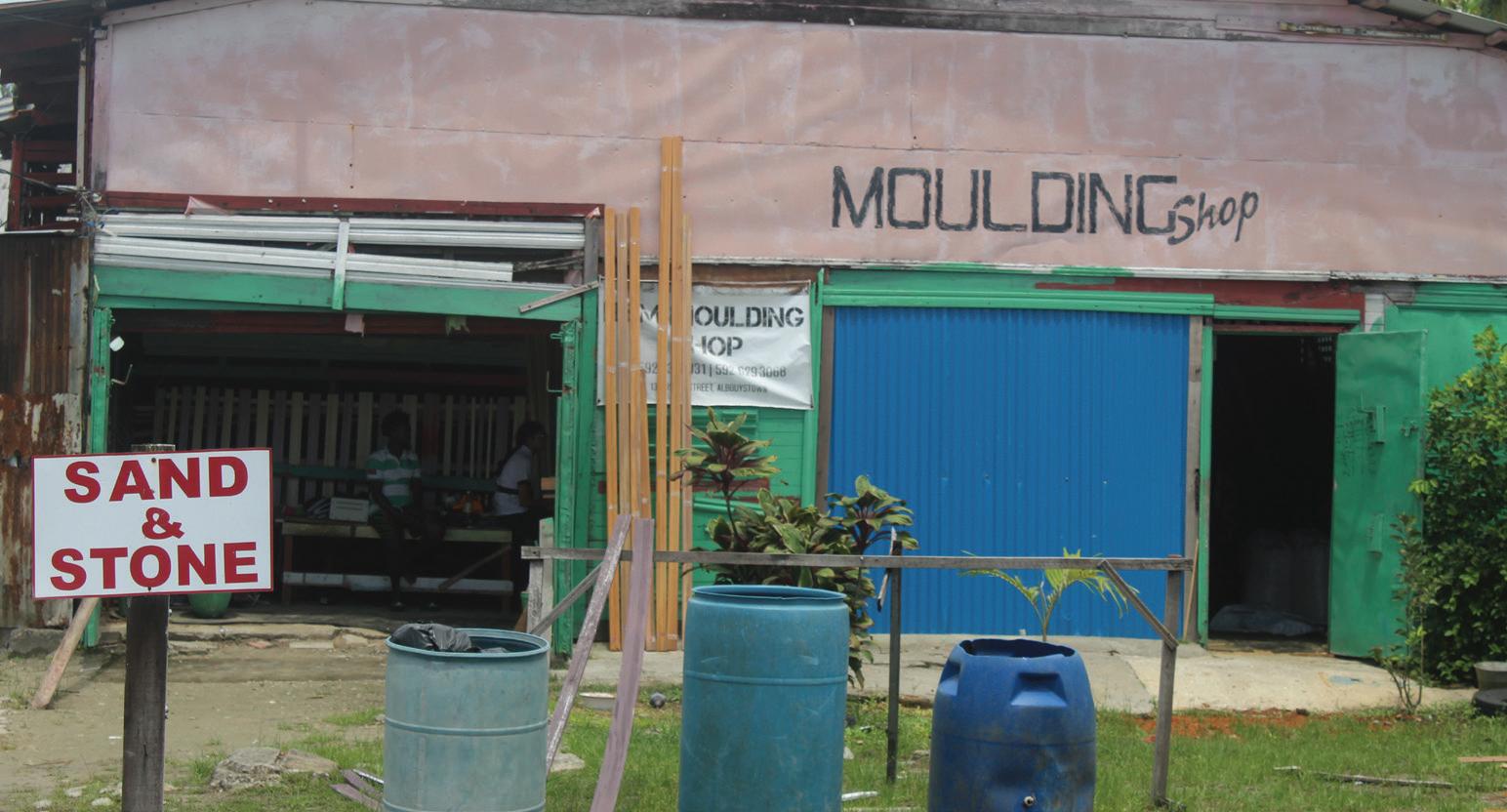
about being in Albouystown, coming out of my yard and going in the alley. And sitting down and playing cards with my friends. We used to sweep the alley and play cricket and run. That was back in those times,” he recalled. And although he hardly noticed when it happened, he is happy to see Albouystown go from trenches to boulevards.
Long ago in the colonial ages, similar to many other communities, Albouystown was a land of cane fields. And to transport the cane from place to place, they would use the famous ‘Punt Trenches’ to move cane shipments
some of the people change. Albouystown is still Albouystown, and it remains that way. Those are things I’ve seen too much of. But as of now, from the past, I’ve seen a lot of improvements. For instance, Independence Boulevard, I knew it when it was a trench. It really looks good,” he said.
Crime over the years Stigma and words like ghetto are oftentimes heard in conversations about Albouystown. Similar to how the remnants of history have shaped the village of Albouystown, so have peo -


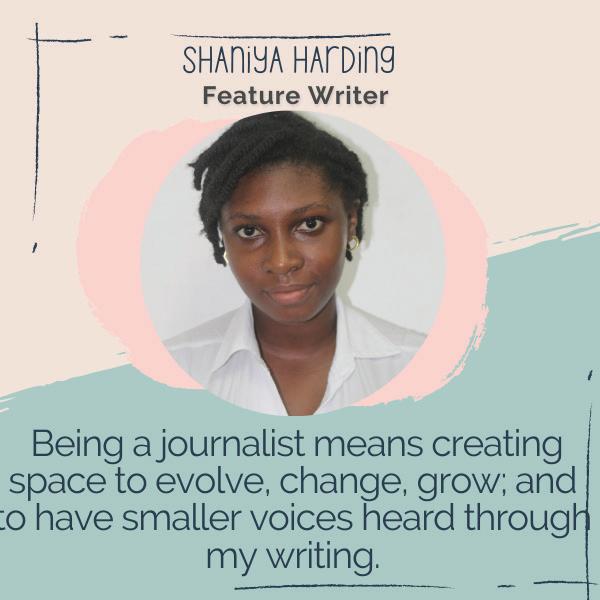
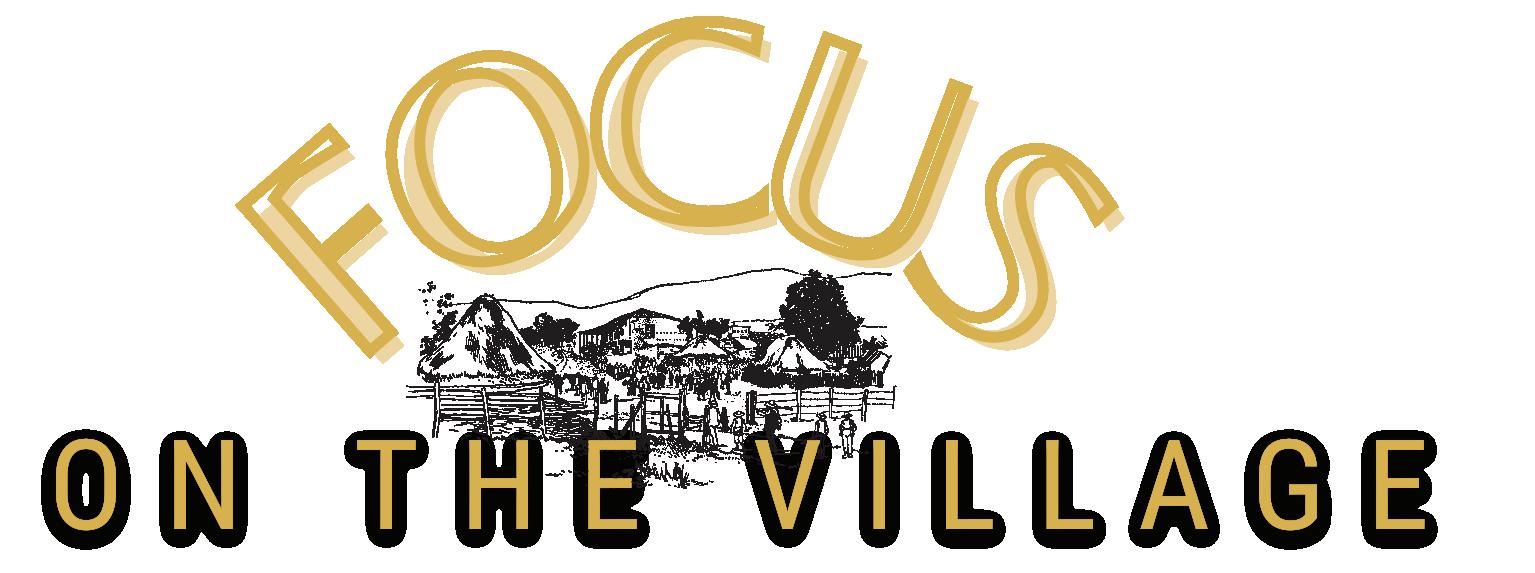
Like Richard, Joel Blair has lived his entire life in
Albouystown and has experienced his fair share of good and bad. Joel has made a living selling food on Sussex Street over the past four years, but unlike Richard, Joel admits to seeing quite a
few instances of crime in the vicinity of his business. Walking through the streets of Albouystown the Pepperpot team was greeted by many residents who were happy to share the story of their beloved village. From the La PentianceMarket to Cemetery Road, there is no fear of hostility but of togetherness and hospitality. The thought is more reinforced when persons from Albouystow speak of each other. Richard expressed, “When you come from Albouystown, no matter which part of the world you go and meet someone else from Albouystown, that love is always right there.”
VI CHRONICLE PEPPERPOT Sunday, July 09, 2023
The newly-constructed Independence Boulevard
Richard’s moulding shop.
Richard Allen
Joel Blair
Independence Boulevard sign.
People and businesses in Albouystown
By Shaniya Harding
THE recent infrastructural development in Albouystown is no secret. But what is not talked about enough is just how big of
he has called home for more than 30 years looks very different today. One thing he says that hasn’t changed, however, is the view people have of communities like La Pentienece andAlbouystown
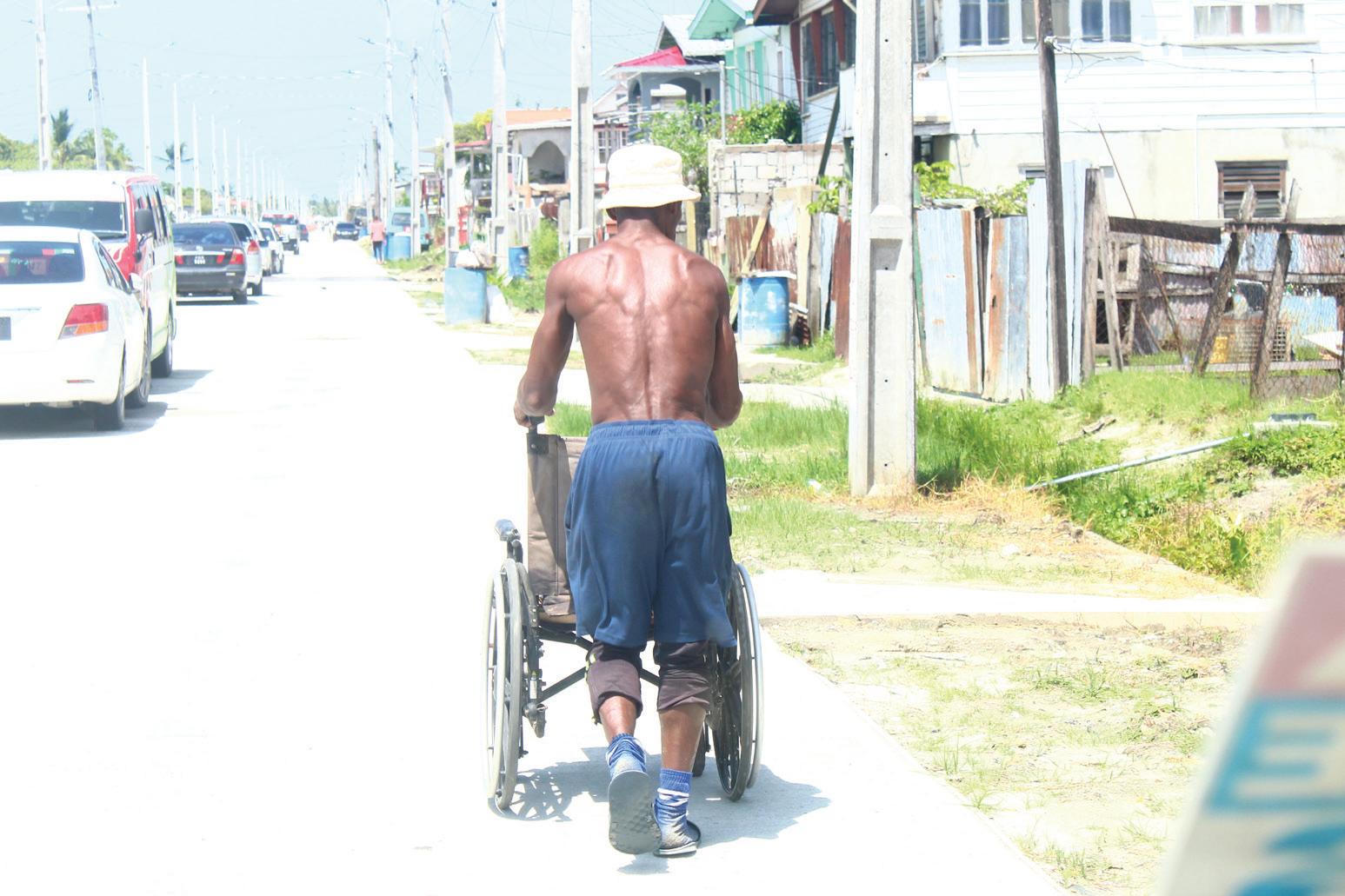
Charlestown and La Penitence showcases Guyanese entrepreneurship and ingenuity. With everything from bicycle repair shops to club owners, places like Albouystowncan become hubs
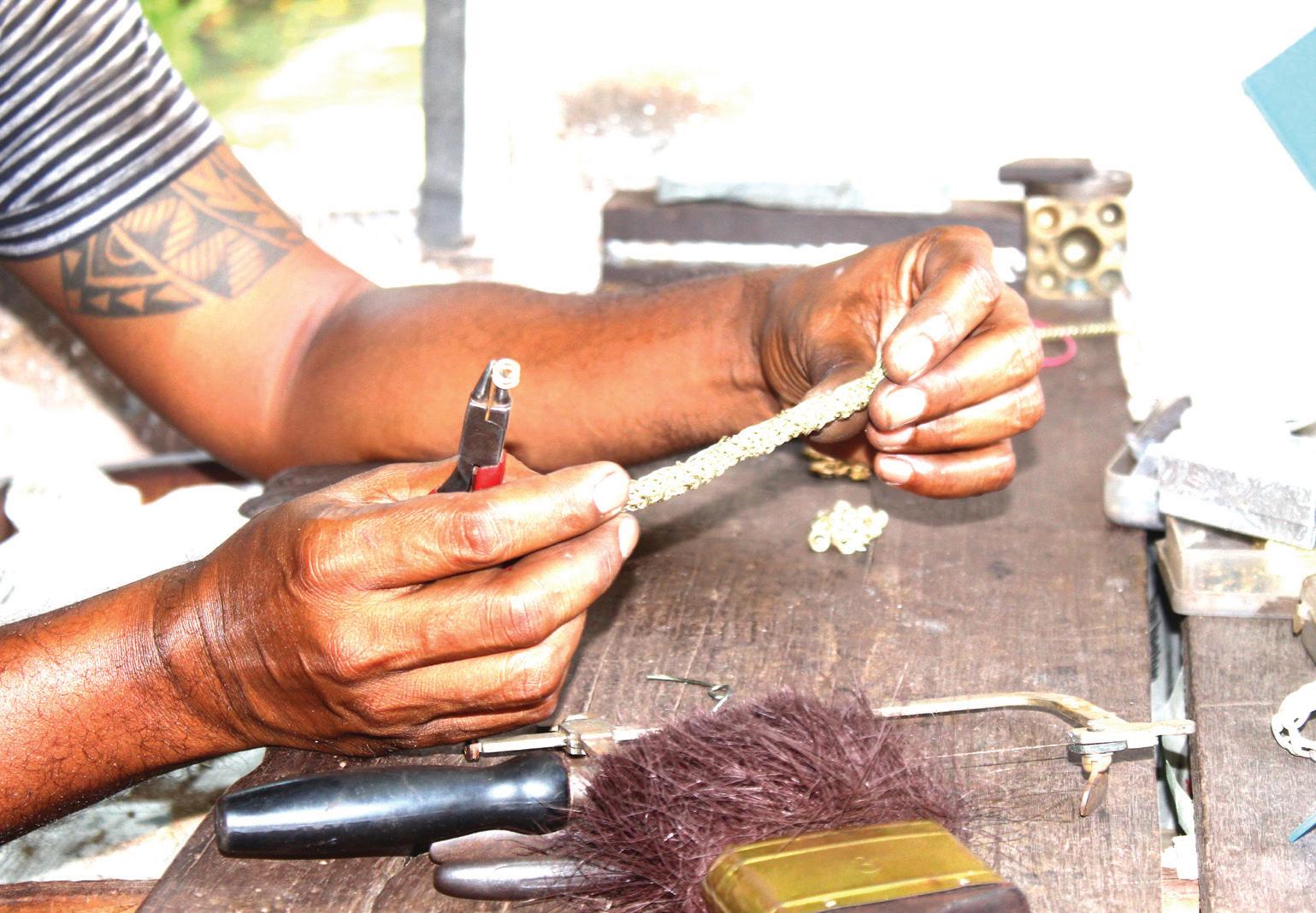
like now. When asked how he would describe it to outsiders, he said, “People get the wrong idea. People think the area is this big bad place. But that was way back in the day when we had gangs. Over time all of them die by gun, violence and gang fights. The area is quiet. I wouldn’t tell anybody that it is a bad area because I’ve been living here so long.”
Johnny, who is a jeweller by trade, explains that he has
an impact it has had on businesses in the area.
On the outskirts of Albouystown in La Penitence lives Seeram Madray, commonly called “Johnny”. With so many new developments, he says that the community
and how the resident have persisted regardless of it.
To Johnny, one of the major differences he has seen over the years has to be the boom in small businesses.Taking a walk through any street in Albouystown,
for business development. And with ongoing worlds in the community, they just might become just that.
Johnny believes that places like Albouystown and La Penitence are great places to live, especially at a time
seen the rise and success of many entrepreneurial endeavours in recent times.“The most major change is that we’ve had a lot more businesses in the area. We have more grocery shops, a few furniture shops, printing businesses and so on. First, it was something of a residential area. There weren’t nearly as many businesses around the area. But now, as the place starts to develop, you see more businesses,” he said.
Johnny shared that as a businessman himself he is happy to see the shift in
activity. The topic of jobs in places like Albouystwon has been a long-standing conversation. Years ago, when an area like this was undeveloped, Jonny shared how difficult it was for a young man or woman to be employed, especially as an entrepreneur.
Johnny himself learned his craft as a young man after a family friend decided to teach him. Even though he has kept true to his craft, he says it feels good to see more people venturing out and developing themselves.
Expressing his long-held belief that his home, Al -
bouystown, has great potential was Cloyde. He is the owner of ‘City Vibes’, a sports bar located in the centre of Albouystown on the corner of Sussex and Hogg Streets. After opening his business in 2016, he said he saw the opportunity and took it and his business has been developing since. Sharing similar sentiments to most other residents, he believes that with the development of the community, there will be change in the people. “It takes discipline to run a


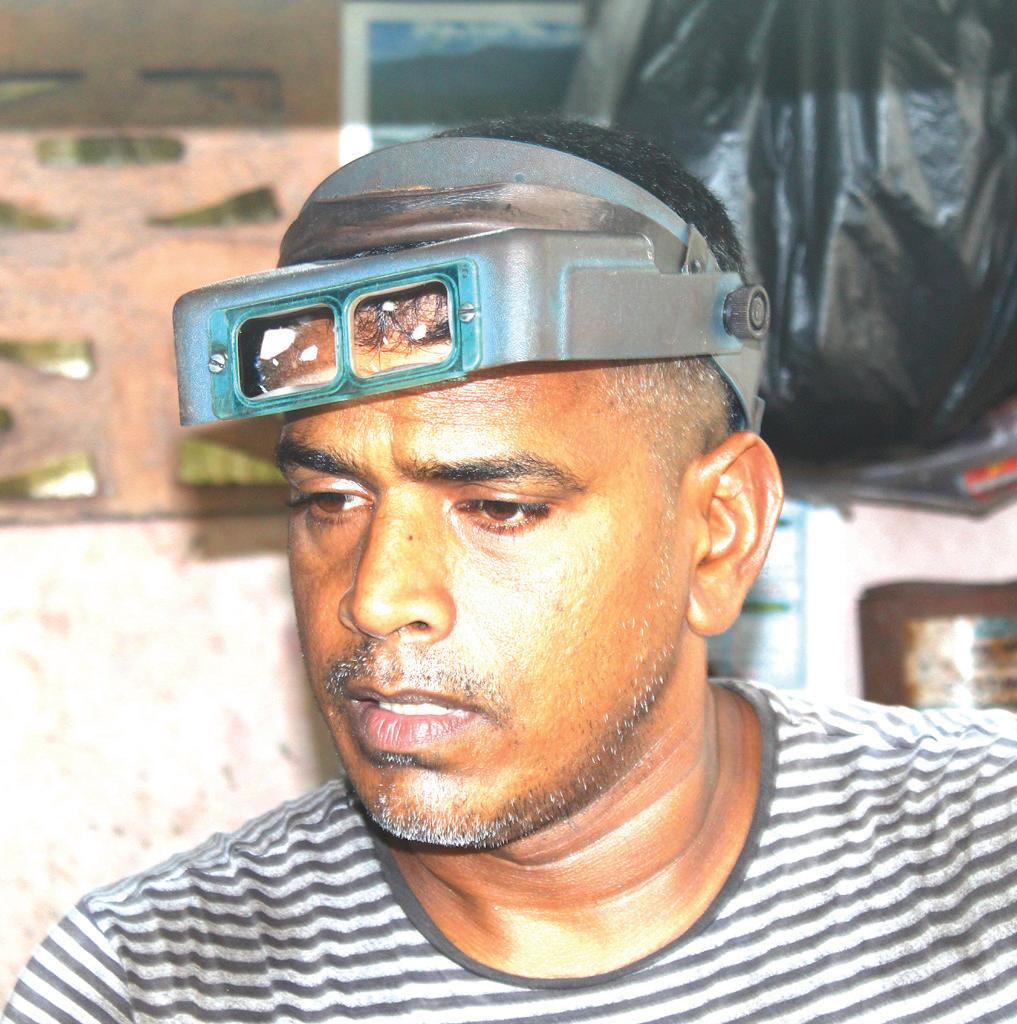
SEE PAGE IX

VII CHRONICLE PEPPERPOT ― Sunday, July 09, 2023
Seeram Madray practicing his craft in his workshop outside of his East La Penitence home (Photos by Japhet Savory)
‘City Vibes’ bar and lounge
A picture showing both sides of the boulevard
Seeram ‘Johnny’ Madray showing his latest piece of jewellery
An image of ‘Cloyde’ in his bar, City Vibes, as he spoke about Albouystown
A look at Albouystown
By Faith Greene
THE future of the community’s youth
ALBOUYSTOWN is one of Guyana’s most wellknown communities, and not because of the positives which surround it, but be -
cause of the negative representation it has received over the years. While many people may identify Albouystown by what they’ve heard about it, the residents of the community say different. To them, Albouystown is home and has so much
potential for more positive to take place. They see it as an area where good people reside, but the community is what it is due to poor choices and the negative impacts of the environment they have to live in. This sadly is the case with many youths of

Albouystown. There is no guidebook to teach them how they can change their story, and the stories of other children in their community.
The Recently Updated, Independence Boulevard, Albouystown cymakers to not just base changes for the community without visiting it and speaking with residents and trying to understand them.
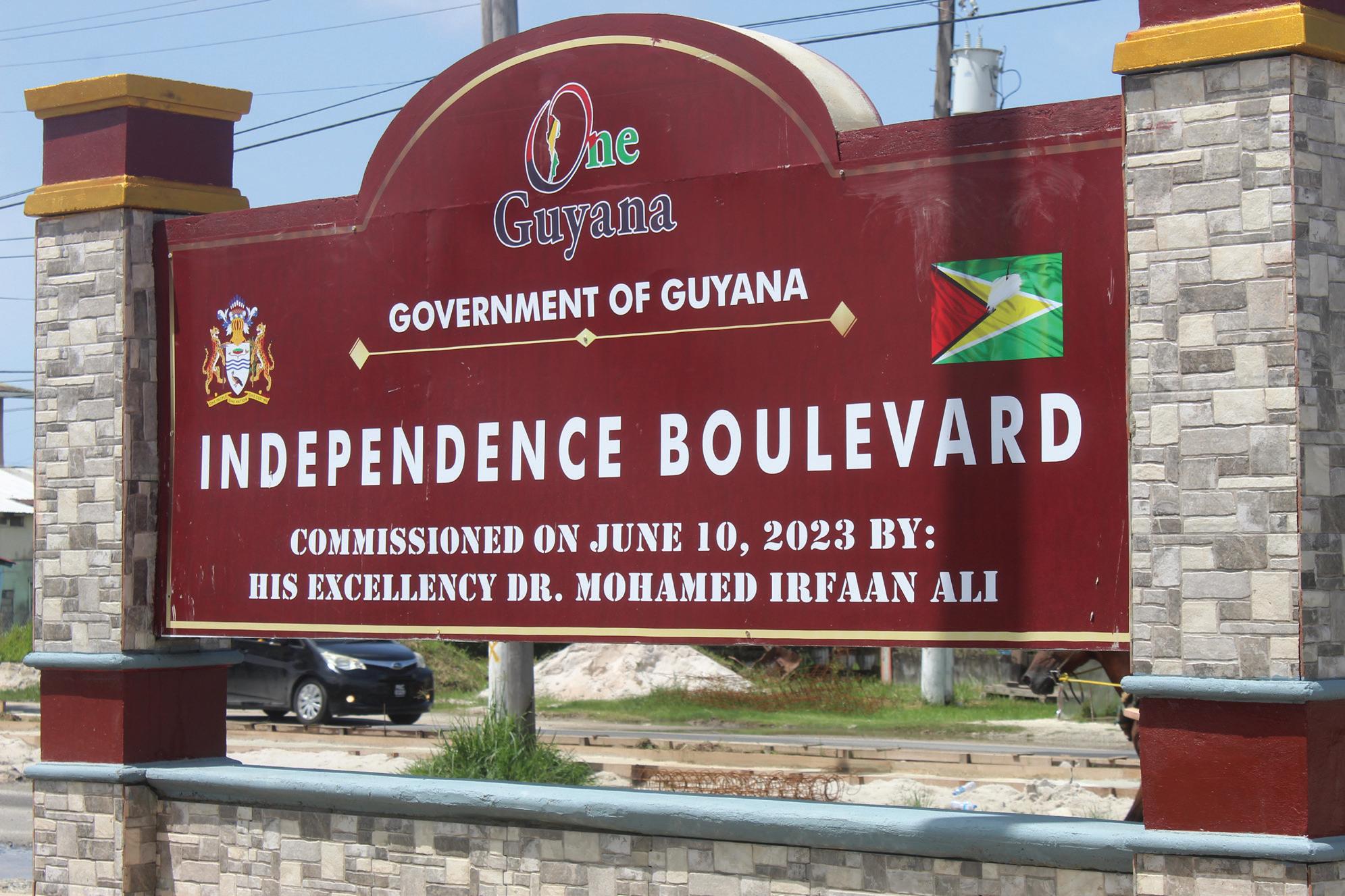
Residents of the community are very much open to change, but many have shared the need for poli -
Albouystown has produced many athletes who have gone on to represent our nation on stages worldwide. Just a few years ago for example, Keevin Allicock – an Albouystown native- represented Guyana in Boxing on the international stage at the Tokyo Olympics, 2021, made a name for himself in a positive way.
Residents of the community recognise the need for in-depth programmes like the Guyana National Service, which was discontinued in the 2000s, in a community like theirs where a youth is lost to the negative influences that surround him/ her.
The reintroduction of this, or programmes like it, where the provision of much-needed skills training and attitudes youths need today could enable them to pursue several different career paths and contribute
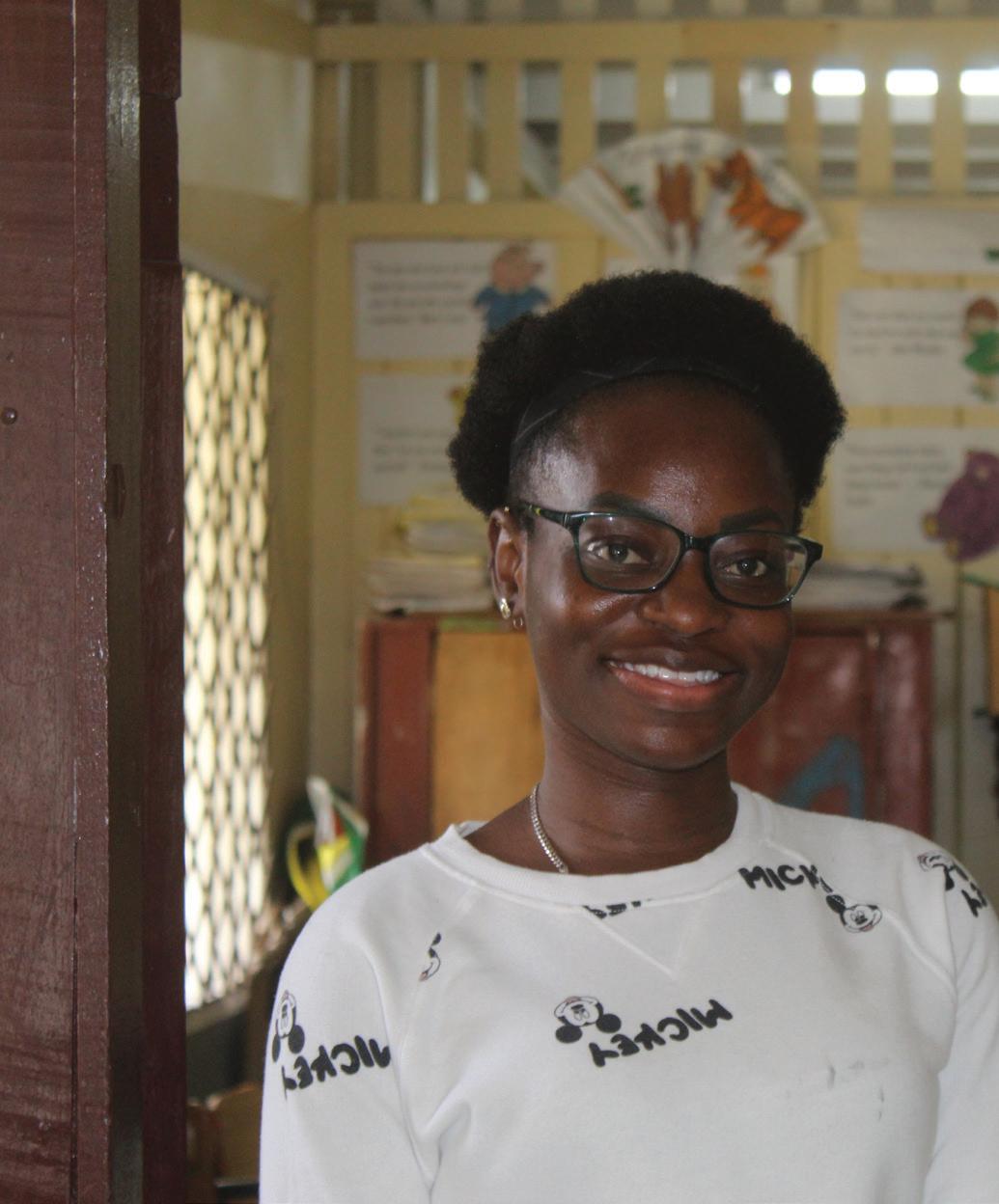
positively to their communities and overall, the country. Furthermore, Albouystown is a thriving community.

A Budding, Untapped Tourist Trap
Throughout the entire layout of Albouystown are small and large businesses ranging from boutiques to restaurants and much more. Some residents expressed the need for more to be done to develop the community from within. A resident of the community pointed out that there are some deteriorated and abandoned buildings in the community that should be demolished. This, he said, can pave the way for more modern homes to be built, which could then be sold or rented out to persons who will maintain its value and set new standards in the community.
Additionally, the rehabilitation of the Young
SEE PAGE IX
VIII CHRONICLE PEPPERPOT Sunday, July 09, 2023
An Educator at the Carmel Secondary School, on Alboys Street, Albouystown, Georgetown.
(Photos by Japheth Savory)
A look at ...
FROM PAGE VIII
Men’s Christian Association (YMCA), building in the community for youth-related activities is yet to be addressed, and is something residents look forward.
The recently upgraded Independence Boulevard, (which was also called, ‘Punt Trench Dam’) has since given that section of the community a brighter, friendlier look and has definitely increased the value and potential of the commu-
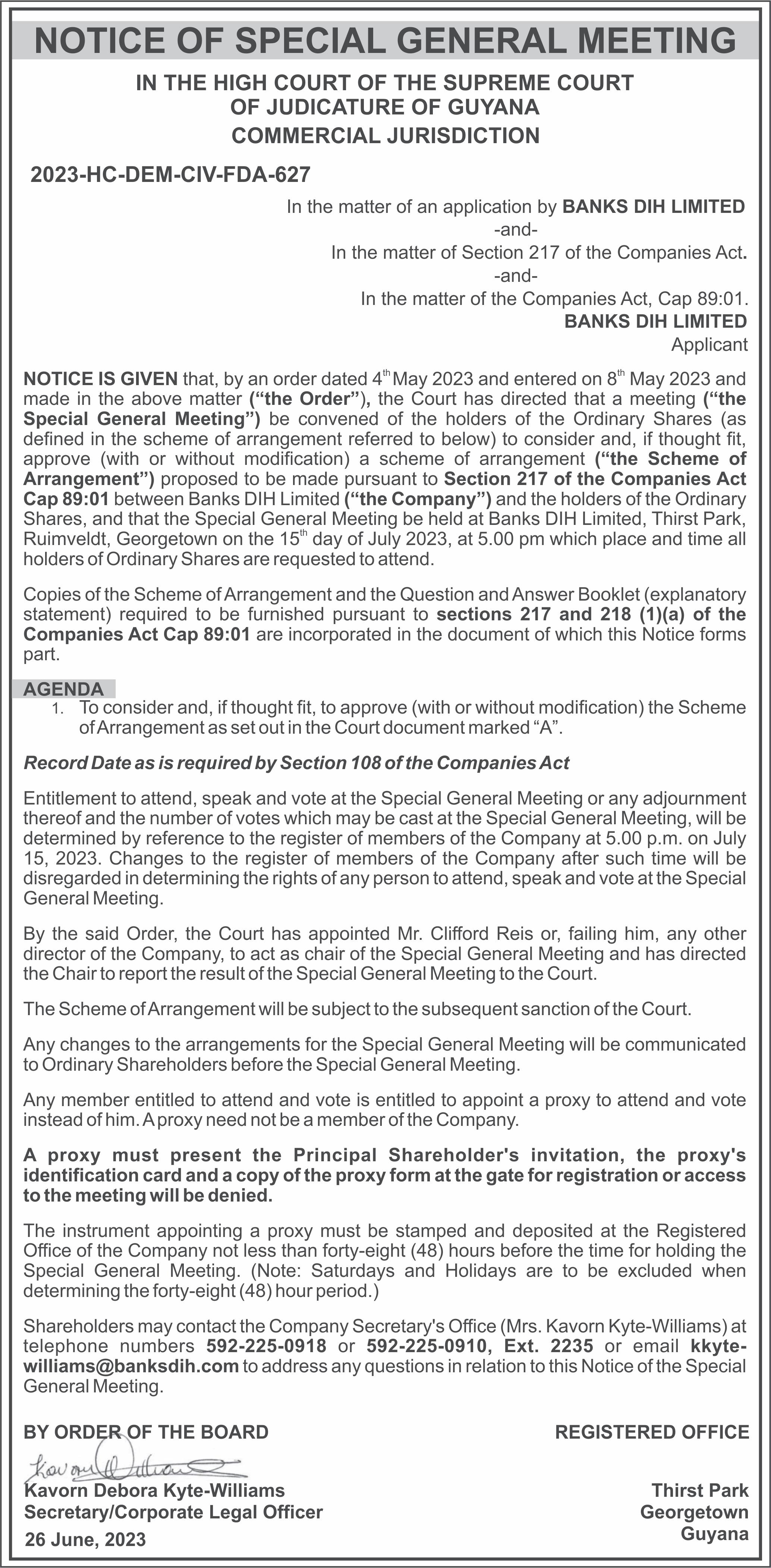
nity. It is part of the ongoing Albouystown Beautification Project aimed at improving the prospects of the community and President Irfaan Ali has said that the project is designed to uplift the lives of residents.
Residents have repeatedly said how pleased they were during the construction phase of the project, and now that it is completed they wasted no time in using their enhanced space, compliments of the government of Guyana.
People and businesses...
FROM PAGE VII
business and to take care of the boulevard. I hope everyone will take care of it. The government can only do so much. It’s up to the people to keep going,” he stated.
One thought reiterated by many residents of Albouystown, primarily business owners, is that perception and stigma do, in fact, impact businesses and how well they do. Cloyde comments on how this was one of his prime goals in starting his establishment. “City Vibes is one of the first-ever registered bars in Albouystown. We see people as different depending on where they come from. My reason for having my bar here is to show that everyone is equal,” he saidand it seems to have been working out well thus far.
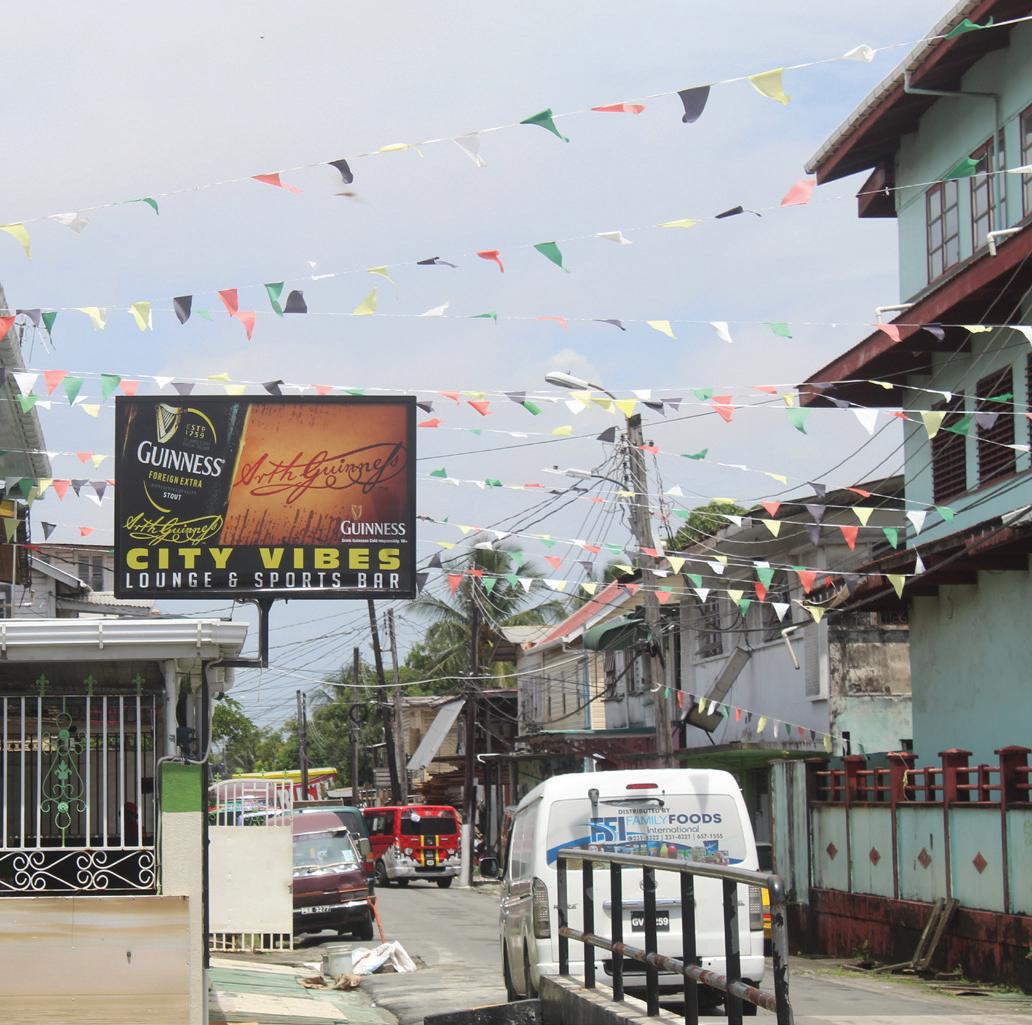
Looking at the village of Albouystown down the boulevard, it has managed to become an overwhelmingly busy hub of people in the early mornings and late afternoons. All while retaining the same simple charm it always has. From a friendly jeweller who explained the process of making rose gold to the PepperpotMagazine, to shy but welcoming shopkeepers. Albouystown is a place that is bound to see a bright future while never losing its unique hint of history and culture.
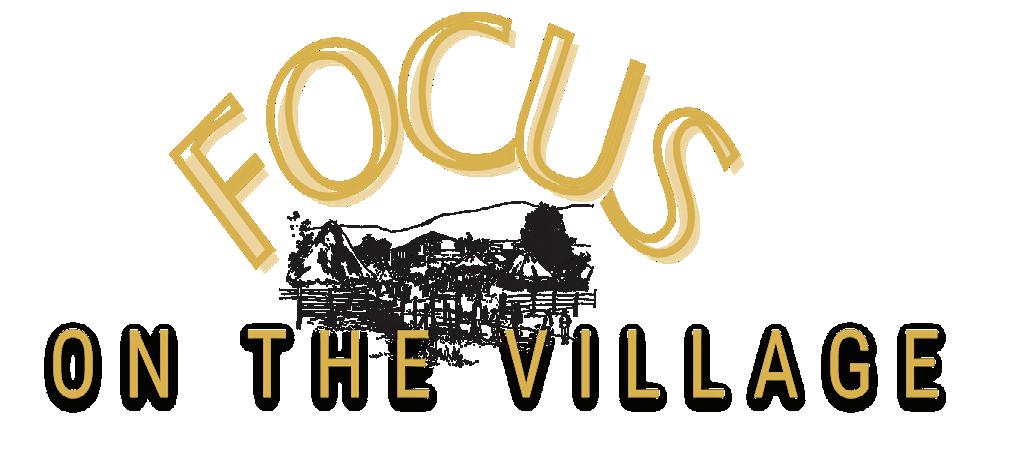
IX CHRONICLE PEPPERPOT ― Sunday, July 09, 2023 City Vibes Lounge and Sports Bar
The risk of dangerous pasttimes
--The ill-fated quest of the Titan submersible
THE Titans was a mighty specie of Proto-Gods whose exploits are recorded in Greek and ancient mythology. It is a name associated with great and noble exploits, as well as terrible
tragedies.
The recent event of the tragic ‘Titan submersible’ was a tourist adventure to explore the wreckage of the ‘TITAN-IC’. It was not an unusual experience, though
an expensive one. But somehow, errors were made, and diligence was compromised with the effectiveness and capability of the vessel used for this venture, and the result was suicidal.
The R.M.S TITANIC was the largest ship afloat at the time, an American-owned ship operating on a British Line. At full speed, this $7,500,000-owned liner struck an iceberg about 1,600 miles northwest of New York City on her way from Southampton, England, on her maiden voyage on April 15, 1912. More than 1,500 of her passengers and crew were lost.
The irony of this celebrated vessel was that it had lifeboat space for only 1,176 persons, but was carrying more than 2,200 people. It was 882.5 feet long, with a gross tonnage of 46,328. Most of the poorer people were workers and immigrant families in the steerage class looking forward to a new life in America, most likely to prevent a justified riotous will to live. They were locked in the areas they occupied to enable the rich and famous to survive. Among them were a Haitian Creole engineer and his French wife. Most of these passenger victims died of hypothermia.
Thus, if ever the lore of a ghost ship with angry spirits is required by some talent, the TITANIC is the perfect and leading model to air social and anti-class vexations from beyond the grave. There was a boast that the TITANIC was unsinkable, and even God couldn’t sink it. If these things were said that we‘ve heard older folk mention in conversations, then, regardless of what we believe or don’t, it’s best not to test things that our egos don’t quite understand.

There were TITANIC movies; stories in maga -
zines while growing up. I can’t remember any novels. Most likely other incidents and trends took over, and TITANIC was shelved until James Cameron launched his iconic movie with that irresistible soundtrack. In 2012, I bought a National Geographic Magazine with the TITANIC as its main theme. From the insights
I learned from that article, there was no reason for what currently occurred to have happened, based on what has been available for that kind of venture. James Cameron had a contribution to that 2012 article. What he was looking for at the time when he visited the wreck was what every artist looks for: Creative authenticity to
suffice the feeling of honesty with what you’re expressing. What I learned was the level of equipment that was functioning in Oceanic Archaeology. So I had concluded that if you could fund it, then the venture was on. Deterioration would be the

SEE PAGE XI
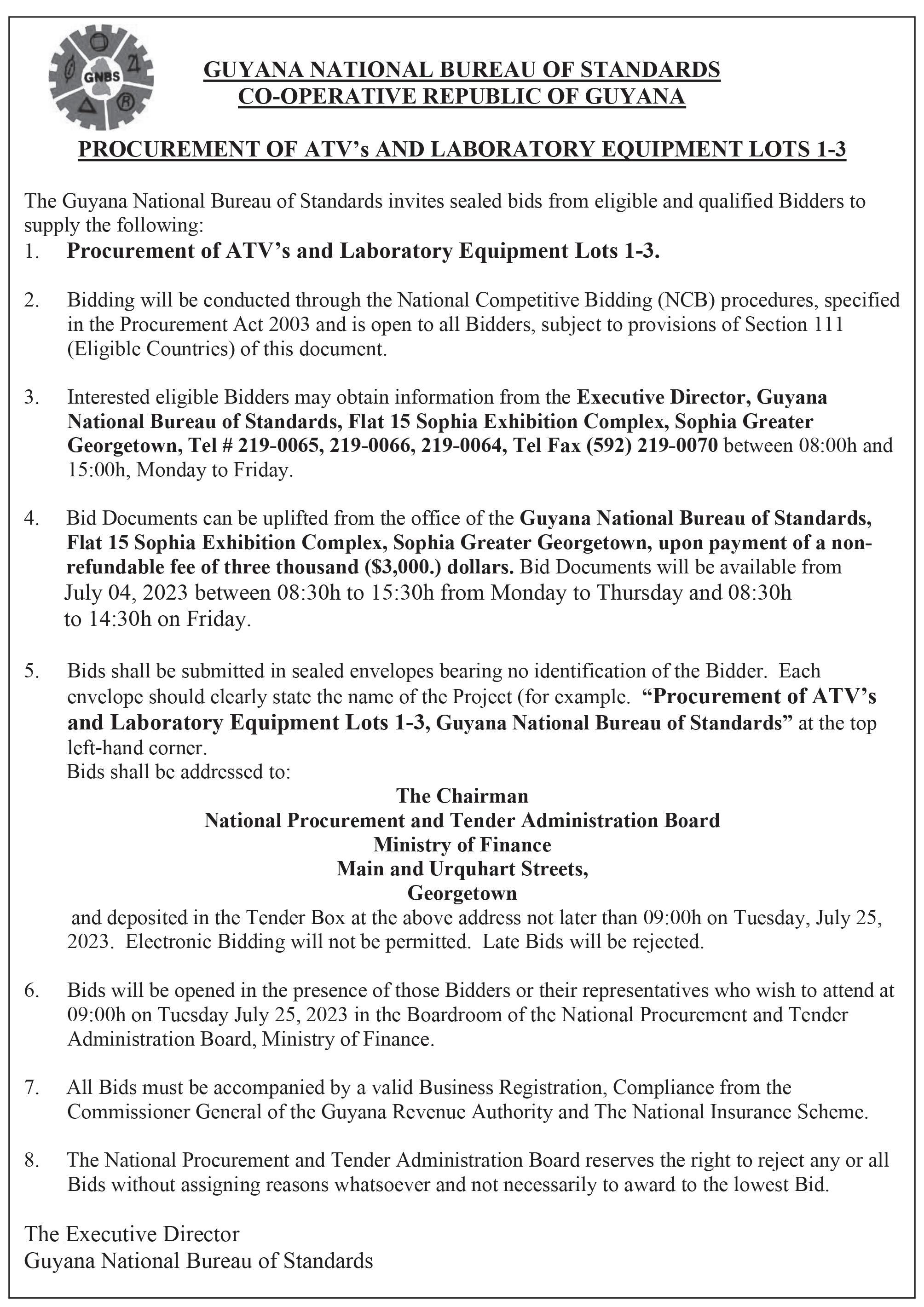
X CHRONICLE PEPPERPOT Sunday, July 09, 2023
The risk of dangerous ...
FROM PAGE X

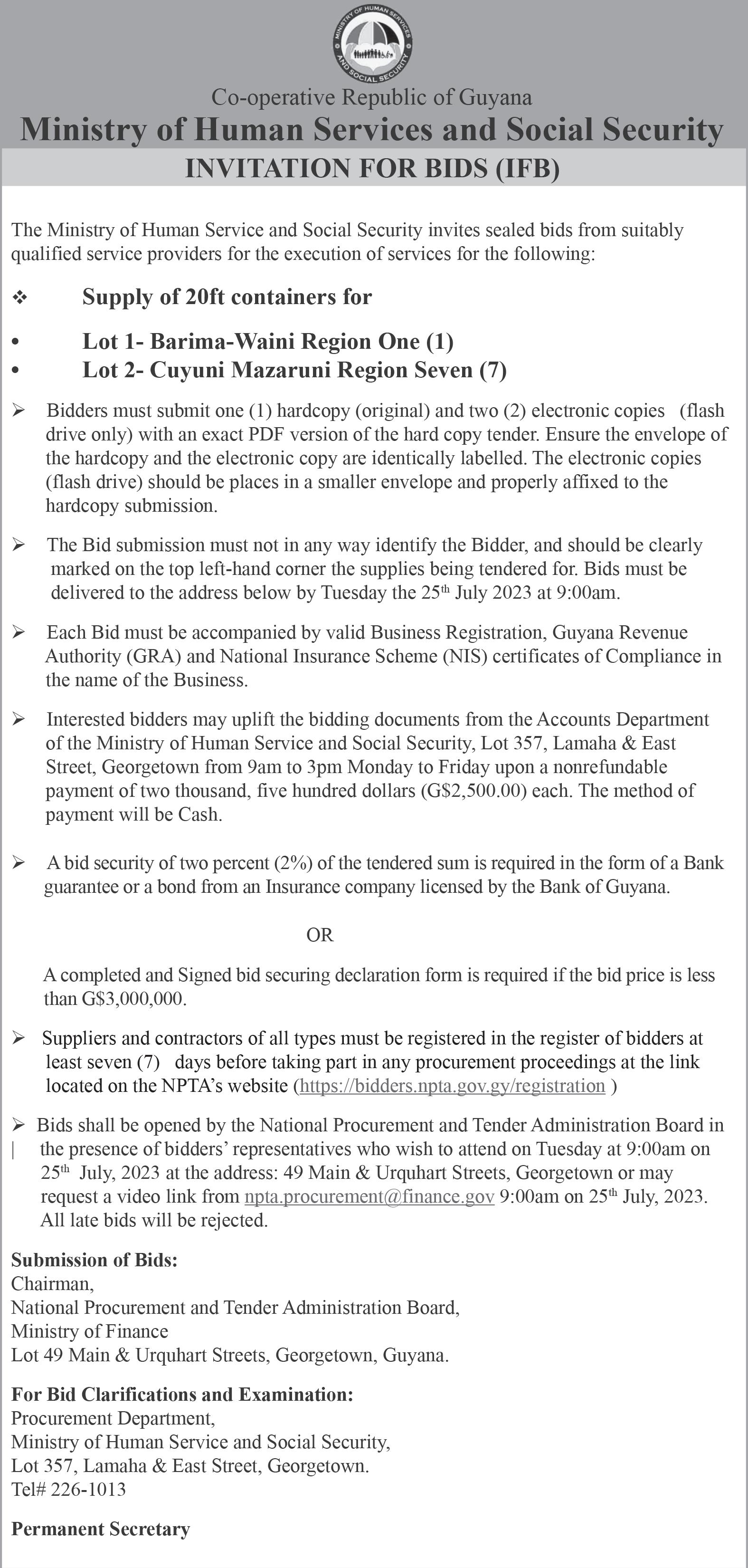
huge hurdle: “Titanic’s battered stern, captured here in profile and overhead, bears [as shown in the magazine] witness to the extreme trauma inflicted upon it as it corkscrewed to the bottom. Making sense of this tangle of metal presents endless challenges to the experts.”
Says one: “If you’re going to interpret this stuff, you gotta love Picasso.” However, personal items were found that could speak of some of the people on board
who had perished. The outpouring of sarcastic poetry and mockery at the wealthy that perished with the TITAN Submersible, more at their status of being billionaires, is balanced by the similar poetry that echoed in 1912 when the TITANIC sank, because wherever you are in the majority of today’s world, the labyrinth of disenfranchisement, and as one citizen argued, the man who wanted to kill billions with COVID-19 “is one ah dem”. The fact, however, is that
the TITANIC is no longer a mystery. New technology has enabled visibility.
To me, what was profound about the impact of the TITANIC has lived with me for years, in reference to the fallibility of human genius: “But something else beyond human lives went down with the TITANIC: An illusion of orderliness; a faith in technological progress was soon replaced by fears and dreads. The TITANIC disaster was the bursting of a bubble. There was such a sense of bounty
in the first decade of the 20th Century. Elevators! Automobiles! Airplanes! Wireless radio! Everything seemed so wondrous, on an endless upward spiral. Then it all came crashing down.”–James
Cameron.”
I grew up in a world to expect error from Manmade things, disasters like the ‘Columbia in 2003’ were mourned but perceived again in a philosophy that
what Man makes is subject to error. Probably the TITANIC had to happen to level the world of the then future from the thinking of 1912, towards the dark ideals of WWII.
XI CHRONICLE PEPPERPOT ― Sunday, July 09, 2023
JOANNIE

FINDING BEAUTY FROM WITHIN

SHE stood alone by the street corner, her short hair pulled down to shield what it could of her face, a sad look in her black eyes. She wore a cheap dress, being a poor girl, but it accentuated her slim body and smooth ebony skin. Her simple looks could have been a beautiful picture, except there was a flaw that caused her to stand hidden in the shadows, as the other girls laughed and chatted with their boyfriends in the outdoor country bar.
No one wanted to be her friend because of her perceived ugliness.
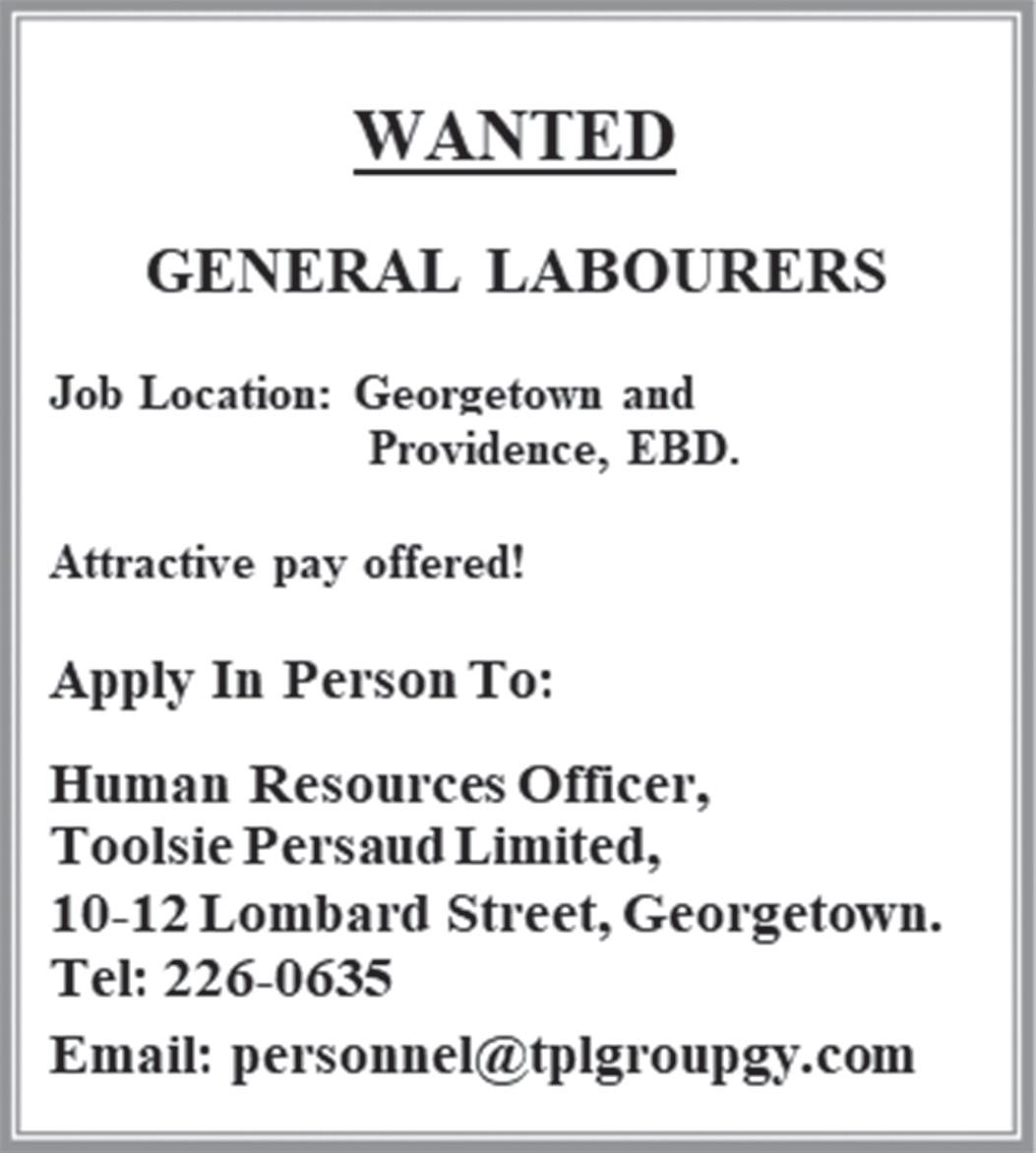
“Why was I born with this ugly look?” she often wondered, “Is it a curse, a sin?”
She couldn’t say, not at the beginning as a child nor now as a young girl. She had lived with the hope that one day when she woke up and looked in the mirror, the ugliness would be gone.
The unkind taunts followed her everywhere, for no one stopped to think it could be hurting her. In the eyes of the community, she was just a poor girl who assisted her mother in their small street food business.
She stepped out of the shadows to walk down the street, for her mother had sent her to buy bread and immediately one of the boys called out to her, “Ay Joannie, you want a drink or you waiting for Chucky?”
She stopped to turn back, then changed her mind and as she passed the bar, two other boys tried to block her path.
“Chucky’s bride, sure you don’t want a drink?”
The girls all laughed as she stepped to the side, stumbling a little and went along her way, ignoring them. But she didn’t stop at the shop for the bread, just kept walking, not concerned where she was going, the unkind laughter ringing in her ears. They were always calling her names akin to ugliness and all she wanted as a young girl was to be liked, to have friends, to do the things she loved.
Joannie stopped walking, breathing heavily, not sure where she was. She had walked a long way in her distressed thoughts, and, looking around, she realised she was next to a cemetery. An old Methodist church stood in the same grounds and, walking in, she sat on the steps.
“I’ll just sit here for a little while,” she said to herself, “At least no one here will taunt me.”
She leaned back against the step’s rails and closed her eyes, just letting her mind relax in the still silence. A long while later, SEE PAGE XXI
XII CHRONICLE PEPPERPOT Sunday, July 09, 2023
IMAGINATIVE EXPANSION OF NURSE TRAINING BY HYBRID TRAINING PROGRAMME

IN recent years, the conditions of nurses and the nursing profession have been highlighted largely owing to the expressed concerns of Minister of Health, Dr Frank Anthony, who has always pointed out the essential role nurses play in delivering an effective National Health Programme.
Several factors negatively affect the nursing profession. Among these are the conditions of service, including remuneration and the fact that so many nurses leave every year, putting an extra burden on those who remain in service.

The emigration of nurses from Guyana and the other CARICOM territories to the
gration and is exploring ways of bettering the conditions of nurses and bringing more nurses into the profession by extension of training.
At the moment, there are only three public nursing schools catering for approximately 250 trainees with a programme that lasts for three years. The quality of training compares with the best, but the output of the schools falls well below the present, and more so future requirements.
Accordingly, the Ministry of Health, through its Health Sciences Education Department and the Pan American Health Organization and the World Health Organization (PAHO/WHO), has collaborated to devise a hybrid train-
could apply for the next cycle of training.
The training would be modernised and have digital content so that the newly trained nurses would be comfortable with the modern equipment increasingly being used in the hospitals. Each trainee nurse would be given a stipend of $16,180 per month and on the completion of training, each would be guaranteed employment by the Ministry of Health.
This hybrid training programme is both imaginative and creative and characterises the work of the Ministry under the leadership of Dr Frank Anthony, where notable achievements are made without any fanfare. An ex-
training courses. A second recommendation we would wish to make is to encourage young women from the Indian and Amerindian
communities to apply for the training programmes.
Young men and women and parents in these communities have long been socialised to feel that nurs-
ing is an urban profession. Social workers or even political representatives could explain to parents the value of the profession and of its universality.
Developed World is caused by the permanent shortages of nurses in the institutions of those countries resulting in work visas for nurses being granted without much difficulty. This pull of CARICOM nurses to the Developed countries has imposed a financial loss on the nurses’ home countries since these countries would have financed their training.
Guyana may suffer most among CARICOM countries from this emigration because Guyana’s Health services are expanding quickly and in two years there would be 12 new state-of-the-art hospitals and many more health centres requiring hundreds of nurses.
Minister of Health Dr Frank Anthony is acutely aware of the threat of what could be a calamitous emi-
ing programme whereby the number of nurses trained per annum would be increased. The quality of training would be of the usual high standard though the methodology may slightly differ from the traditional. Training would be virtual, that is, by computers, and the clinical component would be done by simulation centres which would be established along the Coast and in the hinterland.
Invitations to join the course had been advertised and the Ministry expected that the numbers responding would be 1000 but the number of applicants turned out to be 1,712 of whom 1,160 were qualified for entry. The remaining 552 would be adopted by the Ministry, which will bring them up to the required standards so that they
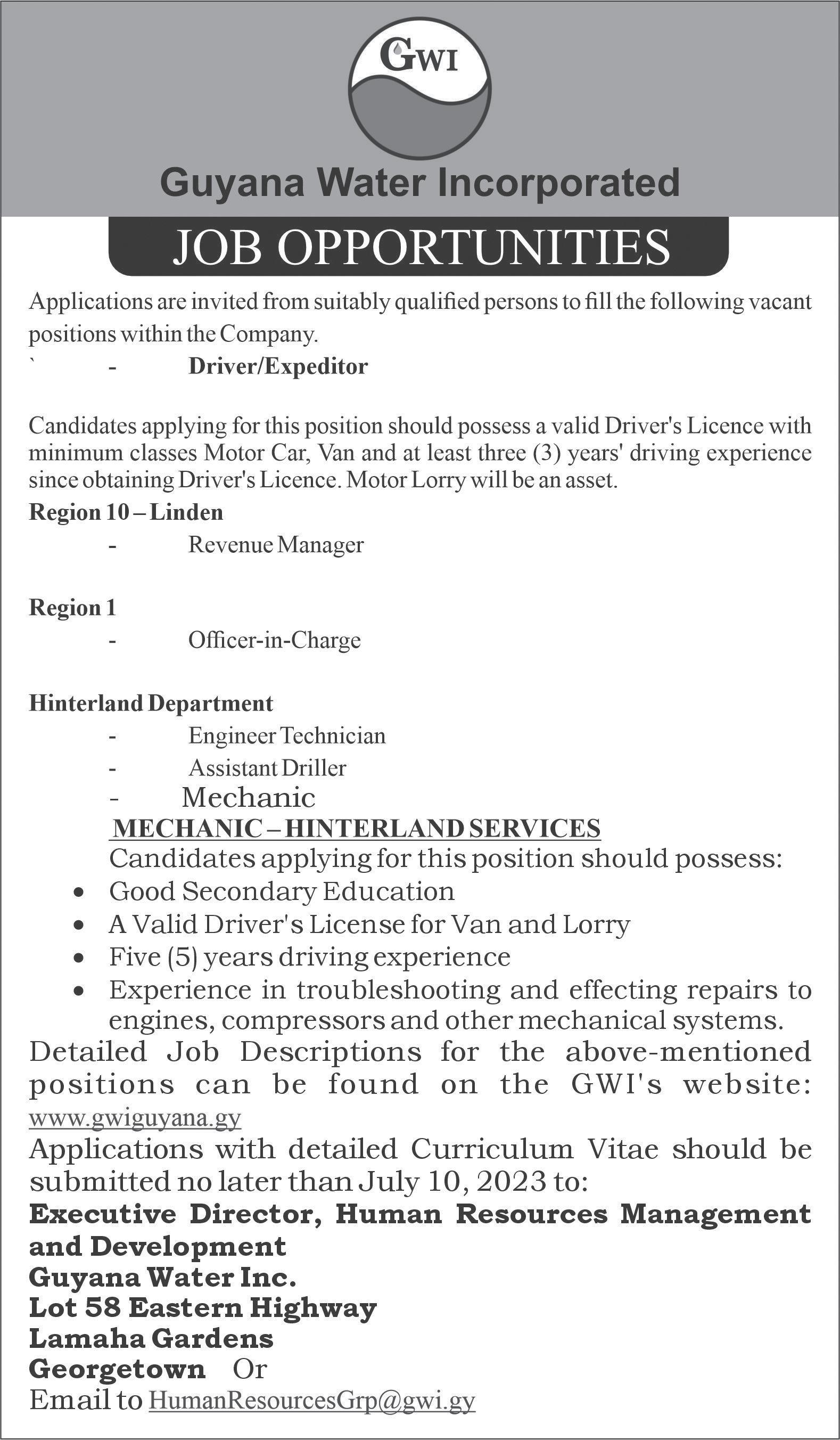
ample of this is Dr Anthony and his Ministry’s handling of the COVID-19 Pandemic, where Guyana is among the world’s most successful. In Guyana and the neighbouring countries, no one doubts that the hybrid training programme would be a success and applicants from abroad have expressed an interest in joining, but Dr Anthony, with his usual modesty, remarked, “We want to first make sure that we can get this pioneering programme up and running properly”.
In due course, we would strongly recommend that the Ministry make an effort to induct more men into the nursing profession and various groups could help in this process. The first step in this process would be encouraging men to apply for the
XIII CHRONICLE PEPPERPOT ― Sunday, July 09, 2023


XIV CHRONICLE PEPPERPOT Sunday, July 09, 2023


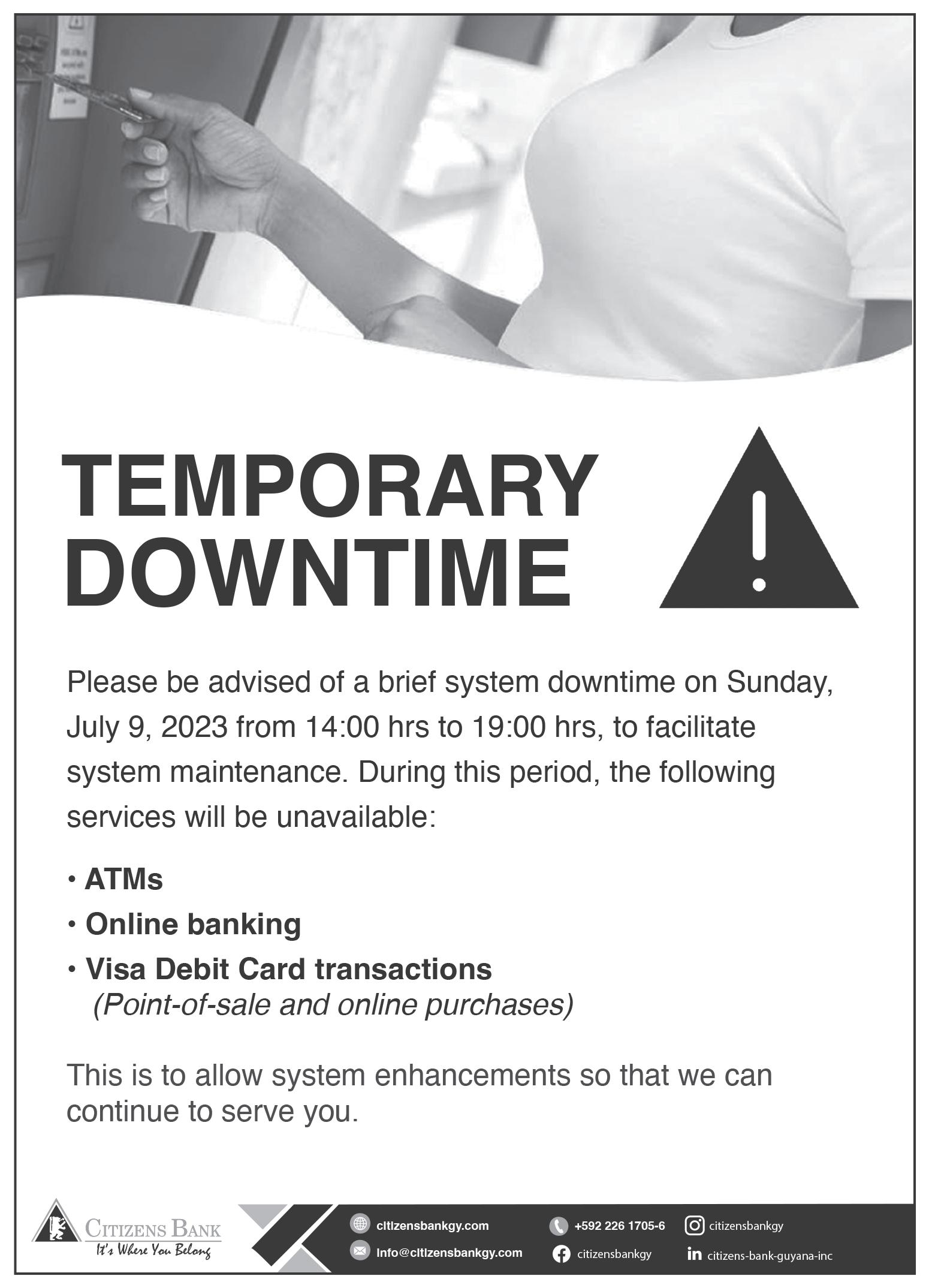

XV CHRONICLE PEPPERPOT ― Sunday, July 09, 2023
CLIMATE CHANGE! Is it an issue for Children?
WITH the Schools’ academic year of 2022- 2023 coming to a close, I can’t help but feel forlorn with thoughts of the impacts that this phenomenon of Climate Change will have on the younger generation, situations that were not their creation but will be their legacy.
Climate change as we know it is a devastating reality and one that our children will come to know and bear the brunt
of its consequences.

According to the World Health Organization, children are a vulnerable group and climate change poses one of the biggest health threats to children in the 21st century. No one is immune to the effects of climate change, but one of the largest groups to be affected will be children under the age of five.
With the altering weather patterns and disturbances to ecosystems, climate change will and has had significant implications for human health, especially children, since many of the global killers of children are sensitive to climatic changes such as flooding and drought. It is reported that children are dying from a small number of preventable and treatable diseases and conditions, including diarrhea, malaria and malnutrition due to climate-related changes.
Climate change can potentially increase outdoor air pollutants, such as dust from droughts and ground-level ozone. Ground-level ozone and particulate matter are associated with increases in asthma and other respiratory conditions in children.

Changing weather patterns affect agriculture. As the world warms, people could suffer hunger and water shortage. As the rains fail to come, crops will wither and livestock will die, exposing children to starvation and diminishing water supplies for drinking and hygiene.
Children drink more water than adults per pound of body weight. They swallow about twice as much water as adults while swimming. This can increase their exposure to certain contaminants in water and the risk of developing gastrointestinal or other illnesses.
Evidence suggests that developing countries like Guyana, located in warmer regions and which rely greatly on agriculture, will be worst affected by
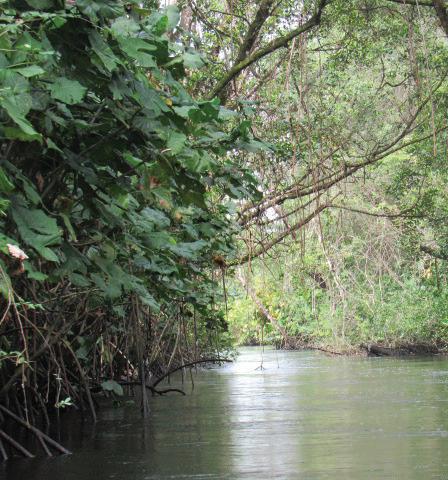
XVI CHRONICLE PEPPERPOT Sunday, July 09, 2023
SEE PAGE XVII
CLIMATE CHANGE! Is it ...
FROM PAGE XVI
changes in rainfall patterns; this is a fact that we can already attest to, as we are experiencing greater weather extremes and increasing droughts and floods. Changes in precipitation patterns are also likely to affect the quality and quantity of water supplies, thus compounding the impact of poor water and sanitation and malnutrition. Hungry families may be unable to send their children to school or afford health care. Moreover, hunger creates an environment that fosters crime.
The world we are living in is changing. Never before has it been so important to educate the next generation about climate change. Our children have the right to know the impacts these major challenges facing humanity might have on them. But more importantly, they also need to be taught how they and everyone else can become part of the solution by living sustainable lives. Our children need to enjoy the outdoors. Expose your child to nature as much as possible. Encouraging them to play outside helps nurture their enjoyment of and respect for nature.
We only have one earth, so we need to look after it well. We can’t just jump into a spaceship and go somewhere else if things don’t work out here – at least not in the near future.
For the sake of our children and our future, we must do more to combat climate change.
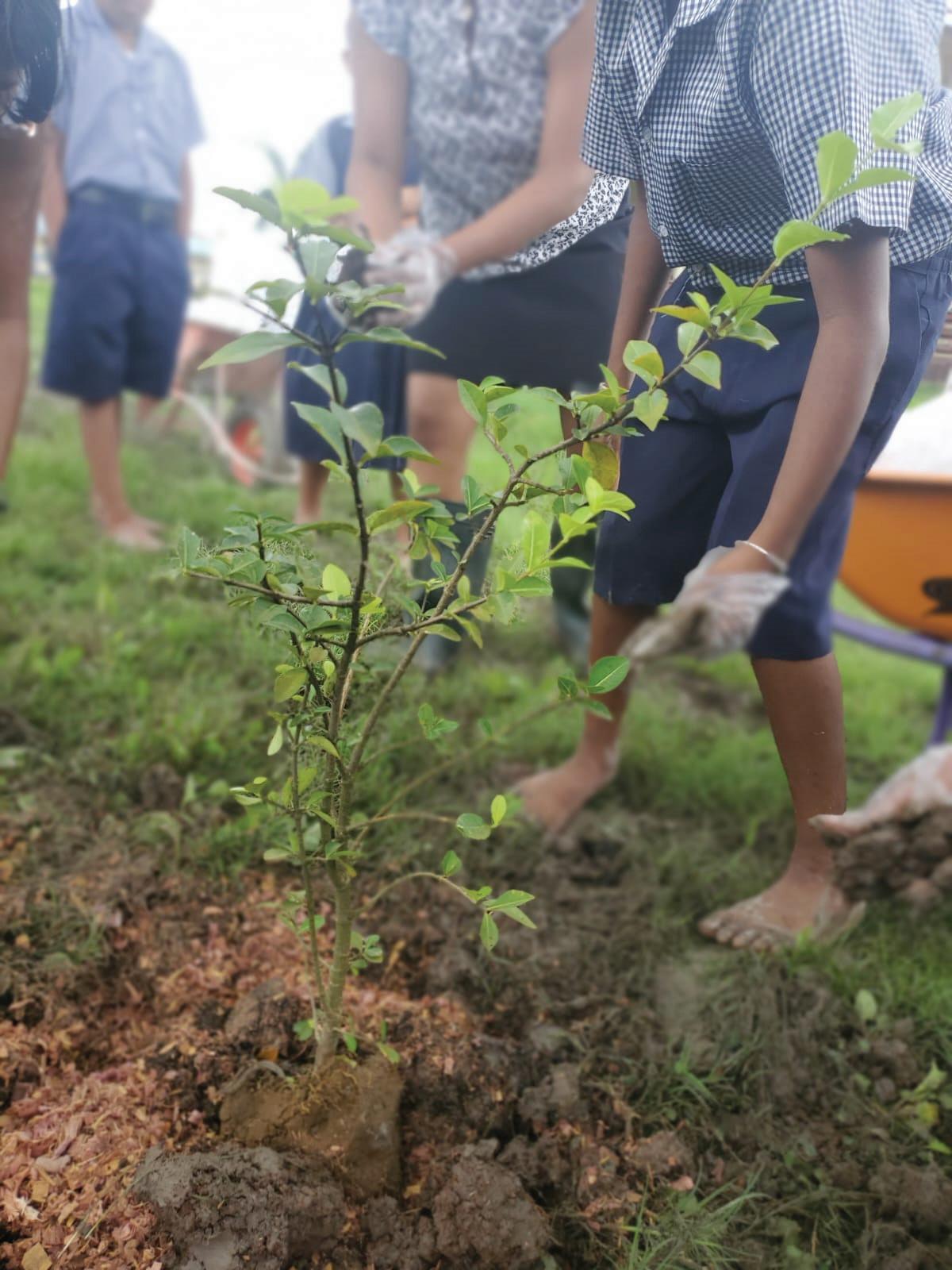
The environment is everybody’s business let us take action to safeguard our children!!
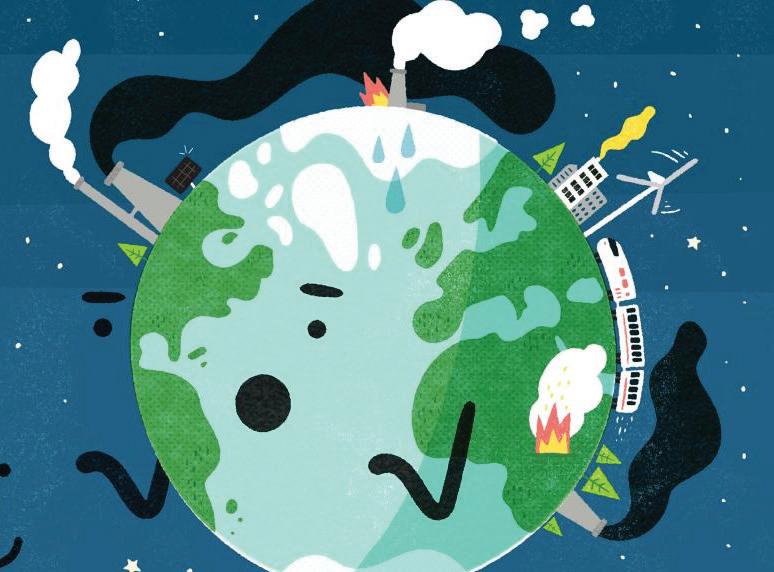

You can share your ideas and questions by sending letters to: “Our Earth, Our Environment”, C/O Communications Department, Environmental Protection Agency, Ganges Street, Sophia, GEORGETOWN, or email us at: eit.epaguyana@gmail.com. Follow us on Facebook and Instagram and subscribe to our YouTube channel.

XVII CHRONICLE PEPPERPOT ― Sunday, July 09, 2023
Promoting inclusive education for ...
FROM PAGE II
team consists of seven team members who are all alumni of the Youth Ambassadors Program from various cohorts spanning 2015-2019.
The team is being led by Youth and Community Development Specialist Laurel Seales, who holds a wealth of knowledge in the areas of youth development, learning disabilities, and sustainable development. Other team members are Rehabilitation Specialist Natisha Mookutnauth; rehabilitation specialist Sarah Dos Ramos; inclusive education advocate and teacher Andre Ramaldo; Rhodes Scholar Rawletta Barrow; C.X.C’s 2020 top CAPE performer Brianna Gopie; C.X.C’s 2022 top CAPE performer, Mr. VishKistama; law student, Mia Barker and social media and marketing specialist, Raquel Meenkum.
“The underlying purpose of Project Inc. is to elevate the level of awareness of Guyanese teachers about the notion of an inclusive classroom and to provide support in the form of educational training on how teachers can create a more inclusive learning experience for all children under their care rather than use a more segregated approach to teaching and learning,” said Seales, Head of Project Inc.
The project seeks to target approximately 5,000 persons through the use of marketing strategies such as; posters, videos, and a panel discussion, which highlights the need for inclusive education for students with learning disabilities in Guyana’s education system. They will also engage the Ministry of Education in discussions about broader structural considerations that will foster inclusion in the classroom and make accommodations for students with learning disabilities.

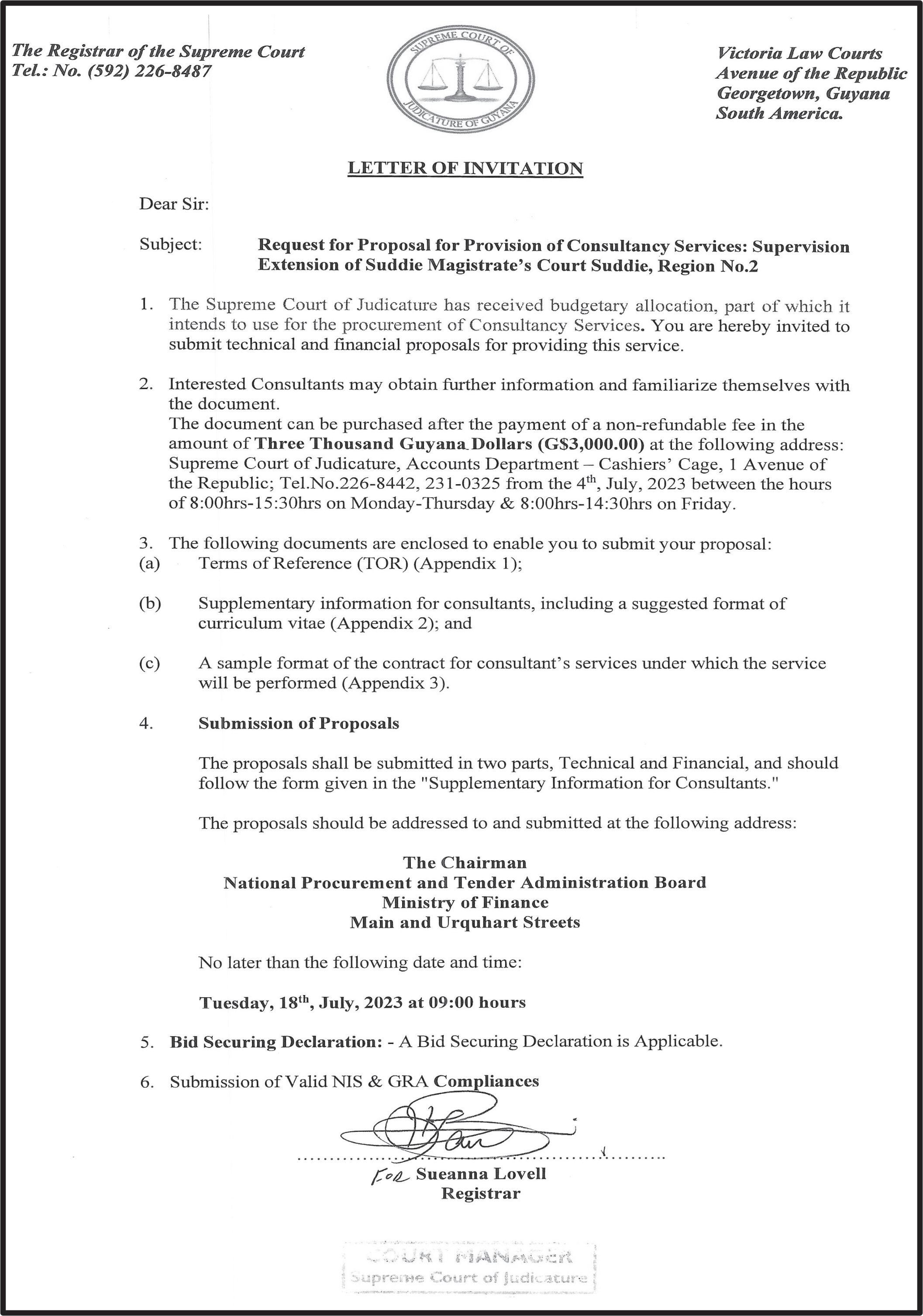
To date, Project Inc has successfully completed a twoday workshop at the Berbice High School, where they trained a total of 100 trainee teachers from the Cyril Potter College of Education (CPCE) and 60 trained teachers from across Berbice, Region 6. These teachers are now equipped with knowledge on how to identify and assist students with learning disabilities. When the Pepperpot Magazine asked what the future plans were for the project, Seales responded by saying, “Though the project focuses on inclusive education by addressing the needs of learners with learning disabilities, the team hopes to advance their mission by targeting issues related to educational inclusion that ensure equitable opportunities for all students to learn, contribute and participate in all aspects of school life”, he continued, “This goal will seek to reconfigure physical and social structures to welcome diversity (e.g., of abilities, culture, ethnicity and gender identity). Pending the removal of barriers, additional support may be required to ensure that all individuals’ rights to access and inclusion are respected”.
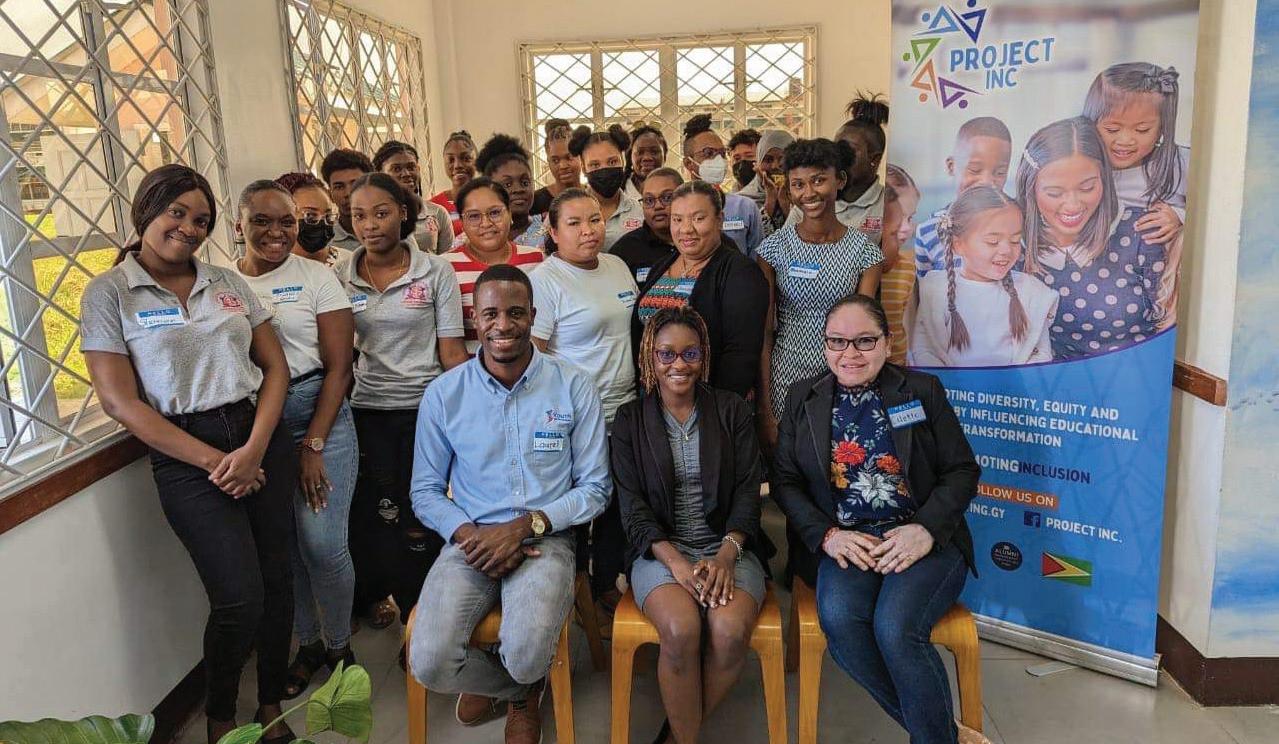
XVIII CHRONICLE PEPPERPOT Sunday, July 09, 2023
A Project Inc workshop session
A group of trainee teachers who participated in the Project Inc workshop sessions alongside coordinating team members
Celebrations continue
THE Caribbean Month celebration is truly an amazing experience I continue to enjoy. With the Juneteenth celebration, it is double enjoyment. Caribbean Month, also known as Caribbean American Heritage Month, is celebrated annually in the United States in June. It commemorates and raises awareness of the contributions and influences of Caribbean Americans in American society.
Here are a few ways in which Caribbean Month celebrations can influence people: Cultural Exchange: Caribbean Month celebrations provide an opportunity for people of diverse backgrounds to engage in a cultural exchange.Individuals can learn about Caribbean customs, traditions, and history through music, dance, art, food, and other cultural expressions.
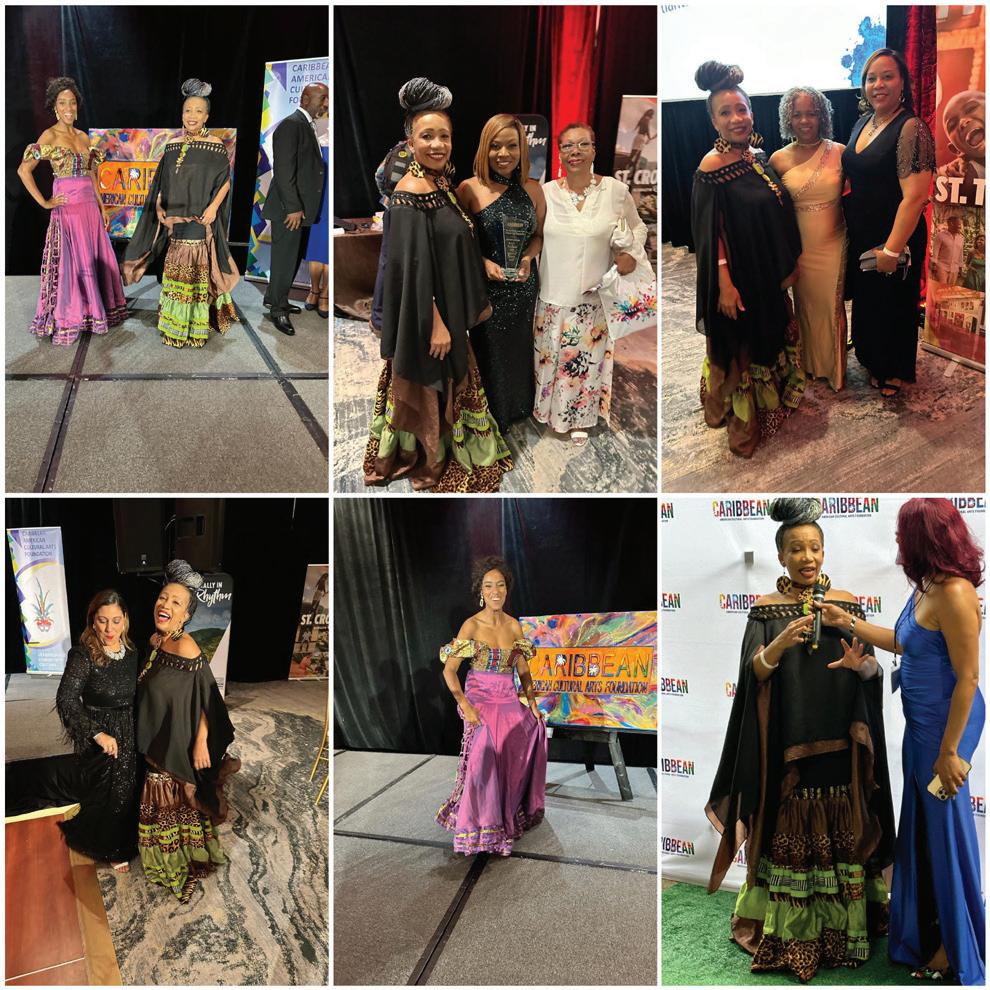
Appreciation of Diversity: These celebrations promote cultural diversity by highlighting the unique customs, languages, and traditions of the Caribbean region. This fosters a better understanding and appreciation of the rich and diverse cultural heritage within American society.
Community Building: Caribbean Month celebrations often bring communities together. Through various events such as parades, festivals, and concerts, people have the chance to
socialise, connect, and build relationships, thus strengthening community bonds.
Educational Opportunities: These celebrations offer educational opportunities for individuals to learn about the significant contributions made by Caribbean Americans in various fields, including arts, literature, sports, politics, and more. This knowledge can inspire and motivate others to pursue their own passions and goals.
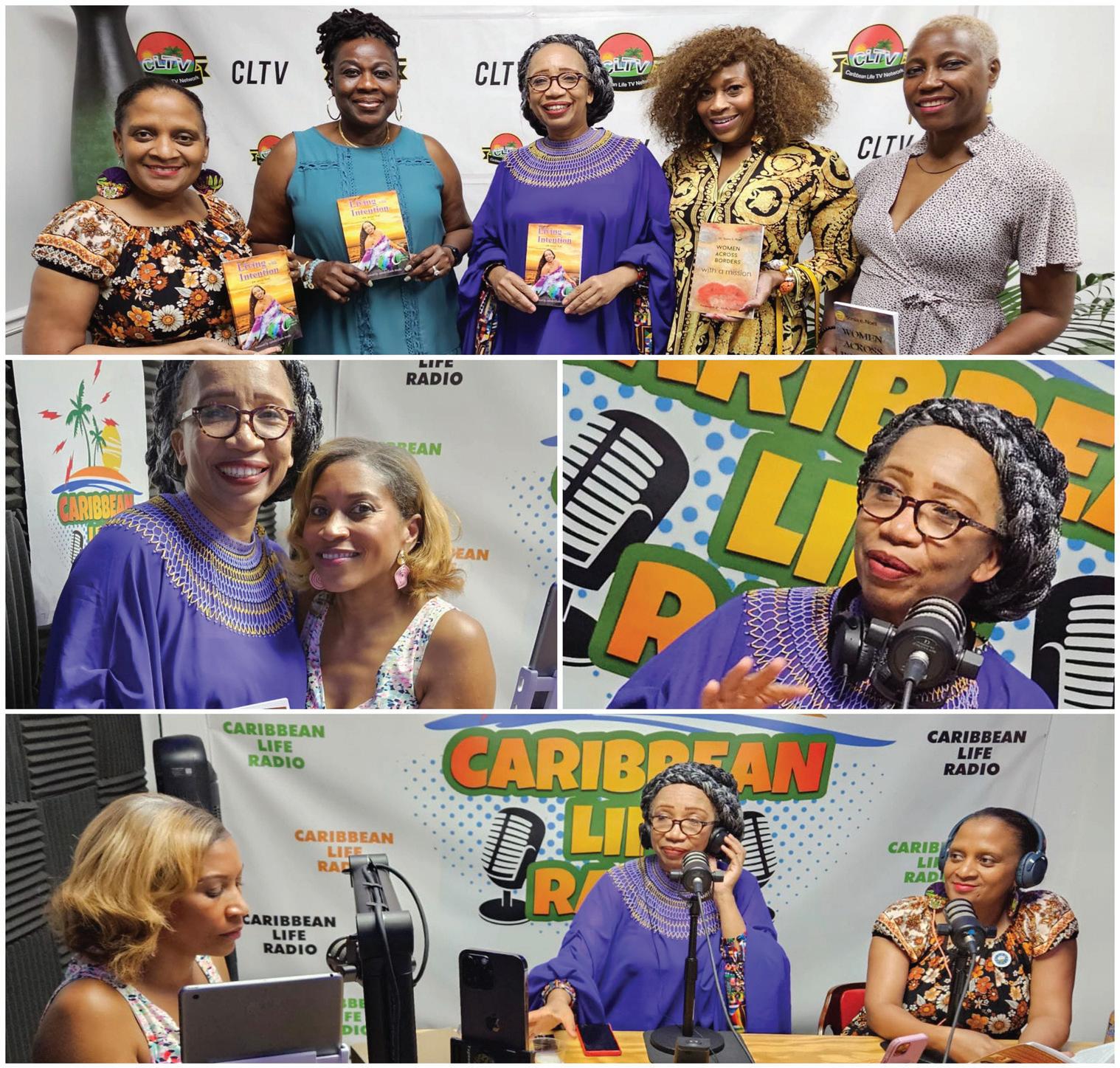
Economic Impact: Caribbean Month celebrations can have a positive economic impact on communities by promoting tourism, local businesses, and job opportunities. Festivals and events attract visitors from both local and international communities, leading to increased spending and economic growth. Organisations such as The Caribbean American Cultural Arts Foundation,Caribbean Association of Georgia and Caribbean Life Radio and TV are helping to highlight the contribution Caribbean people are making in the US, Caribbean and other parts of the world.
The Caribbean American Cultural Arts Foundation celebrates a distinguished list of
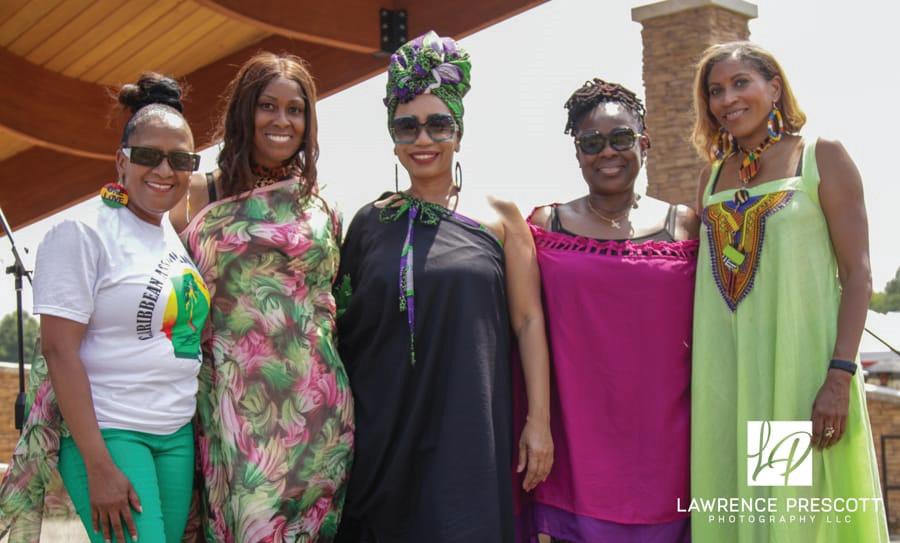

honorees at the luxurious Four Seasons Hotel Atlanta. 2023 awardees are Milton J. Little, Jr., President & CEO, United Way of Greater Atlanta,Michael Lee-Chin, Chairman, Portland Holdings, Verónica Maldonado-Torres, President & CEO, Georgia Hispanic Chamber of Commerce Honorable, Judge Jewel Scott, Superior Court Judge, Clayton County, Ga, Abby Phillip, Senior Political Correspondent, CNN , Sharon Lawson, Good Day Atlanta Anchor, Fox 5 Atlanta , Lisa Y. Gordon, COO, City of Atlanta.
CACAF also recognised members of Atlanta’s Caribbean American community who work tirelessly to promote Caribbean representation in media.
This year’s Community Movers & Shakers are: Lawrence Prescott, CEO & Founder, Caribbean Life TV ,KaliahHenton-Jones, CEO & Founder, Henton-Jones Media and Warren Mitchell, President, Virgin Islands Association of Georgia

Caribbean-American Cultural Arts Foundation is a national organisation, based in Atlanta, Georgia.Thisorganisation is a non-profit organisation dedicated to the development of cultural arts programs and educational mentorship. C.A.C.A.F. values our communities and focuses on studying, advancing, and presenting Caribbean arts, culture, and humanities.
The highly anticipated fundraising gala was full of the Caribbean’s vitality, culture, and elegance with the excellence displayed across the diaspora. The opening was a grand entrance of colourful carnival concept costumes accompanied by talented musicals expressing pulsating rhythms with Caribbean beats. All proceeds benefit disaster relief efforts
SEE PAGE XX
XIX CHRONICLE PEPPERPOT ― Sunday, July 09, 2023
Celebrations...
FROM PAGE XIX
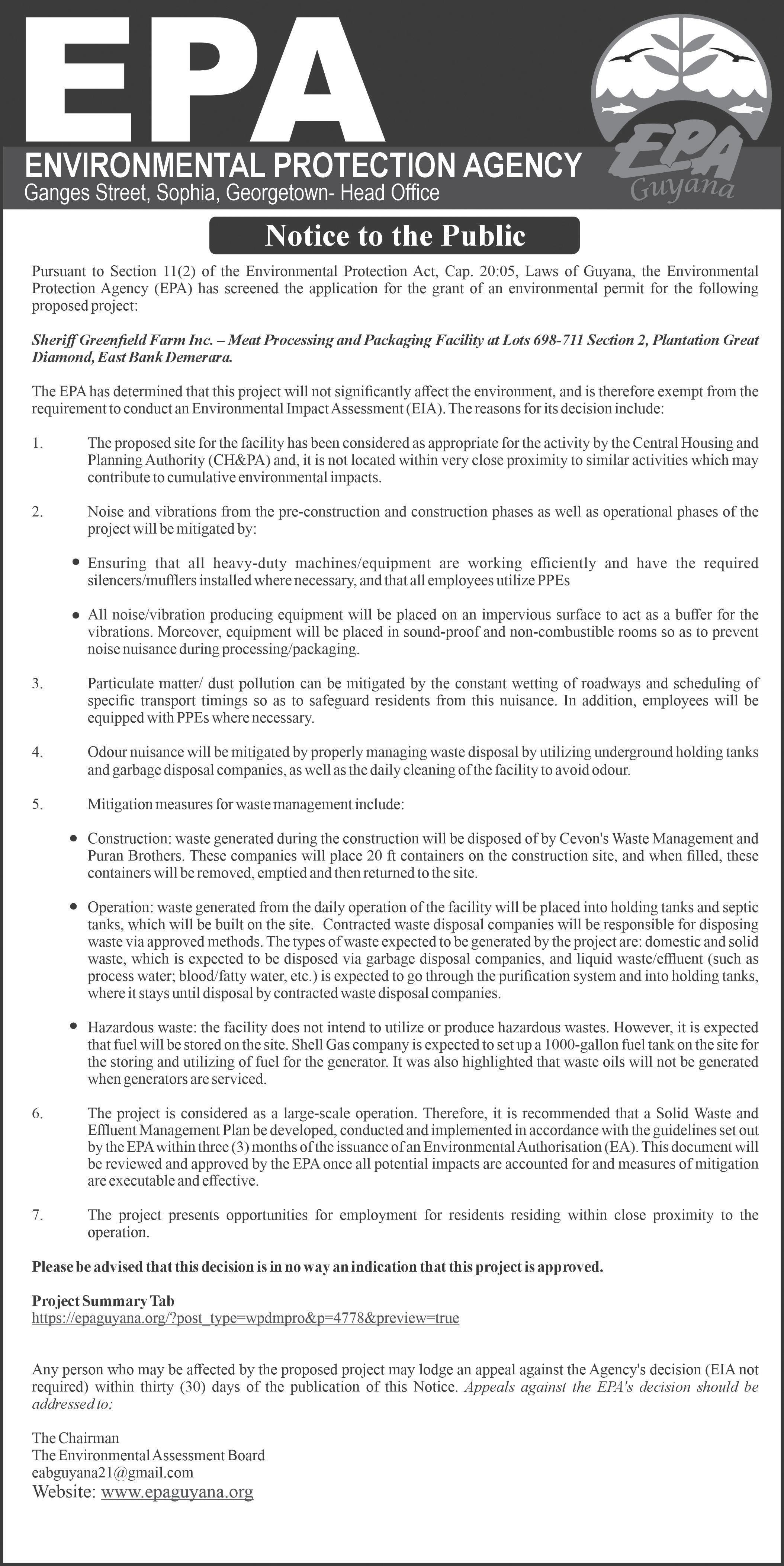
and support educational mentorship programs for deserving students. The Captains of Industry Celebration will honour the achievements of Caribbean American influencers who have made their mark in business and a difference in people’s lives throughout the nation.
“Our vision is to see a world where people across the Ca-
ribbean diaspora are given equitable opportunities, resources, and support to transform their communities and leave those spaces more viable and sustainable than how they encountered it.” Chairman Micheal Thomas
It was an honour to be a special guest and have this year’s Mistress of Ceremonies Melissa Noel wear one of my exclusive designs. She is the Contributing News and Politics Editor of Essence Magazine and a notable Caribbean Journalist with Guyanese roots.
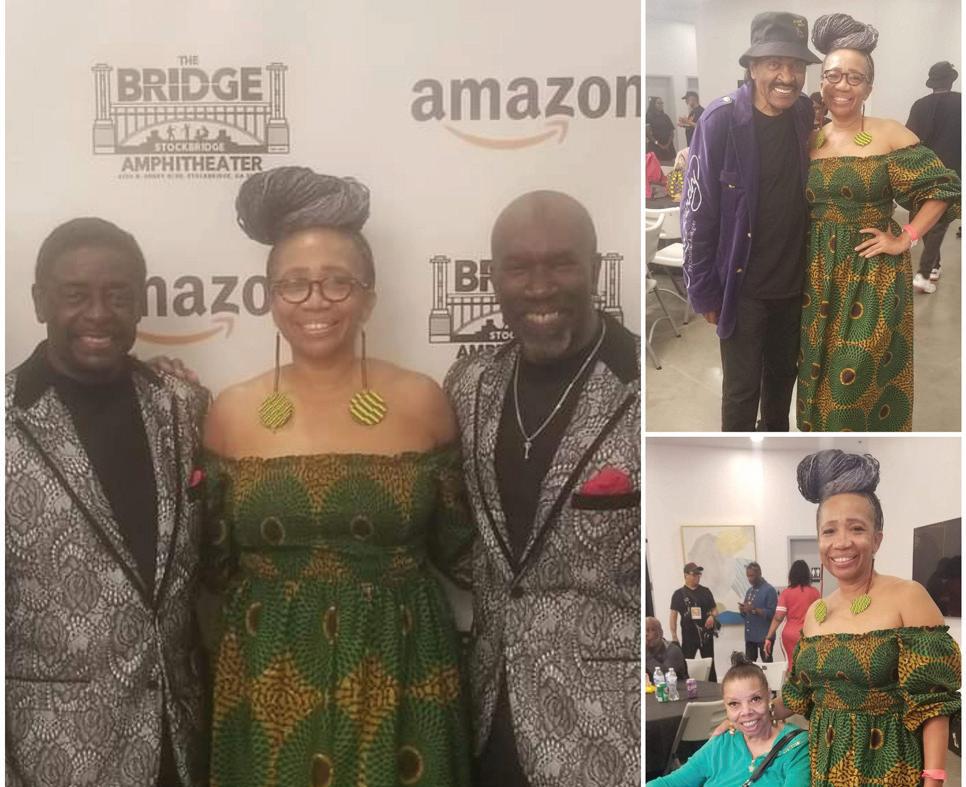
I feel proud when I see Guyanese Women leading effecting. Samantha Samuels, President of the Caribbean Association of Georgia, is an example. She convinced me to stay and showcase at the Caribbean Cultural Festival. I was happy I did because I had the opportunity to meet new people from across the Caribbean and display my new collection. I was also featured as a Caribbean author for our celebration. I even attended a church service in honour of Caribbean Month with my friend Sharon.
My friend Cloyette was invited as her guest to the Gracie Mansion Caribbean celebration in NY. I felt like the bell of the ball with the attention my outfit received. I even pick up some new clients at that event. It was a great gathering of Caribbean people and an opportunity to network. It is evident how much the Mayor of New York City, Eric Adams loves his Caribbean supporters and the reverse was also obvious. It feels great to be back in the midst of this celebration and I have something special for next year.
This was the first time I had experienced a Juneteenth celebration. On June 19, 1865, nearly two years after President Abraham Lincoln emancipated enslaved Africans in America, Union troops arrived in Galveston Bay, Texas, with news of freedom. More than 250,000 African Americans embraced freedom by executive decree in what became known as Juneteenth or Freedom Day. From all reports, the events are becoming more impactful.
My friend Angela Moore, District Representative District 91 in Atlanta, was invited to one of the events in Stockbridge. I have heard about Millie Jackson and the Manhattans since I was a child and finally witnessed live performances. Grammy winner Baby Rush, Lenny Williams and others were on the line-up. I had the opportunity to be backstage, so I had the chance to chat and take pics with the performers.
Millie Jackson is really a Character and she had me laughing with some of the things she was saying and how she was saying it lol.She loved the earrings from my new collection and I will be creating one for her with the clip on because her ears are not pierced. I received my Juneteenth T-Shirt from Mayor Ford of Stockbridge and I must express my gratitude for the welcome I received from him and the elected official from Stockbridge.
I promise them to visit again and that I will, God’s willing.
So many extremely positive things have happened on this trip and I am grateful. I thank God for all the doors he has opened for me and promised to have others walk with me as we continue to celebrate this beautiful journey called life BEYOND THE RUNWAY.
XX CHRONICLE PEPPERPOT Sunday, July 09, 2023
JOANNIE...
her senses were awakened by an invigorating masculine fragrance. She opened her eyes and jumped up startled.
A handsome, fair young man dressed in an immaculate black suit was standing at the bottom of the church steps.
She looked around to see who else was there, but there was no one.
“Who are you?” she asked, a tinge of fear in her voice.
It was unusual for someone dressed like that to be at the church at that hour unless he was a …
“Oh, no!” she gasped, her voice muted.
He raised his head that he had lowered a little and looking at him, recognition grabbed at her with cold fingers. She gasped, stepping back, almost falling over.
“Oh my God, I know you! You’re Damien. You died a couple of years ago in a motorbike accident.”
“Yep,” he nodded his head, standing there as though this was normal.
Joannie tried to steady herself, taking several deep breaths. He seemed so real, like a living person that she wouldn’t have known she was talking to a ghost if she hadn’t recognised him.
“Don’t be afraid,” he said, “I am here for a good reason.”
Her heart was still beating rapidly and she asked in a shaky voice.
“Why am I seeing you?”
“Because you need me.”
“A ghost?” she asked in an incredulous tone.
“And I need you,” he continued.
She didn’t say anything for a moment, feeling as though she was in some kind of crazy dream, then she said, “I don’t understand.”
“I was not such a good person in life. I was wild and arrogant.”
“That I know,” she said quietly.
“I was also a disobedient child, hurting my parents’ feelings. I did not listen to my mother that day not to go riding on that CBR. She is still crying for me.”
Joannie sat down slowly on the steps, his words seeming to calm her fear, for though he was not of this world anymore, she could understand his pain and she said,
“After the accident that day, your friends were saying that death was riding with you.”
There was a long moment of silence from him, then he said, “I wasn’t such a bad guy to go to hell, and not good enough for heaven, so I was sent back to do one great good for someone before the doors of heaven can open for me.”
“Why did you choose me?”
“I had been looking for someone who needed divine help and found no one until you walked in here tonight in deep emotional pain.”
“Story of my life,” she said resignedly, “Don’t think anything can change that.”
“Yes it can. The beauty inside you must be brought to the outside, so you can be seen and loved for who you are.”
“I’m not sure about that,” she said, an uncertain look in her eyes.
“We’ll see,” he said.
Joannie wasn’t sure how she reached home that night, waking late in the morning. She did not bother looking in the mirror and walked slowly down the old stairs, unsure what she would see. But there was nothing unusual and as she ate breakfast, she pondered about the encounter with Damien’s ghost. It all seemed so real, but as the day progressed, she concluded, “It was either a dream or I am losing my mind.”
Night approached and she stayed at home, not daring to go out in the streets, but as the hours wore on, he arrived on a CBR bike.
“Oh!” she exclaimed quietly, “This is real.”
This time she wasn’t scared. Maybe it was divine help for the hopes she had lived with over the years.
He guided her, showing her the fine things in life, and how not to be self-conscious of her looks, for there was something beautiful in everyone.
She had a beautiful laughter that she was not aware of, given she hardly laughed. He walked with her everywhere, an unseen bodyguard, helping her build her courage and self-confidence daily.
She did not go to the market, hide her face under a straw hat, or sit at the back of the church anymore. Her personality changed with a warm smile and confident tone, surprising all those who often ridiculed and scorned her.
Her newfound self-belief encouraged her to follow a dream she had been nurturing to open her own little snackette,
FROM PAGE XII
thus extending the family’s food business. Damien advised her to talk to his mother for assistance from the Damien Foundation

she had established in his memory.
And that was the start Joannie wanted to elevate her life from poverty.
In the morning now, when she looked in the mirror, she saw that beauty from within and a sparkle in her black eyes, Damien had done his great good and Heaven welcomed him as life did for her.
XXI CHRONICLE PEPPERPOT ― Sunday, July 09, 2023
Tackling violence against children


VIOLENCE against children, the most vulnerable in our society, is not uncommon or unfamiliar. There are numerous bythe-way stories, or stories whispered because speaking up and speaking up loudly are sometimes difficult and even seemingly impossible. But we cannot kid ourselves into believing that violence isn’t perpetuated against our most vulnerable. And we cannot ignore the responsibility we all have to
and that contribute to unequal power relations and people’s ability to live happy lives. It is worth appreciating that violence just doesn’t happen because an individual drinks rum and loses proper judgement. Inequalities don’t exist because people are just crazy, abnormal, or lazy. Or that people ‘are asking for it.’ These things happen because we inherited exploitative systems and haven’t yet dismantled these. It happens because a little bit of power
pick away at issues until they decay and disappear continuously.
Violence against children, in particular, is a worldwide problem; it isn’t unique to Guyana. Still, that doesn’t give us a free pass in any way. Guyana isn’t a utopia where bad things don’t happen. It isn’t unpatriotic to accept this reality. If anything, we can easily and honestly agree that the country is a work in progress. And as we pride ourselves on being the world’s fastest-growing economy and boast about seemingly inevitable transformation, Guyana’s development can’t only be linked to towering buildings and widening roads. It must also be linked to fixing some of our systemic issues. Systemic issues like violence against vulnerable people- women and children. Systemic issues like the inequalities that exist
can easily go unchecked, and it happens because we quickly forget our collective outrage until the next tragedy occurs. These bad things also happen because we don’t appreciate how interconnected and overlapping issues are (and that they require intersectional solutions). These words sound fancy, but they all boil down to one common sentiment: we aren’t necessarily doing a perfect or faultless job at correcting age-old, recurring problems. As I got into writing this column this week, I thought it best to read up on studies done and the work of other columnists. Based on my reading so far, there are some research gaps specific to child violence. Nevertheless, there are some essential things to think about.
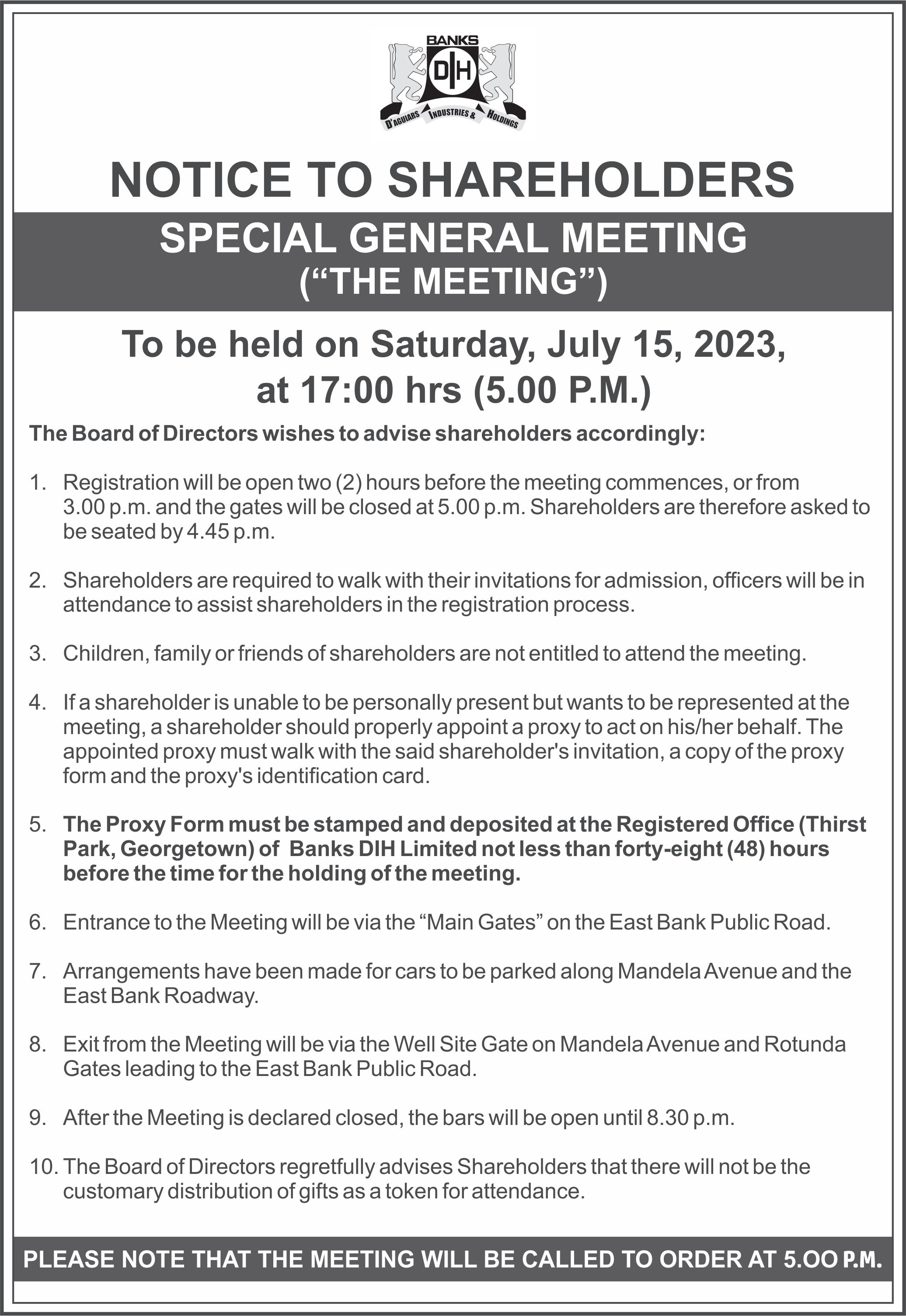
XXII CHRONICLE PEPPERPOT Sunday, July 09, 2023 SEE PAGE XXIII
A 2019 United Nations
Tackling violence...

(UN) report on Guyana women’s health and life experiences pointed out that enduring patriarchal norms (which emphasise that men and boys have a higher social status than women and girls) are the “primary driver” of violence meted out against women and girls. These can be viewed as among the root causes of violence. And this results in the policing and exploitation of their bodies by male counterparts, inhibiting their autonomy
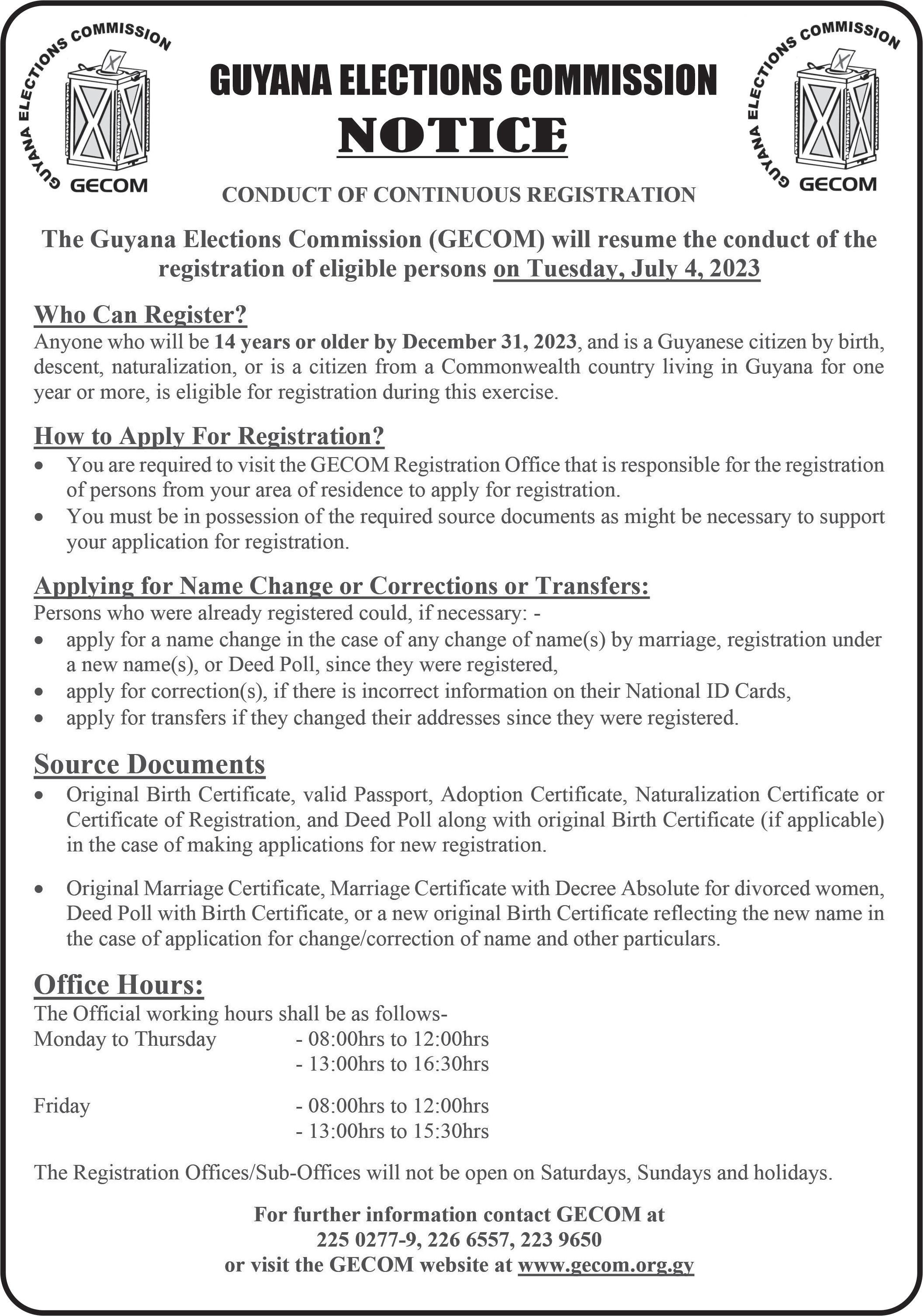
FROM PAGE XXII
and, generally, potentially exposing them to abuse. Therefore, addressing social and cultural norms perpetuating harmful practices is important. That could include community engagements and education.

I think another relevant point, especially now, is strengthening and depoliticising institutions involved in protecting children and other vulnerable groups. Those institutions include support bodies and investigative organs. It is no secret that public trust in many local institutions decays occasionally; social media comments are an easy way to confirm this. So restoring faith in our institutions and equipping those to work as they should must be considered imperative. Strengthening these institutions also means improving laws. Where satisfactory laws exist, the institutions must be empowered to do their work. The two go hand in hand, and the system of separating the powers that be was instituted to guarantee that all avenues for support and, if needed, redress, work properly.
Of course, more research is always useful, as is greater awareness. But maybe this time around, we would be better off if we focused a bit extra attention on dismantling harmful root causes of our issues and on beefing up the bodies and systems we already have in place so that they can work more meaningfully.
If you would like to discuss this column or any of my previous writings, please feel free to contact me via email: vish14ragobeer@gmail.com

XXIII CHRONICLE PEPPERPOT ― Sunday, July 09, 2023
What if you found out a single-use plastic you personally used harmed a sea creature?
THERE are endless marketing campaigns on turtles being harmed by straws in the ocean in the mass media. I’ve read that people even now refer to it as a climate change “cliche”. Some may be sensitised to the idea and some may even now laugh it off. Have you ever wondered though, if a straw you’ve used ever harmed a sea turtle? What if it’s that exact straw that you drank juice from ends up being littered into your drainage, then into your country’s river and then into the ocean and a turtle mistakes it for food? Have you ever thought that far? You see, the “cliche” is simply a term of description used for a larger epidemic. It’s an epidemic that we aren’t paying enough attention to. Every single day, you and I use single-use plastic products. There’s no lie in that statement because we can also indirectly contribute to the use of it. Whether it be plastic bags, plastic packaging covers, food packaging, some may be disposed of into a waste facility or dump site (like what we have in Guyana) and unfortunately, the remainder ends up in our oceans. According to the International Union for Conservation, it is estimated that over 400 million tons of single-use plastic is produced annually around the world and about 14 million tons of what is produced ends up in our oceans. Around 8 million pieces of plastic end up in our ocean every day.
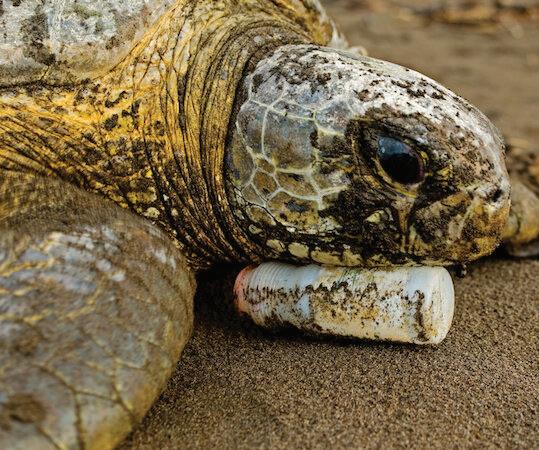
Now, imagine how lower those numbers would be if

every day, each of us actively remembered not to litter or to avoid unrestricted “dump sites” and dispose of our trash in waste bins that will be taken care of by a waste management company or our local community/town council. The world can’t rid itself of waste entirely. It’s nearly impossible for now. However, we can reduce the amount of waste we produce daily. Going back to the famous straw and turtle scenario, there is an actual scientific link to the dangerous plastic by itself. Turtles can mistake it for jellyfish (one of their normal dietary intake). It was proven that plastics can, over time, draw the scent to the ocean it’s in. As such, sea turtles may smell the plastic and mistake it for their own food. Over time, SEE PAGE XXV
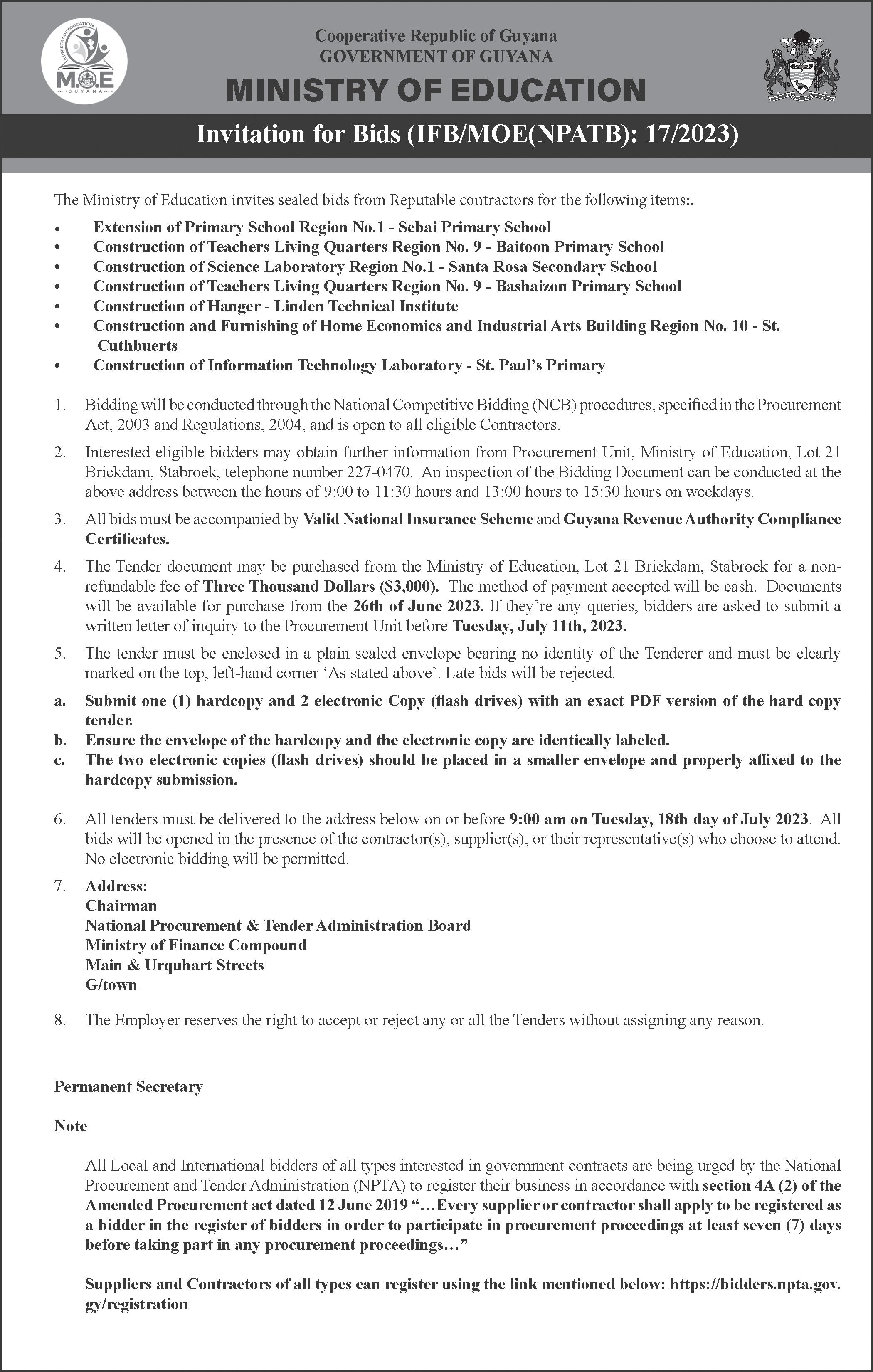
XXIV CHRONICLE PEPPERPOT Sunday, July 09, 2023
What if you found out a single-use plastic you personally ...
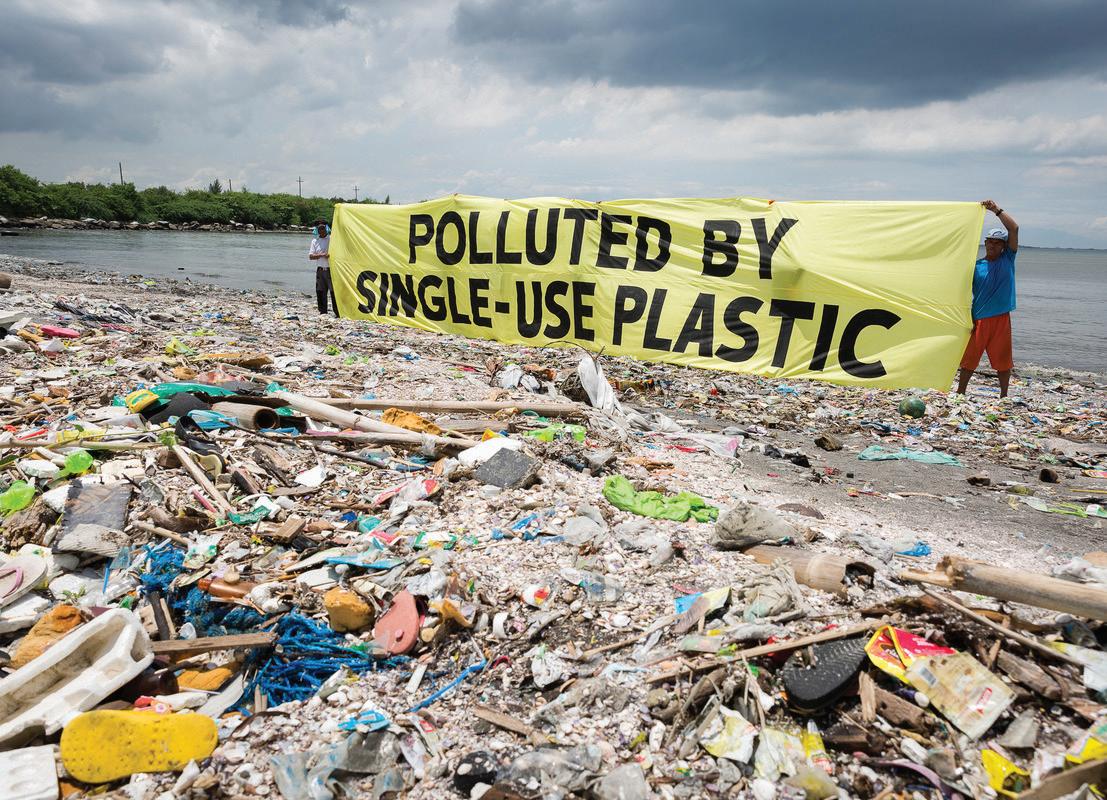
FROM PAGE XXIV
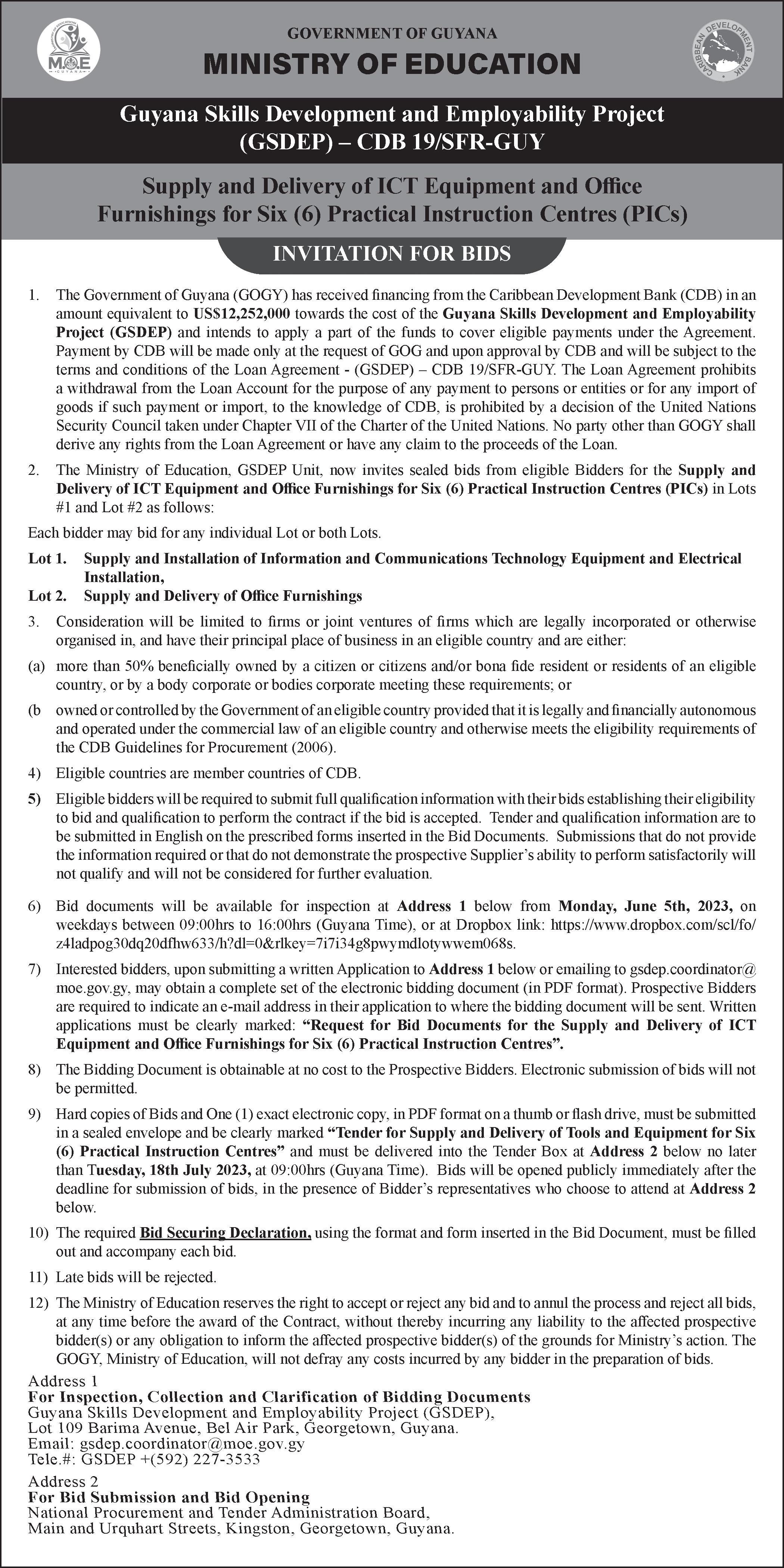
if they consume too much plastic, it can kill them. It is said that it takes 12 consumed straws to kill a turtle. Imagine if 12 specific persons chose to dispose of their straws wisely—it would end up in a waste facility and not in a turtle’s gut. The more I read and understand how disgustingly dirty and filthy our ocean is, the sadder I become because we’re slowly poisoning our planet.

Water is our main source of life, yet we do so little to protect the vast majority we currently have. When did you last trip to the sea walls or even the #63 beach in Guyana? You don’t have to look too far for examples of the global dilemma because our home is currently a prime example. We ought to adopt a better approach and culture regarding waste management. Even with public bins, people throw their waste everywhere else, even next to the bin, but not in
it. With that in mind, we also need stricter policies and regulations as it relates to waste management in Guyana. I want to urge our community leaders to emphasise the importance of protecting our environment, especially our ocean. It’s a shame that we say Guyana is a land of many waters, but yet still we’ve developed a culture to treat our waterways as if it’s a dumping site.
We ought to do better. Effective waste management facilities and systems should be established in every community, local clean-up campaigns should be done regularly (not only on occasions), and we as citizens of our land have to work towards ensuring our environments are clean for our future generations to come. Using reusable straws, shopping bags and even developing your own recycling system at home can all be small yet powerful steps to reduce waste. The little things add up in the end. Your household wastage numbers may be small percentages, but it’s still a part of the overall statistics that gigantically adds up at the end of the day. I urge you all to do your part to protect our turtles and all other marine life and our oceans. We’ll regret it if we don’t.
XXV CHRONICLE PEPPERPOT ― Sunday, July 09, 2023


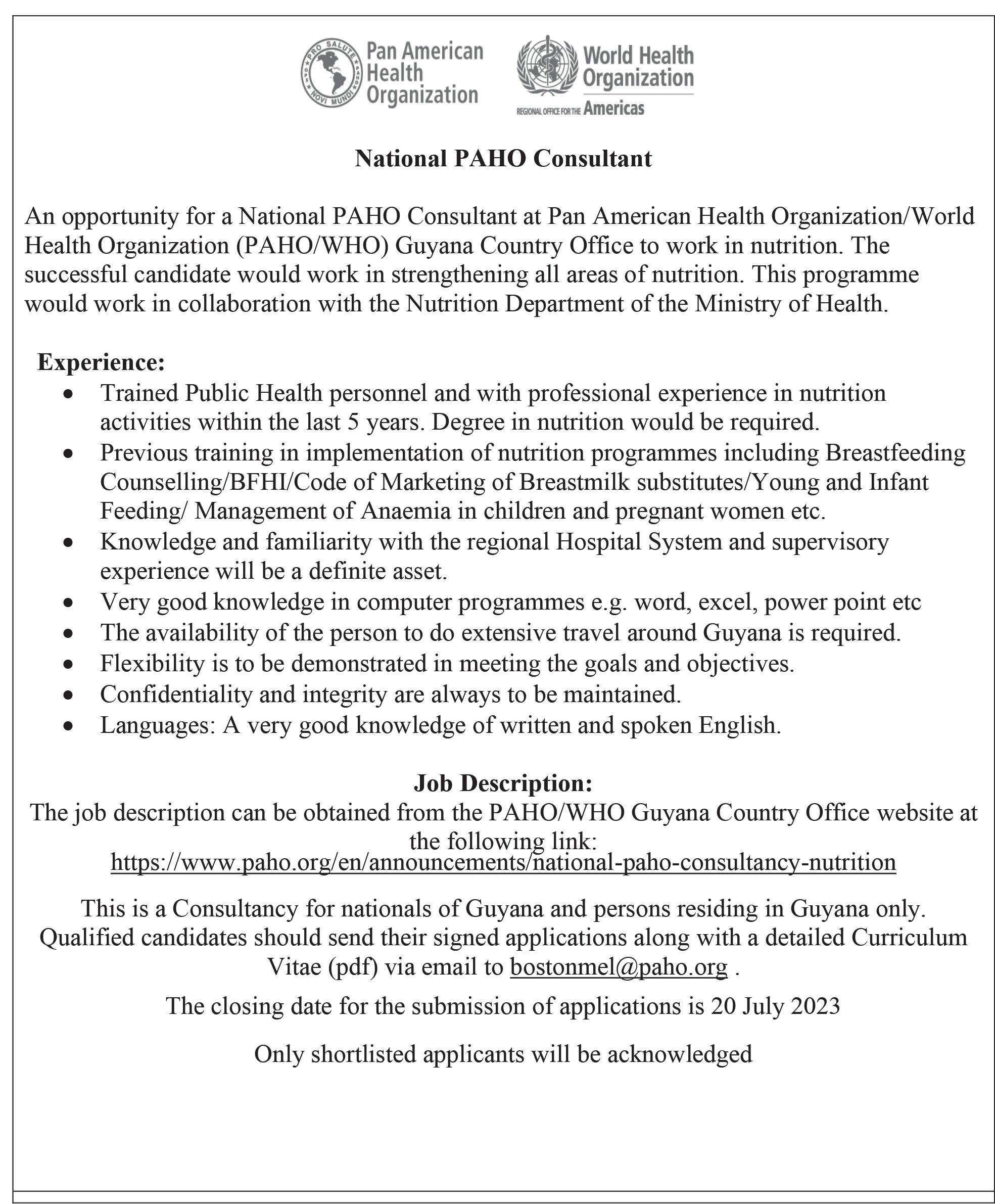
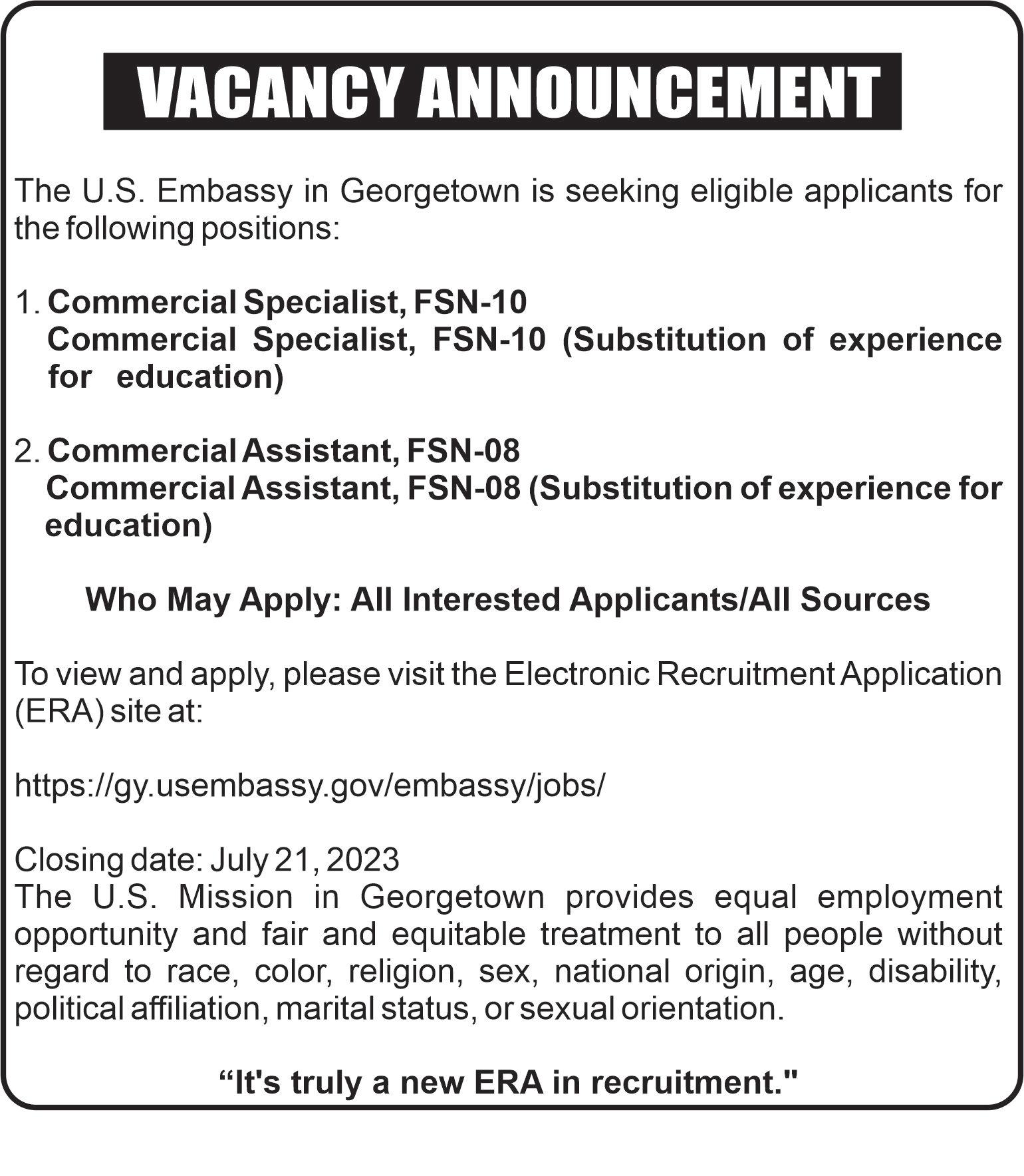
XXVI CHRONICLE PEPPERPOT Sunday, July 09, 2023

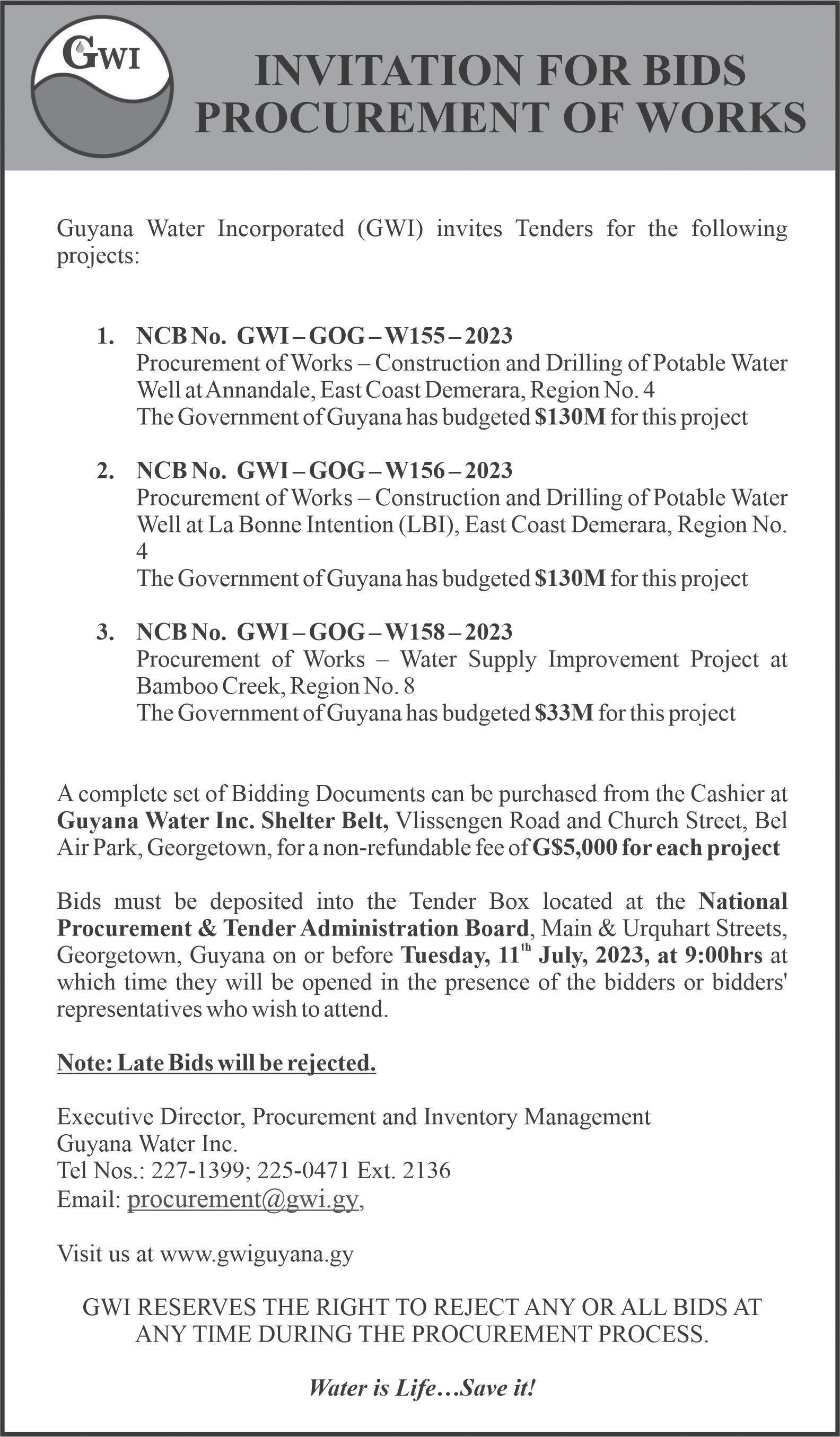
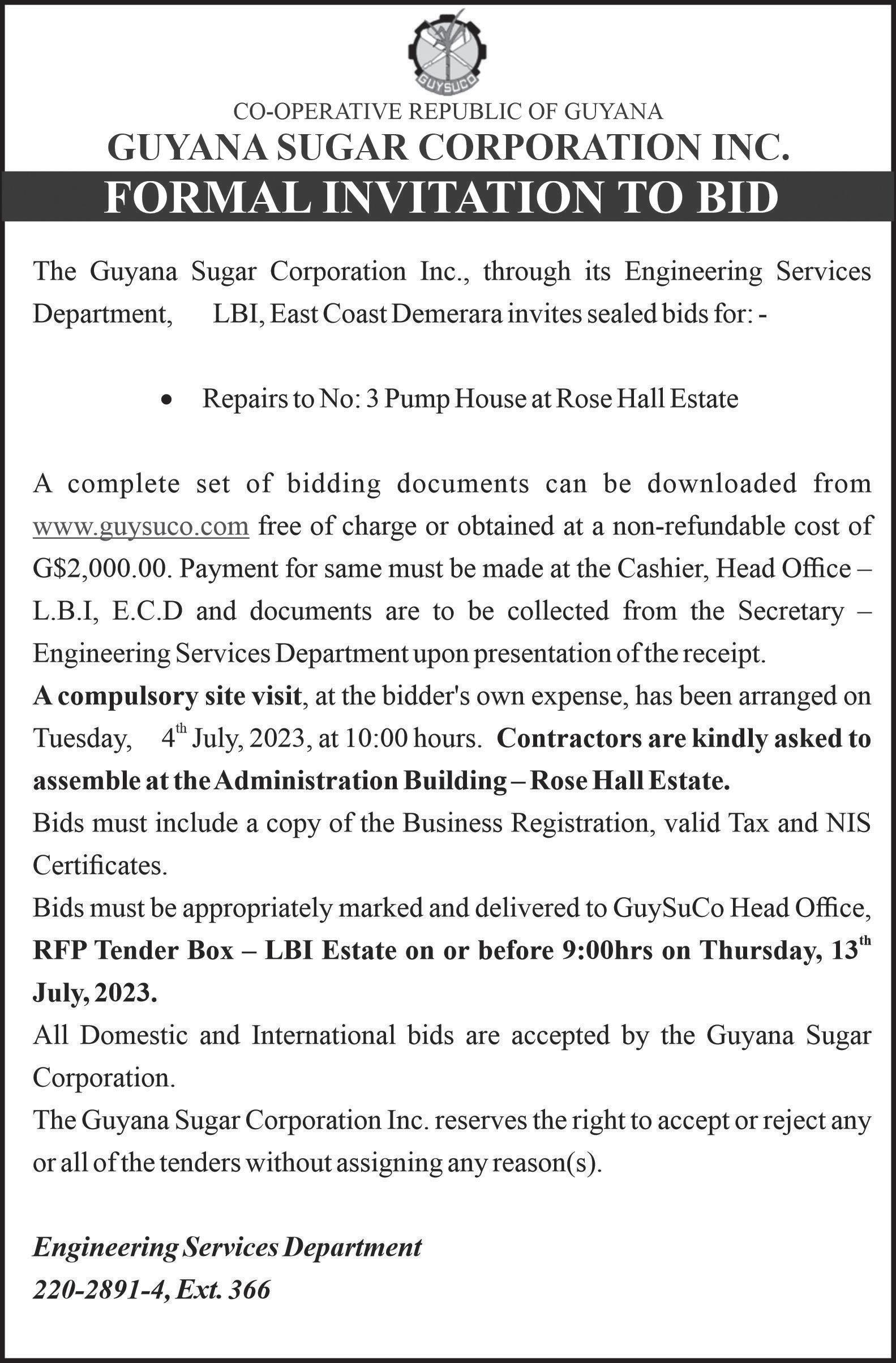
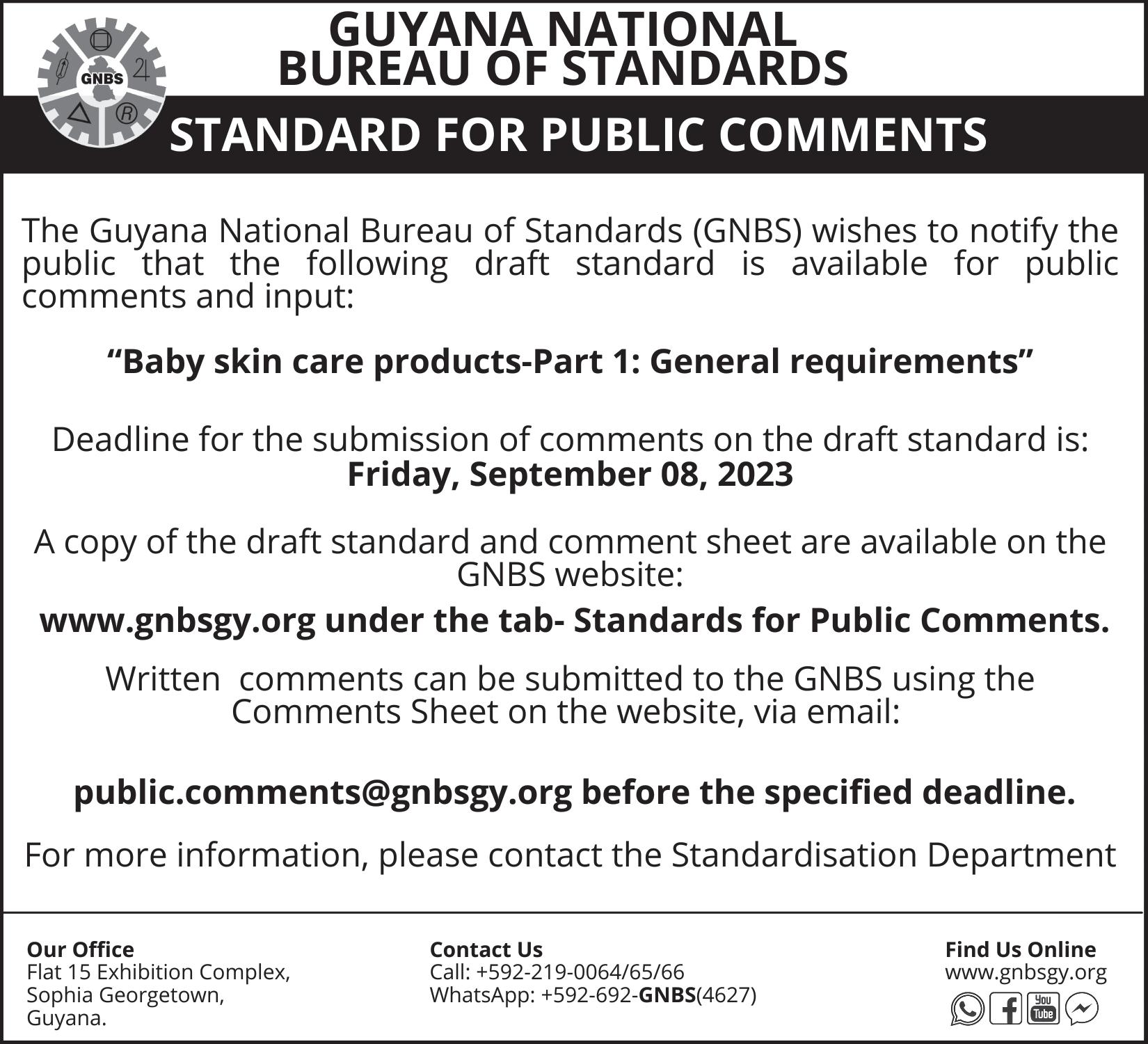
XXVII CHRONICLE PEPPERPOT ― Sunday, July 09, 2023
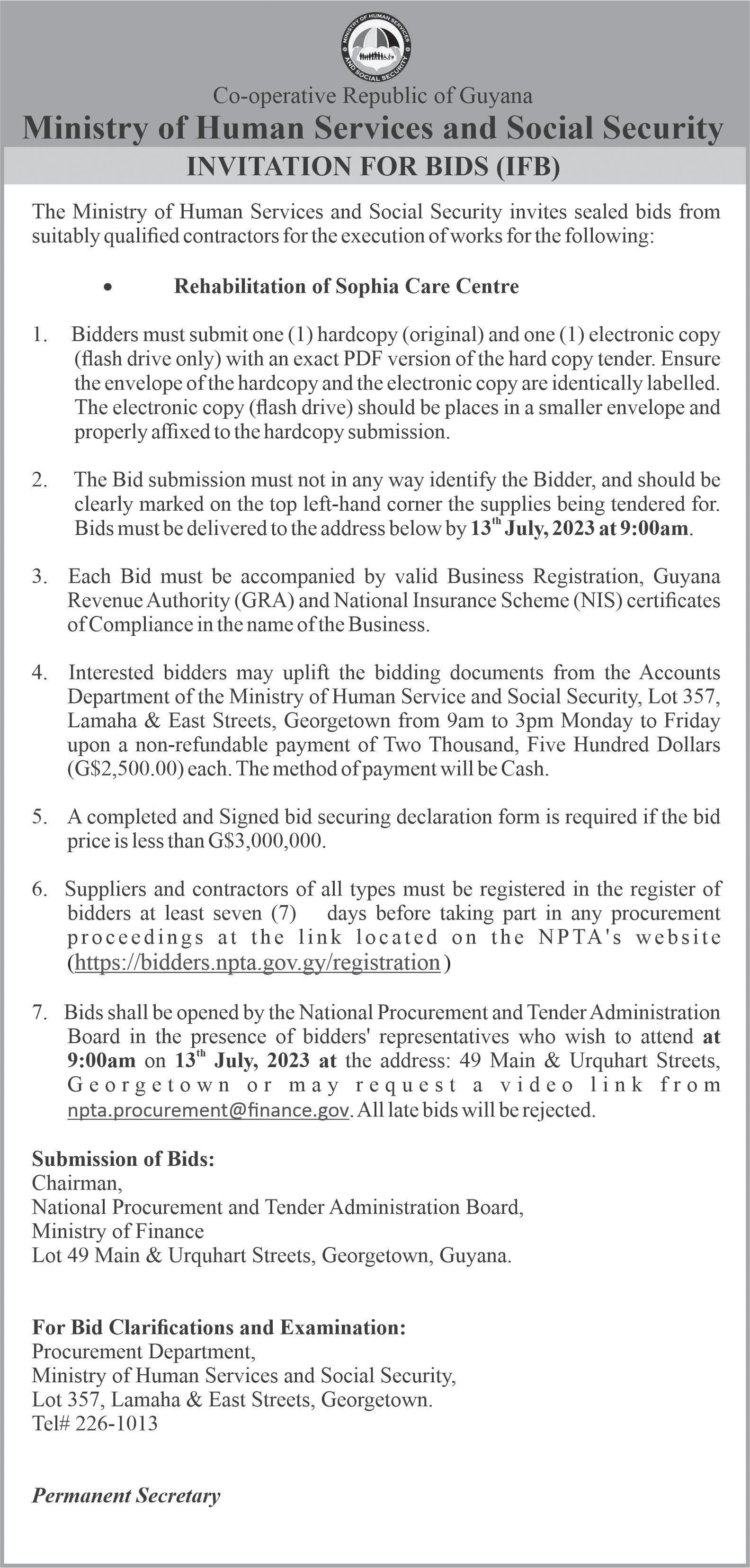
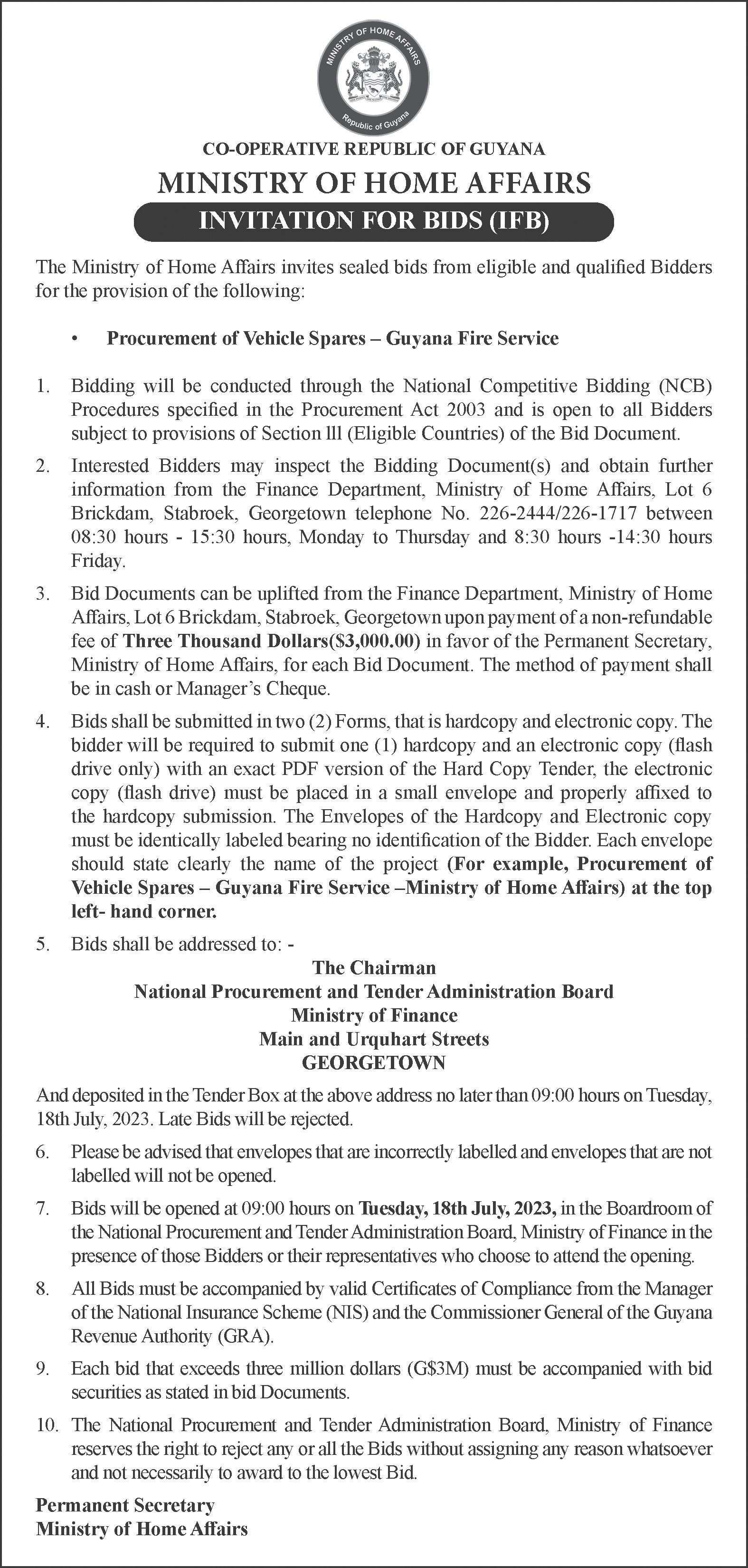

XXVIII CHRONICLE PEPPERPOT Sunday, July 09, 2023
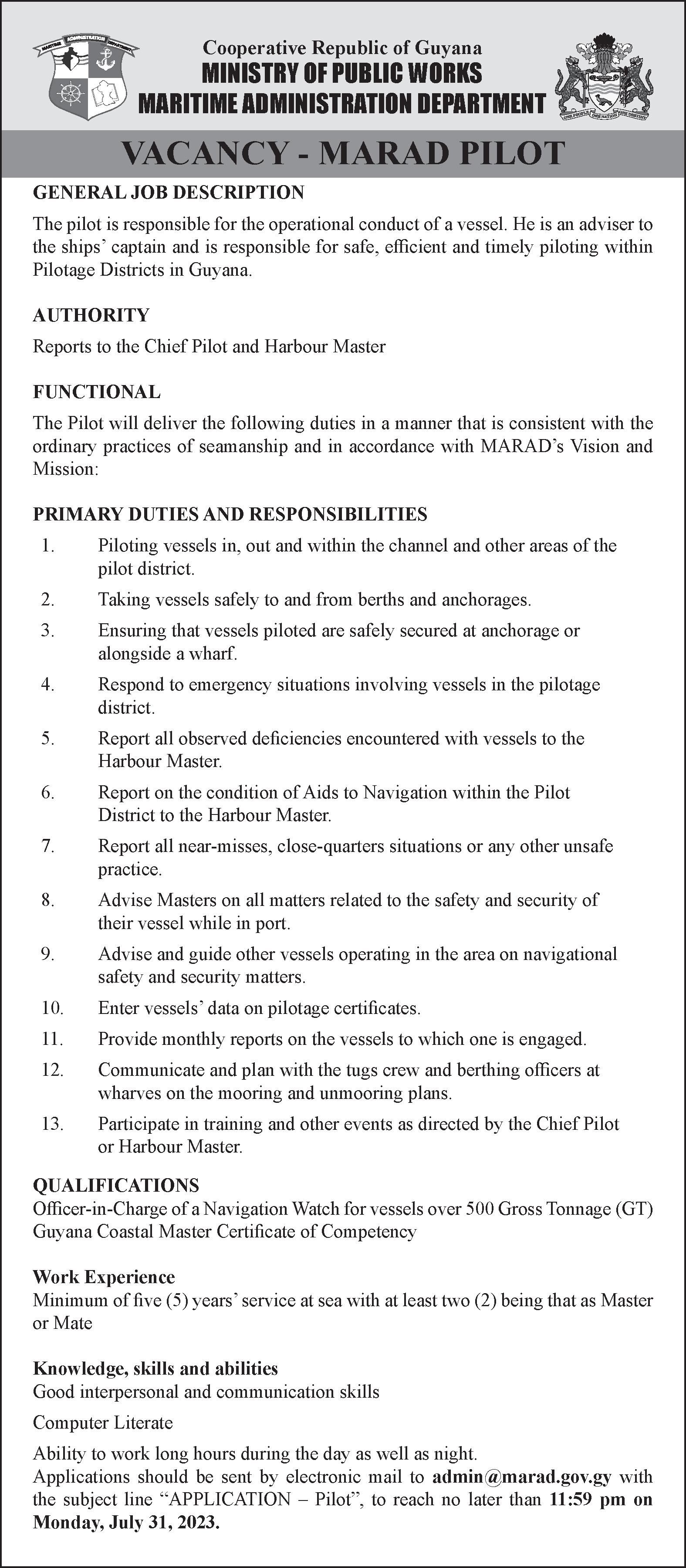
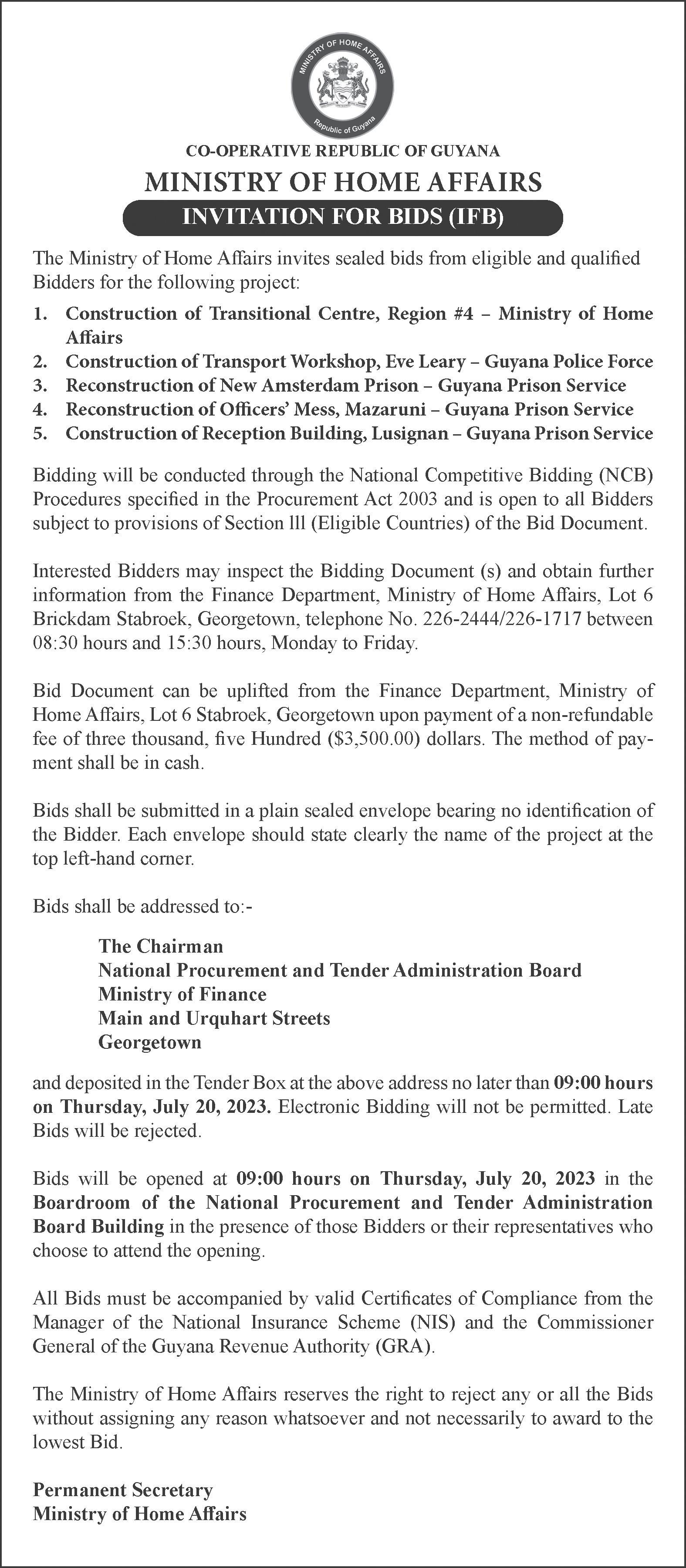
XXIX CHRONICLE PEPPERPOT ― Sunday, July 09, 2023
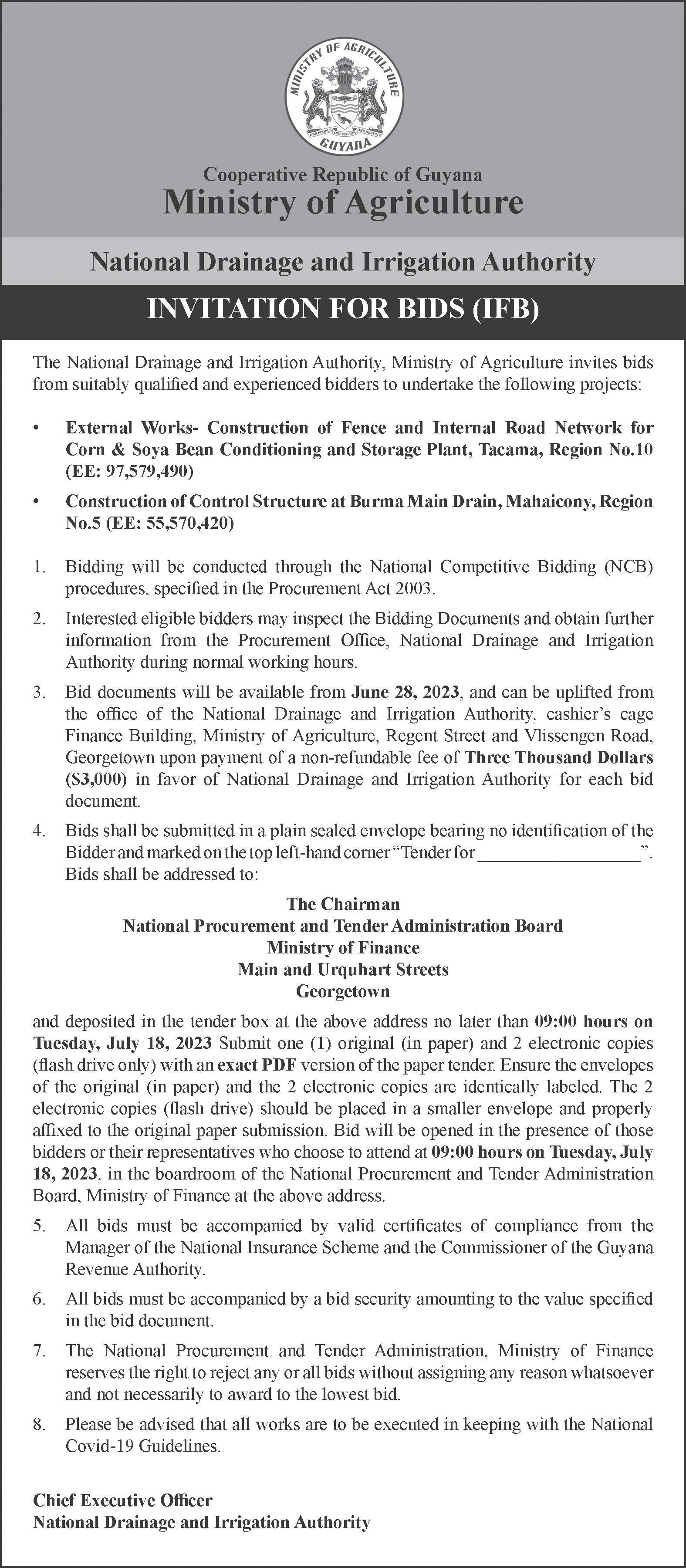
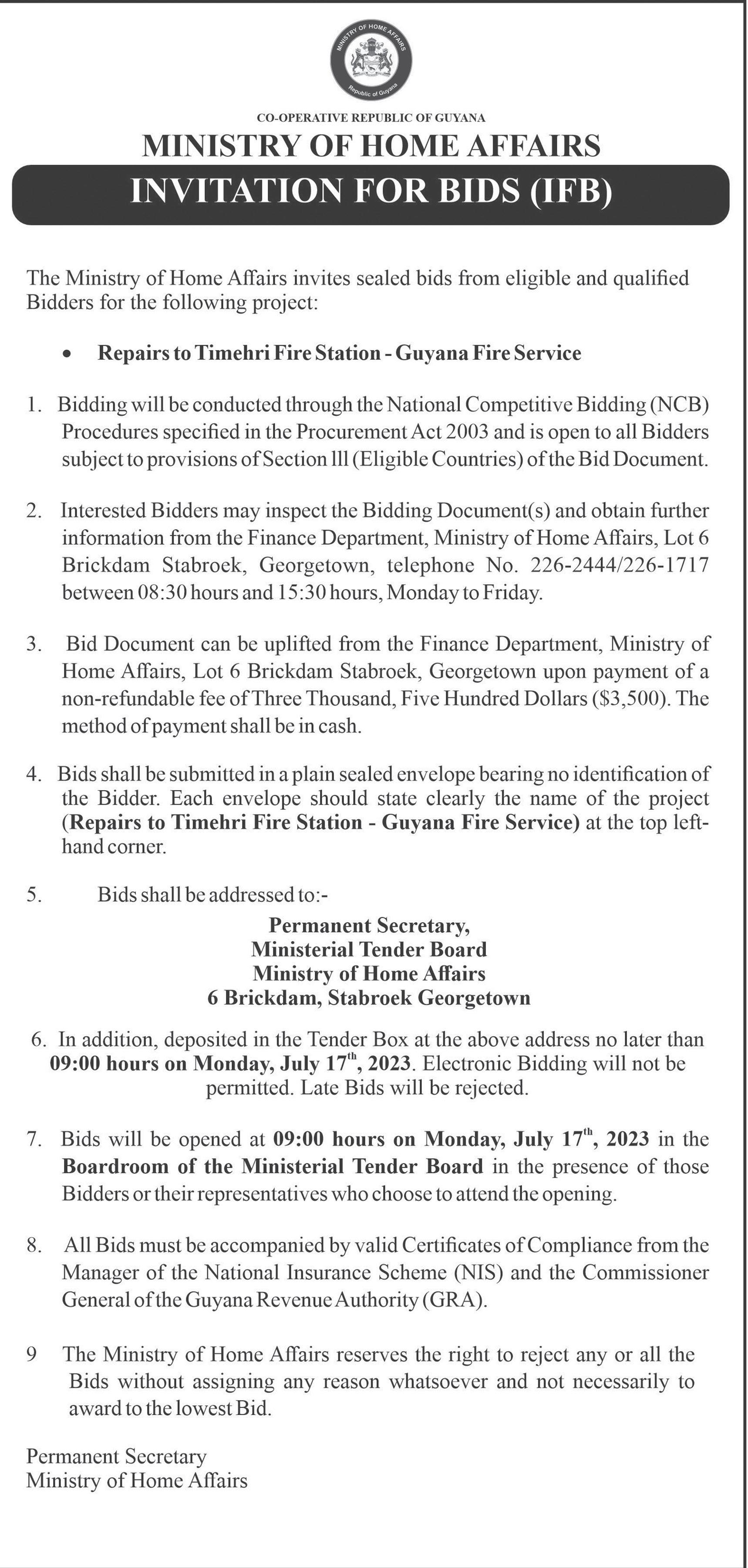
XXX CHRONICLE PEPPERPOT Sunday, July 09, 2023
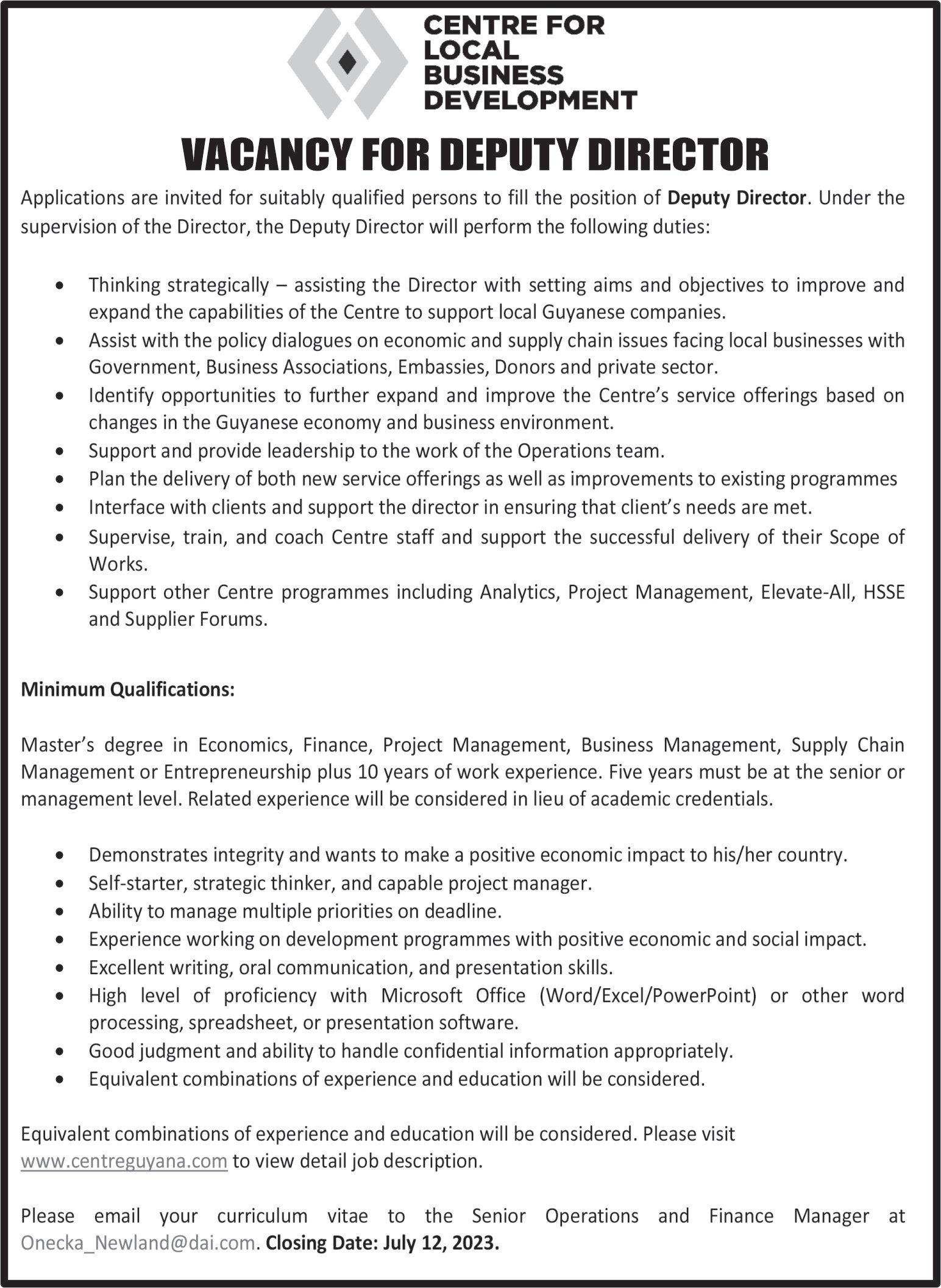
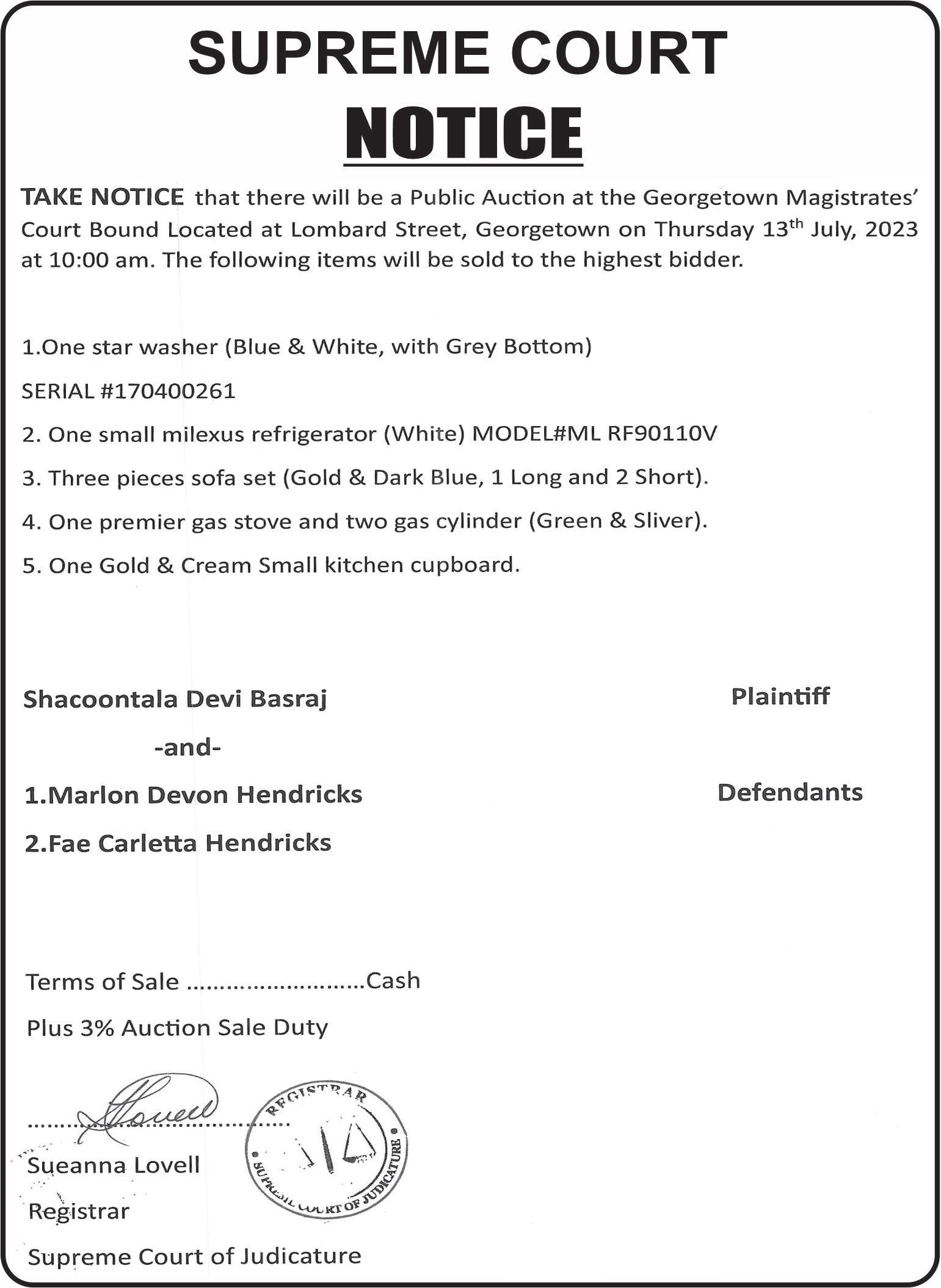


XXXI CHRONICLE PEPPERPOT ― Sunday, July 09, 2023
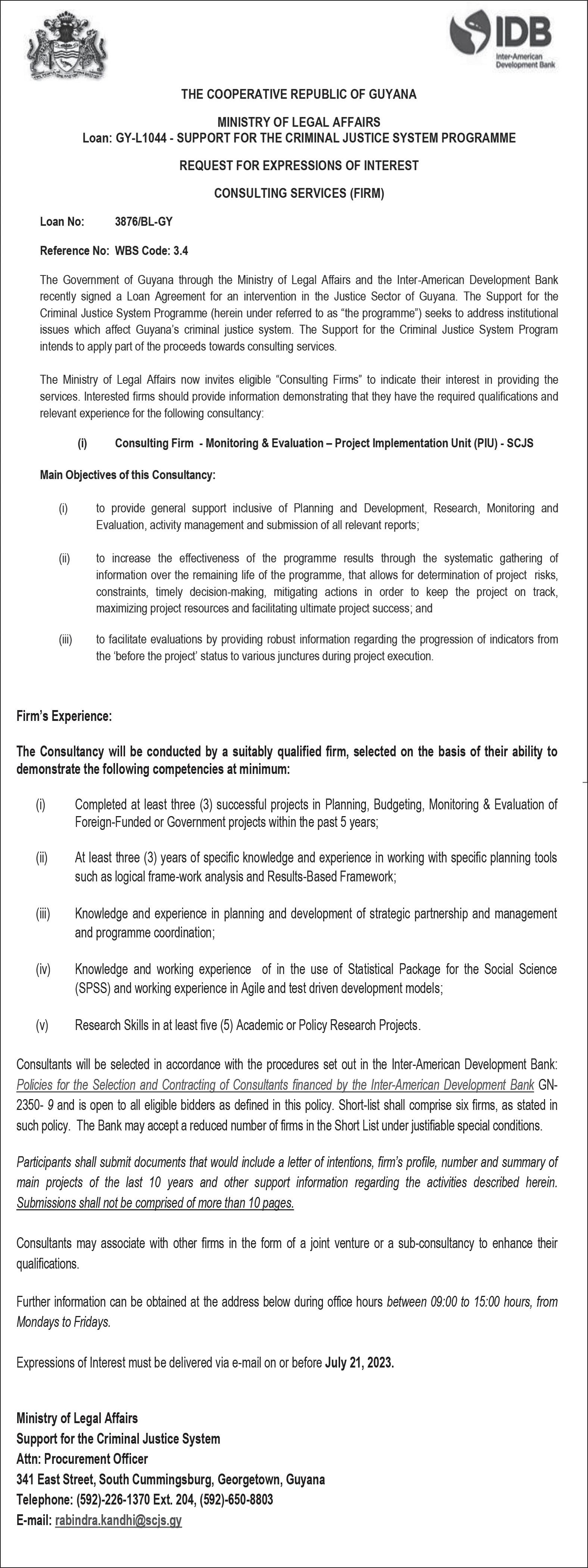
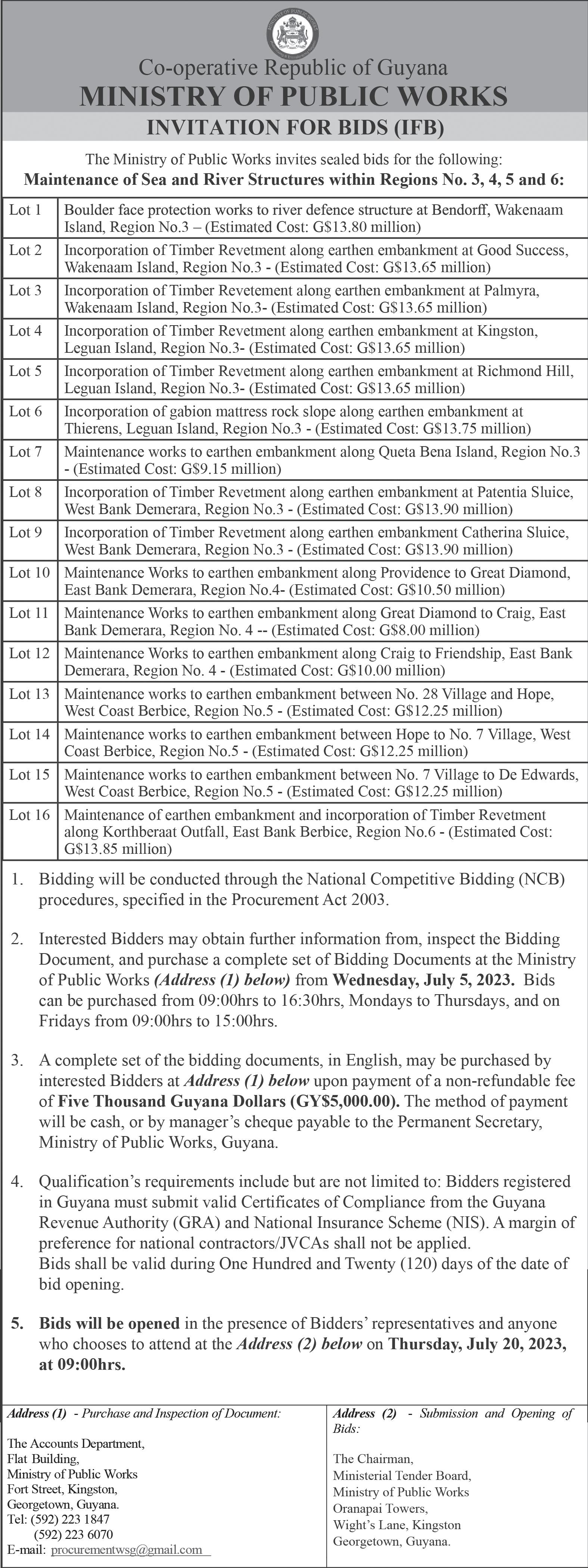
XXXII CHRONICLE PEPPERPOT Sunday, July 09, 2023
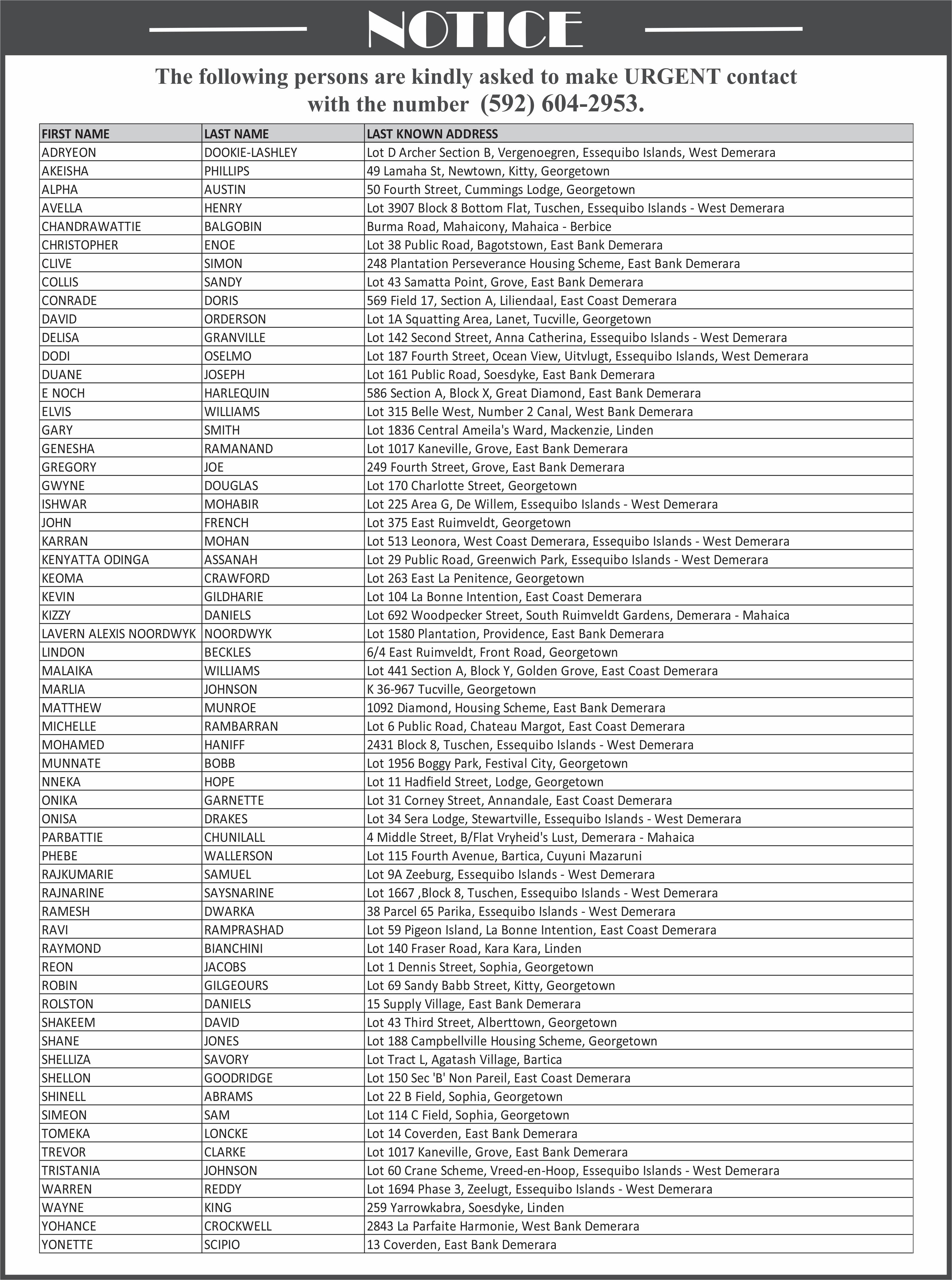
XXXIII CHRONICLE PEPPERPOT ― Sunday, July 09, 2023
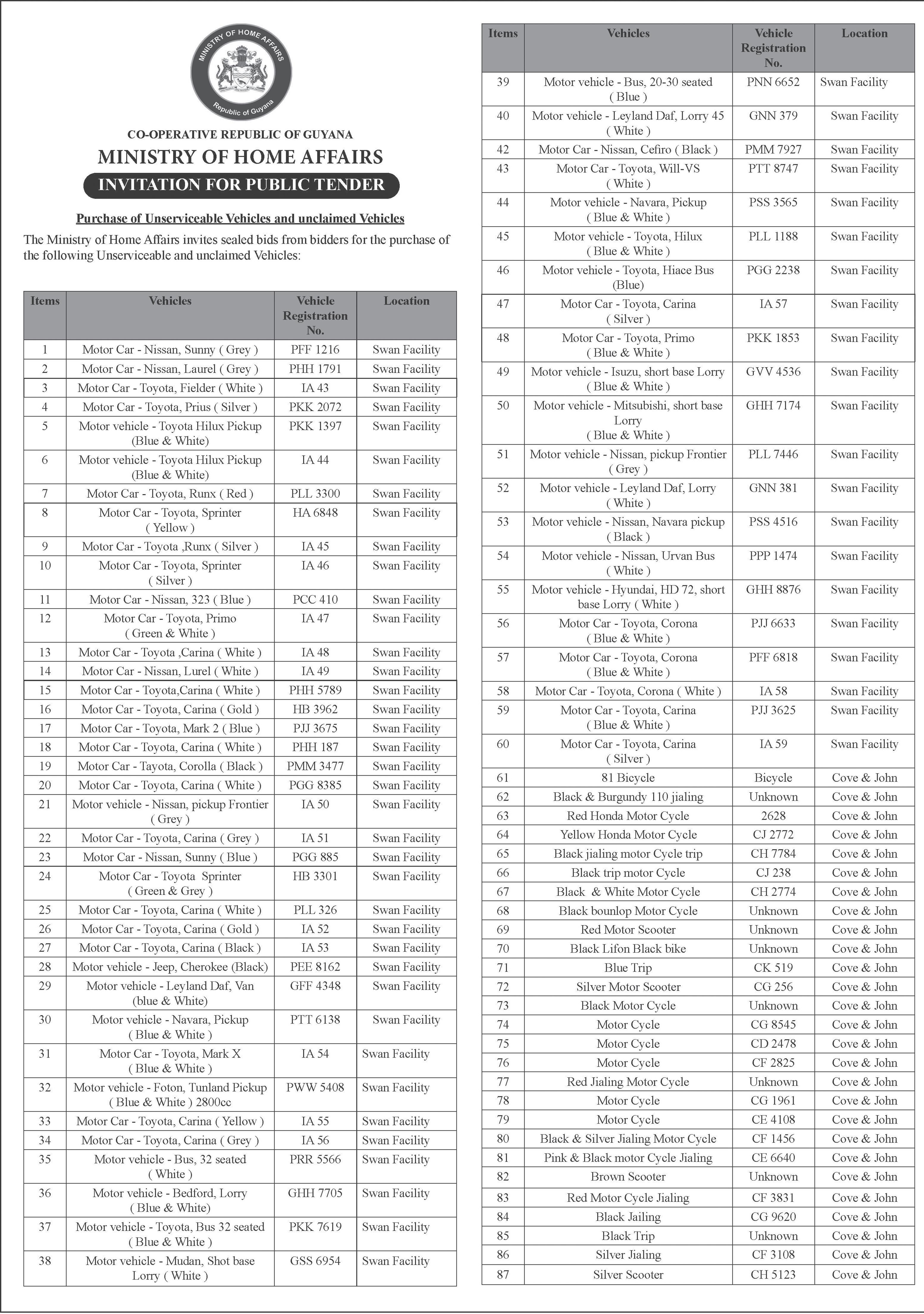
XXXIV CHRONICLE PEPPERPOT Sunday, July 09, 2023

XXXV CHRONICLE PEPPERPOT ― Sunday, July 09, 2023

XXXVI CHRONICLE PEPPERPOT Sunday, July 09, 2023
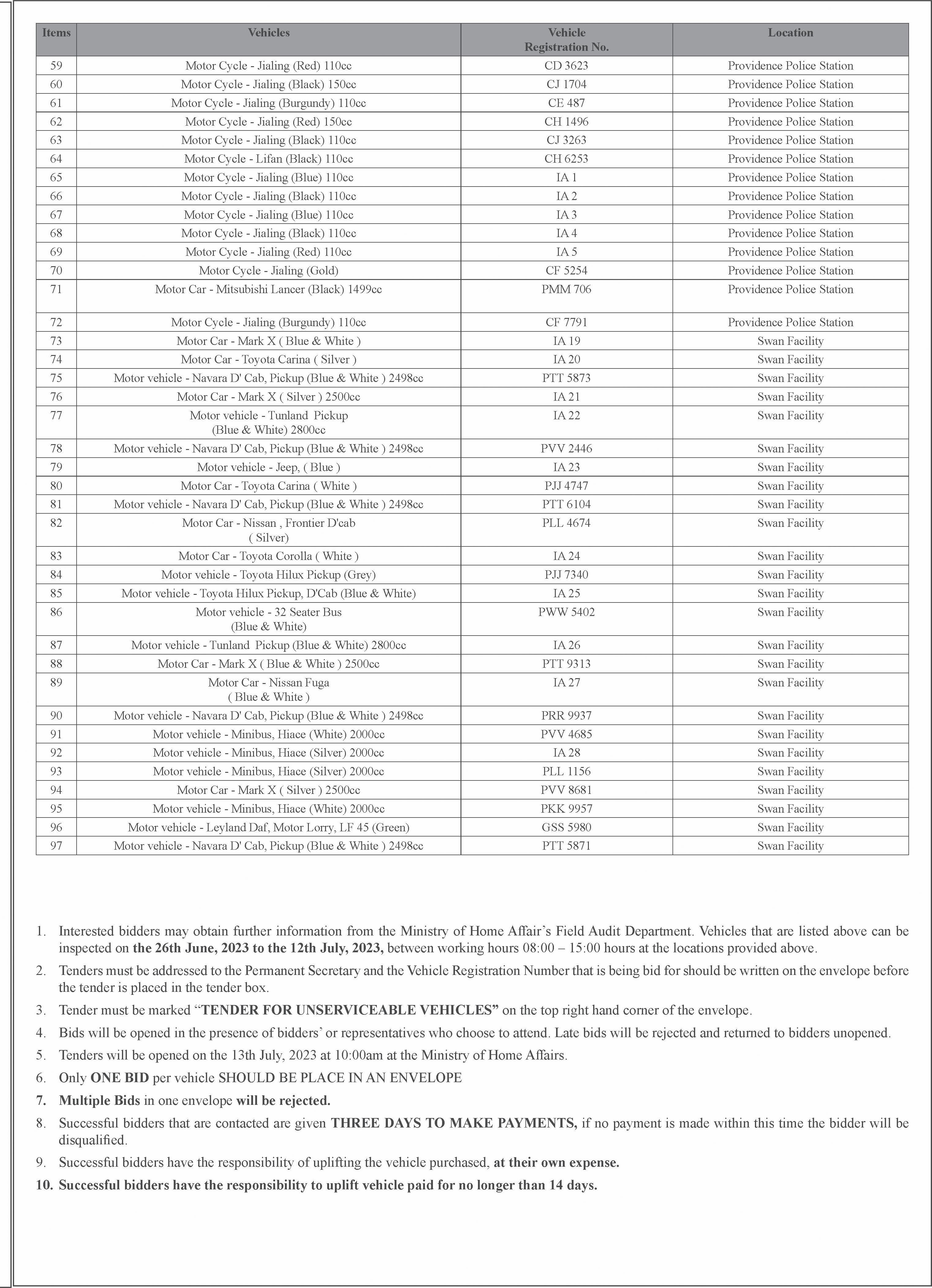
XXXVII CHRONICLE PEPPERPOT ― Sunday, July 09, 2023
THOUGHT FOR TODAY
A man who could make so vile a pun would not scruple to pick a pock- et.
JOHN DENNIS (1657-1734) The Gentleman’s Magazine (1781), p.324
STUDY SUCCESS
Dear Student, Welcome dear friend. Your study entails lots of reading. Whether or not you wear glasses, you should exercise your eyes from time to time to strengthen their muscles. We proffer
July 09, 2023
suggestions: 1. Rest your eyes every half-hour or so by looking into the distance or by closing them momentarily. 2. Rotate the eyes slowly, without moving your head. Move your eyes far to the right; then to the left; then up; and finally, down. Learning needs much support.
Love you.
IMPROVING YOUR READING
Brief conversation about reading for specific information.
How you read depends upon your purpose for reading. Suppose you are reading selectively to locate specific information. This is what you should be mindful of:
● choose to read only part of the text
● start from anywhere as a gateway to enter the text, e.g., contents page, index, headings, pictures and captions, etc.
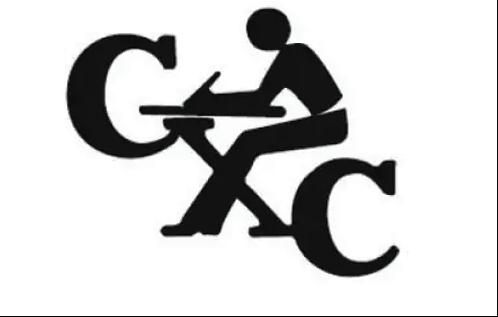
● read the visual elements which have few or even no words (photographs, diagrams, maps, etc.) for meaning
● read the diagrams, maps, graphs from bottom to top; from right to left; in a circular, random or zigzag way, scanning, skimming which depend on purpose
● pick up the book and start anywhere in it for a different purpose

● stroll through backwards
● put words and visual elements together to make complete sense
● read and make notes as you read.
All right. The takeaway here is to choose to read “the whole story” or to read selectively your information text.
Something to Do: Write a recipe for your favourite milk shake or smoothie where you direct the reader through a sequence of stages of ingredient measurements and then explanation on how to make the smoothie.
THE POEM
Analysing and interpreting the poem
Notes: 1) The stanza: The stanza makes up the basic unit structure in most poems. It is any group of lines that forms a division of a poem. It may be based on the number of lines, rhyme scheme, rhythm, or other devices of repetition.
2) Analogy: Analogy is an extended comparison showing the similarities between two things. It is often used for illustration (to explain something unfamiliar by comparing it to something familiar) or for argument (to persuade that what holds true for one thing
holds true for the thing to which it is compared).
The Sound of the Sea
The sea awoke at midnight from its sleep, And around the pebbly beaches far and wide I heard the first wave of the rising tide Rush onward with uninterrupted sweep; A voice out of the silence of the deep, A sound mysteriously multiplied As of a cataract from the mountain’s side, Or roar of winds upon a wooded steep. So comes to us at times, from the unknown And inaccessible solitudes of being, The rushing of the sea-tides of the soul; And inspirations, that we deem our own, Are some divine foreshadowing and foreseeing Of things beyond our reason or control.
(Henry Wadsworth Longfellow’s “The Sound of the Sea”)
Something to Do
1. Give the meaning of each word or phrase: uninterrupted, cataract, inaccessible, deem; pebbly beaches, mysteriously multiplied, wooded steep.
2. What figure of speech is used in the first line of the poem?
3. The poet describes many sounds of the sea. What sounds of the sea are described in the first eight lines of the poem?
4. In lines 9-14 Longfellow draws an analogy. Explain the analogy in your own words.
5. Look for a poem structured with stanzas. Explain what is said in each and make note of differences in subtopics one from the other.
THE PASSAGE
Comprehending a passage
Maria woke up early. She lay motionless on her bed with her eyes closed, somewhat afraid to look outside. She listened for some clues that would tell her what kind of day it was. She heard the birds singing and people whistling as they walked past her house. She kicked off the blanket, put on her slippers and rushed to the window. The air was full of the smell of tree blossoms. The sun was shining brightly. She and her friends had got the kind of weather they wanted.
1. Maria was afraid to look outside. Why was she afraid?
(A) She was afraid of the sun. (C) She was afraid of the dark.
(B) She was not bold enough. (D) She was afraid of her grandmother.
2. Maria and her friends had probably planned to
(A) spend the day outdoors. (C) sweep and clean the yard that day.
(B) spend the day indoors. (D) do their homework together.
GRAMMAR
Meanings of expressions
1. Paul had his back to the wall. He couldn’t go through the swamp, and he couldn’t stay in the field because the dogs would find him.
To have one’s back to the wall is to be
(A) angry. (C) afraid of prevailing dark clouds
(B) in a difficult position. (D) safe and sound.
2. The insurance company once owned millions of dollars but now the company is on the rocks and may soon be bankrupt.

On the rocks means
(A) in a strong position. (C) on solid ground.
(B) paying out hard-earned cash. (D) facing ruin.
XXXVIII CHRONICLE PEPPERPOT Sunday, July 09, 2023
Choosing your dentist
HOW should you go about choosing a dentist? Should he/ she be the one who is in the neighbourhood? That would be fine if you are a gambler by nature, so the chance of you being right would be the same as winning the lotto. That dentist may be good, or maybe not. You only know that they are conveniently located near your home. Should you ask someone you know to recommend one? Maybe, but it is perhaps that person who is satisfied with the dentist’s work and not you, so it is their opinion.
Even when one considers that in this country, there are about 12000 persons for every practising dentist, there could be some problem when choosing which dentist to go to. Although many persons have little or no choice when deciding who their dental practitioner should be, since they attend a public clinic, choosing a dentist is no small matter these days.
Dentistry, like medicine, accounting or law, is a profession. It is not a business, although there are business practices and financial aspects to discuss and employ in the practice of these professions. They are looked upon as being different
cheaper in the long run.
Finally, dental care is a two-way street. Each time the machine breaks down, it gets harder and harder to fix, and

it will not work as well as before. If you want success, become a working partner with your dentist. If you find this impossible with the dentist you picked, try another one.
from a business.
Professional people generally get more respect, and more is expected from them. What distinguishes a business from a profession, at least in the eyes of the public? For one thing, business is characterised by the sentiment of “Let the buyer beware”. In other words, anything the seller can get away with goes. We have consumer protection laws because consumer needs protection. We have heard about quality control and advertising gimmicks.
A profession should be a field where the public retains people of integrity, honesty, trustworthiness, and sincerity. That is not to say that we do not find these admirable qualities in business or business people.
Try asking a dentist to explain his findings in your mouth, treatment details, clinical expectations and follow-up visits. Ask about the available options and price of each. Carefully make a mental note of his reaction to your probing questions. Prospective patients should be astute enough to recognise and avoid dentists who use dentistry more as a business than a profession. If your dentist should ever say, “You’ll get the final cost when I’m finished”, beware and don’t fall for that gimmick.
The world of dentistry for the layman is an unknown world full of pain, superstition, misinformation and apprehension. For this reason, this author decided to start this column nearly 14 years ago. Since then, I have always tried my best to have a weekly publication. My objective is to arm the dental patients with basic dentistry knowledge so they cannot be easily fooled.
The profession becomes culpable whenever there is a general lack on the part of dental personnel to respond appropriately to the patient’s needs while allaying fears and apprehensions. Dentists owe the public for the privileges and financial security they enjoy and must pay with an outgoing concern for their dental well-being.

Your choice of a dentist can affect your dental health for the rest of your life. It should not be a “crisis choice” when you are in pain. At such times you cannot think rationally and make an intelligent choice. If the dentist you get is not your kind of person, thank him, pay him and leave. It will be a lot

XXXIX CHRONICLE PEPPERPOT ― Sunday, July 09, 2023

XL CHRONICLE PEPPERPOT Sunday, July 09, 2023

 Al Creighton in what his colleagues called his natural element as he plays the drums during a recording session for ‘Anansi’ (Photos by Shaniece Bamfeild)
Al Creighton in what his colleagues called his natural element as he plays the drums during a recording session for ‘Anansi’ (Photos by Shaniece Bamfeild)

 By Marissa Foster
By Marissa Foster
















































































































